BEYOND
LUXURY TASTE, TRAVEL AND STYLE

GRAND MARNIER'S CELLARS IN COGNAC
OFF THE BEATEN TRACK IN PORTUGAL'S NORTH ELISA C-ROSSOW'S TIMELESS STYLE
EXPLORE DIVERSE LANDSCAPES IN THE

LUXURY TASTE, TRAVEL AND STYLE

GRAND MARNIER'S CELLARS IN COGNAC
OFF THE BEATEN TRACK IN PORTUGAL'S NORTH ELISA C-ROSSOW'S TIMELESS STYLE
EXPLORE DIVERSE LANDSCAPES IN THE
COLOURFUL INTERIORS IN TORONTO & PALM BEACH AND HANNAH SUNDERANI'S MUSHROOM BOURGUIGNON
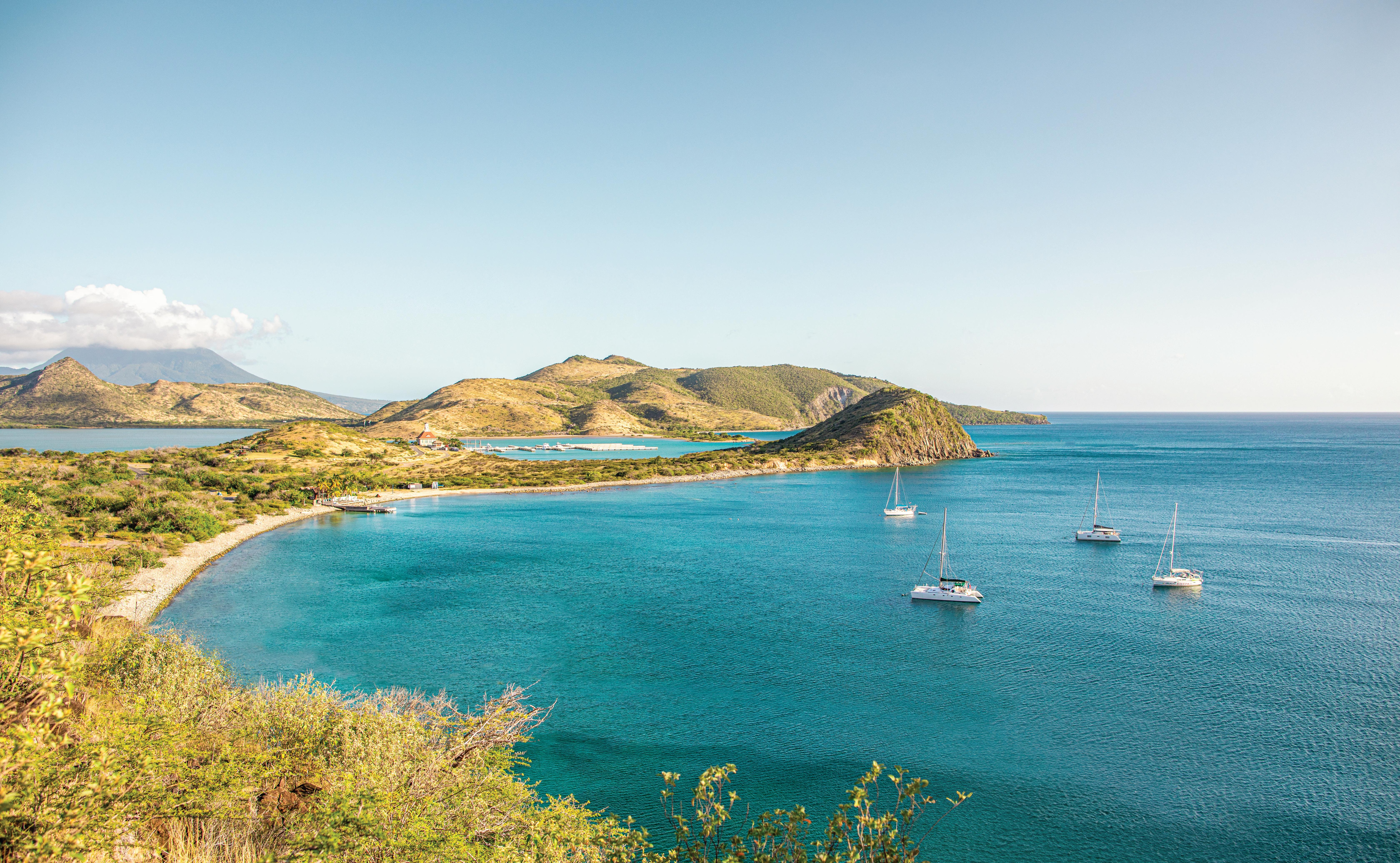
More than a vacation or an escape, your days in St. Kitts— however many they may be—will be reinvigorating. The pure mountain air atop Mount Liamuiga, the rose gold glow of the hills at sunset, the full bodied laughter shared with new Kittitian friends. You’ll collect moments like these and see how they fill you.

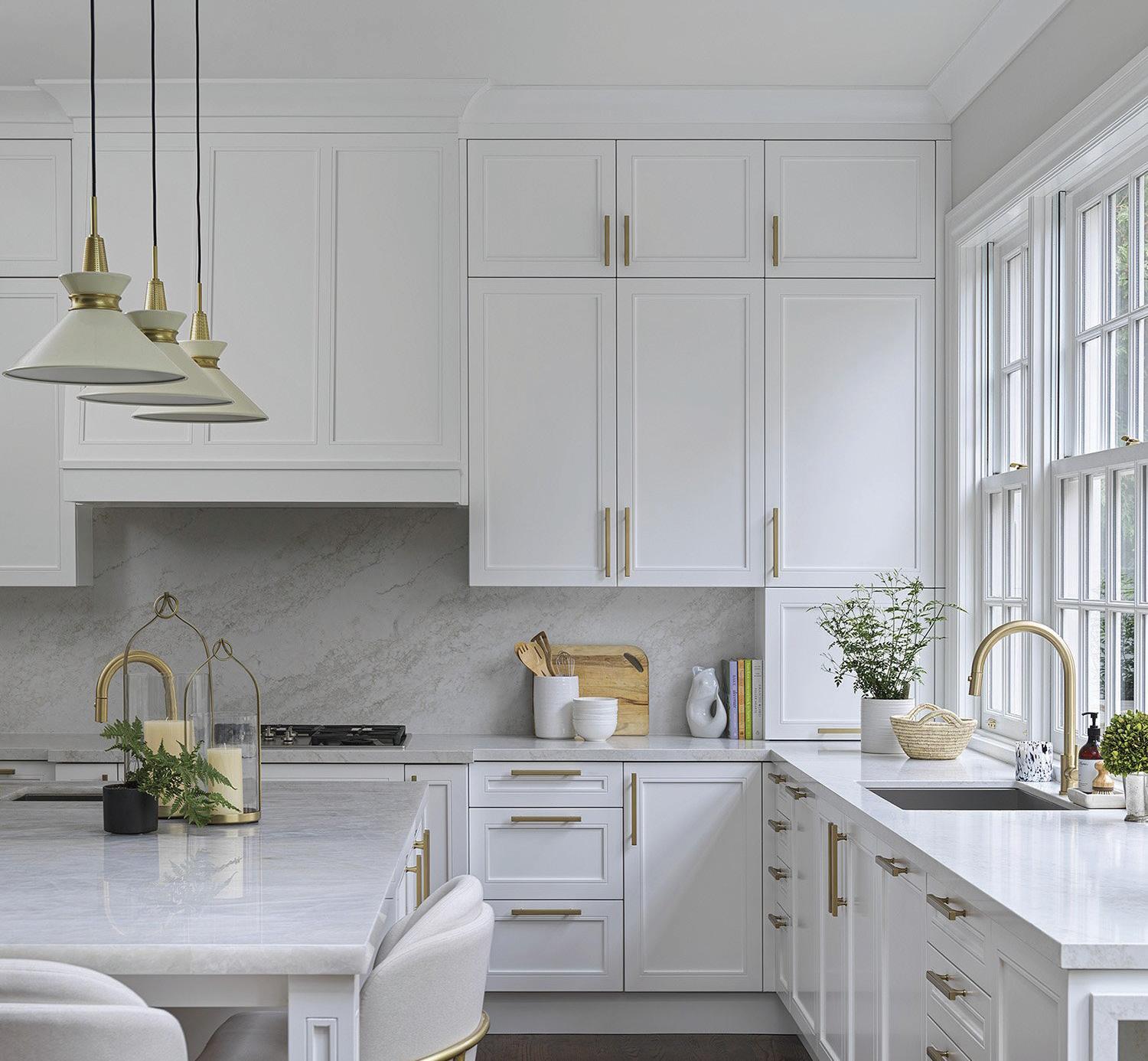


Yorkville Design Centre is expanding from the sleek city to cool cottage country. After 40 years as a Downsview Kitchens dealer, we’ve dared to invite new directions and welcome Ateliers Jacob as part of our designer palette. Imagine chic style in your Muskoka pine, sophistication in your granite. Visit us in beautiful Huntsville and make us part of your lifestyle.
www.huntsvilledesigncentre.ca
Island-hopping and exploring the diverse landscapes of Tenerife, Gomera and Lanzarote.
Explore beyond the beaches and find authentic Portugal in Porto, Lisbon, the Upper Douro Valley and beyond.
Dip into the ancient practice of bathing rituals for health, happiness and sheer bliss in Japan, Germany and Turkiye.
Meet the Canadian designer with a timeless, sustainable approach to style.
A complete interior and exterior revamp of a classic Toronto red brick home to bring in the light.
A Palm Beach aesthetic with an edge fills this Florida home with loads of unique style.
We step inside the cellars in Cognac, France to learn the story behind the iconic bottle of Grand Marnier.
Meet recipe developer and cookbook author Hannah Sunderani in her recently renovated dream kitchen.
Our quarterly collection of things we love and styles we crave. For autumn: sartorial styles in the latest shades of scarlet; sumptuous suede pieces for your closet and the latest spice-inspired fragrances.
The places and spaces we are eager to explore this season.
The products we find ourselves reaching for right now: skincare with super-charged ingredients.
Whether you are thinking about trying dry January or looking for non-alcoholic options for entertaining, here are some of the latest no-lo options.
ON THE COVER: Fuerteventura, Canary Islands. See the story on page 18.



We couldn’t be more thrilled to reconnect with you and unveil our newly rebranded issue, crafted with you in mind.
As we took some time to refresh our look and refine our purpose, our goal was always to come back stronger, more vibrant, and even more in tune with what you love. And here we are—excited to continue this journey together.
This issue includes fresh features, new voices, and expanded sections that we hope will inspire and inform you in ways that feel meaningful. Your support has always been a driving force behind our commitment to delivering high quality content.
We’ve carefully curated each page knowing just how much we’ve missed sharing stories, ideas, and inspiration with you. This rebrand reflects not just a new design, but a renewed dedication to you, our readers, who make every issue possible.
To our advertisers, we appreciate your partnership and trust in us. Our team is eager to create impactful campaigns to engage your target market. Together we can achieve remarkable results.
So dive in, explore, and let us know what you think. We’re back, and we’re just getting started.
Here’s to the new chapter we’re beginning together—thank you for being here with us!!!

ORIANA MANTELLO, PUBLISHER oriana@luxemagcanada.com


THE PRINTED WORD. It’s a beautiful thing. Or at least some of us still believe it to be. Yes, of course we live in a digital world that is— and certainly will continue to be—dominated by all things online. Social media sites old and new, apps that seem to pop up faster than spring daisies and of course, the unlimited, unfathomably immense worldwide web are not going anywhere. But some of us, and perhaps in growing numbers, want to experience the world IRL.
That means when I read a magazine, I prefer to hold a printed copy in my hands. I want to flip the pages, smell the ink, run my fingers over the paper and feel the art and craft that went into bringing it to life.
Reading headlines, daily news (and heaps of email) are fine things to do on a screen. But enjoying a magazine, something that at its heart is intended to be a visual feast, simply is not the same on a screen. The talent and time of writers, photographers, stylists and designers combined with the effort and opportunities granted by the subjects and sources in all those stories is immense. It deserves to be presented in a beautiful package of colourful, glossy pages so that you, the reader, might find joy, insight or inspiration. It’s intended for more than the mere moments we give online posts that battle for our attention. It’s designed for you to enjoy at leisure.
This issue, and this new look, is our return to the grand tradition of print. Much like the creations of the designers, destinations and objects of desire on its pages, it’s best enjoyed in real life.
We hope you enjoy.

HOLLY CRAWFORD, EDITOR-IN-CHIEF holly@luxemagcanada.com

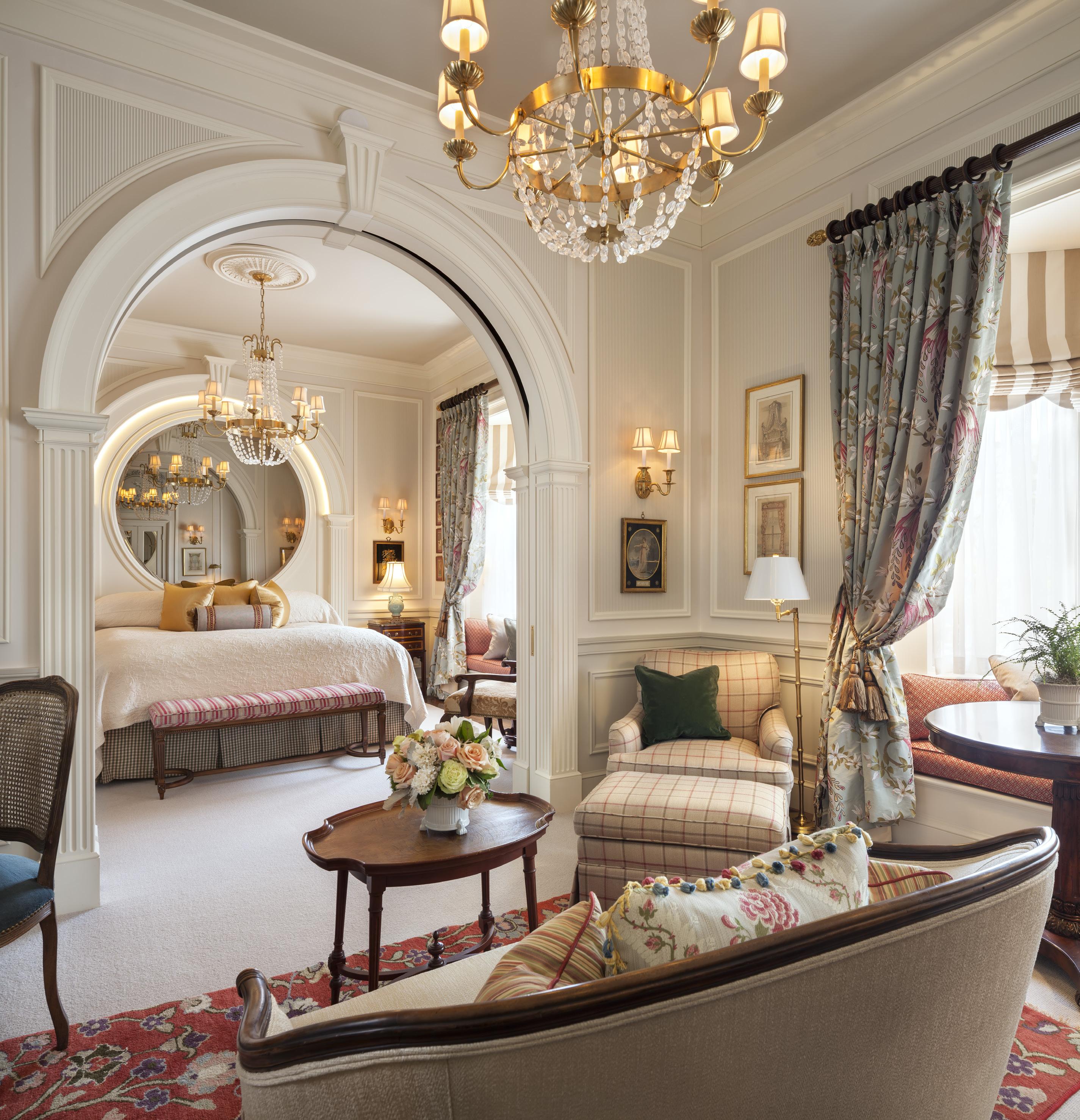





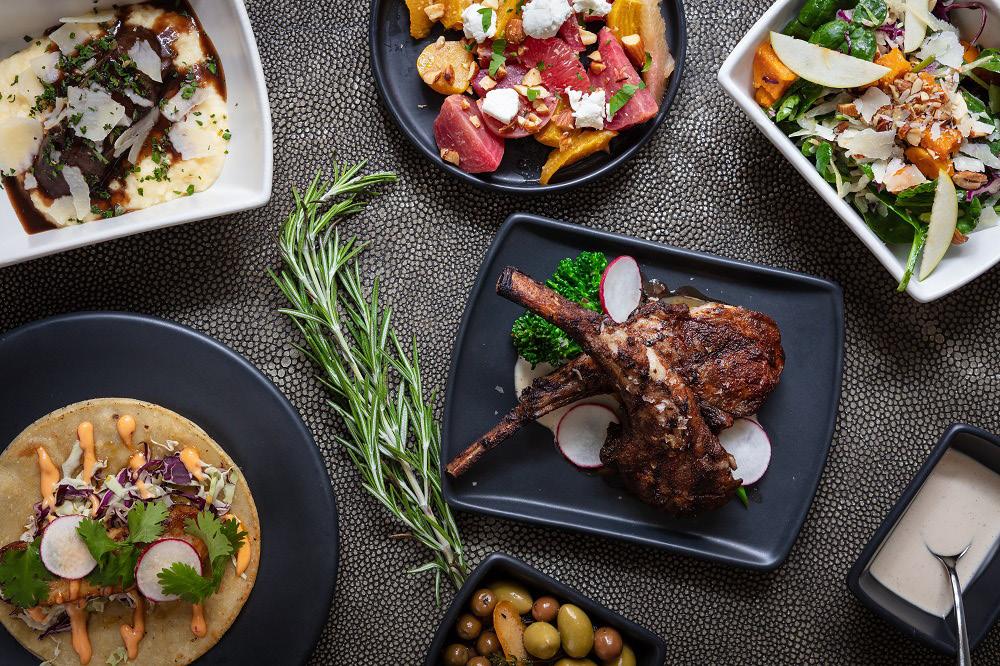


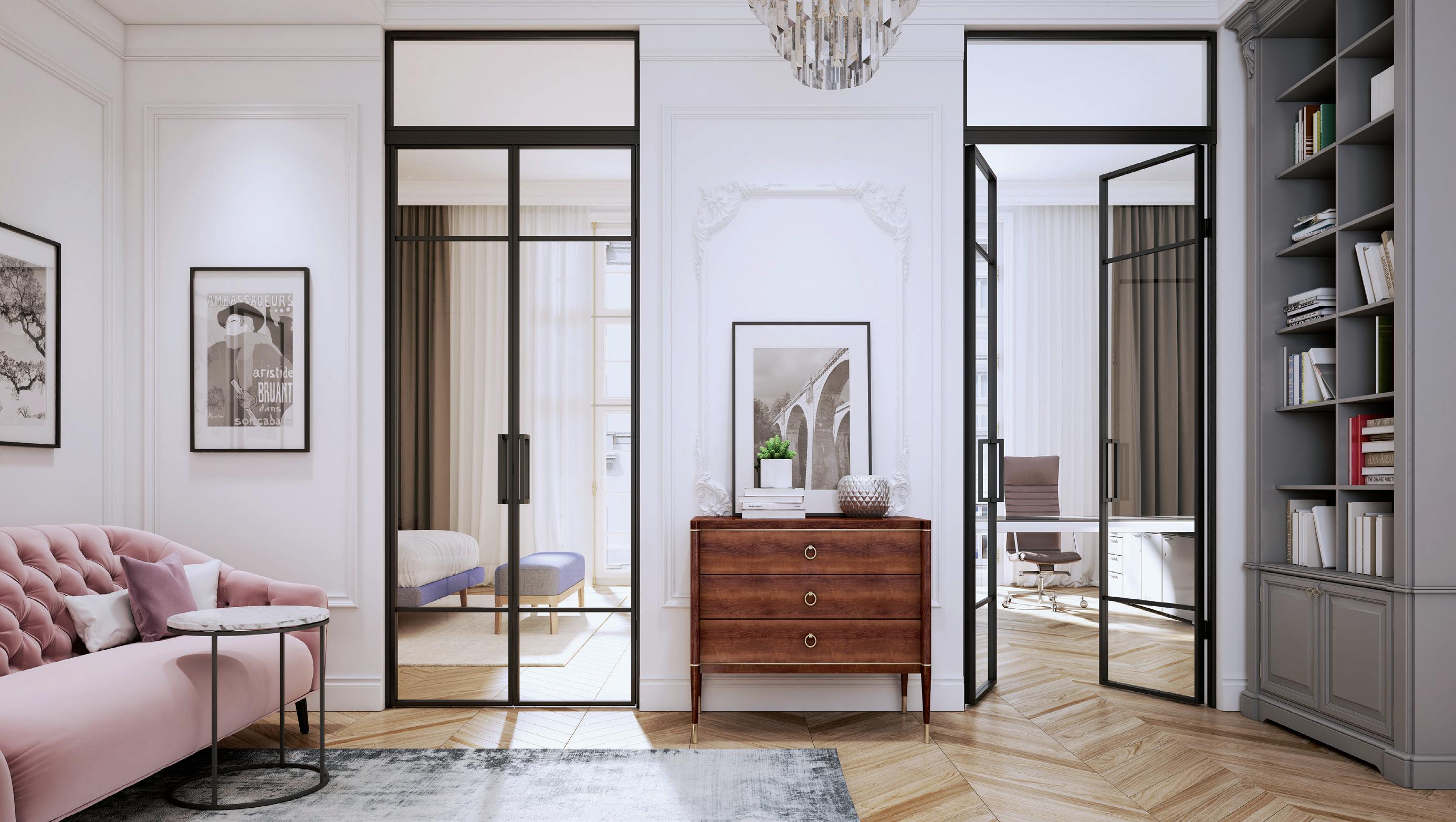
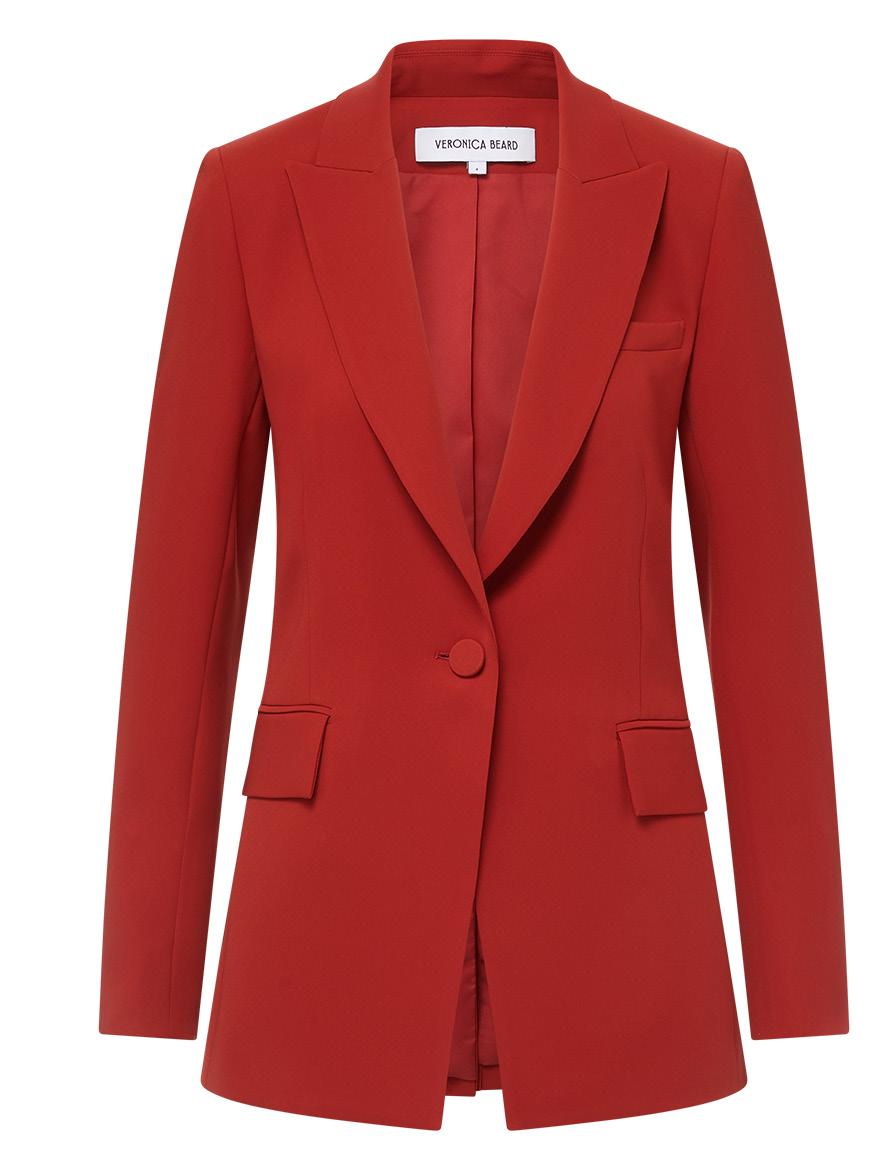
From Canada’s own Veronica Beard, “Long and Lean Dickey Jacket” in crimson is bound to become a closet staple ($898); veronicabeard.ca
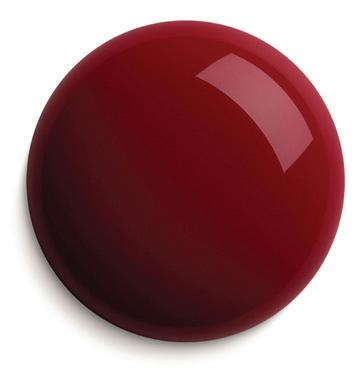
“Explicit” Lipstick by NARS ($54) delivers long-lasting comfort with a satin finish and creamy, smudge-resistant wear. Rosehip seed oil and hyaluronic acid lock in moisture, shown in Last Night; narscosmetics.ca

Slip into a loafer with an edge from Ferragamo. “Chunky Vara Bow Loafer” in oxblood ($1,210); ferragamo.com/shop/ca/en

Kick-up these comfy patent kitten heels. “Lennoxie” ($95) by Aldo; aldoshoes.com/ca/en
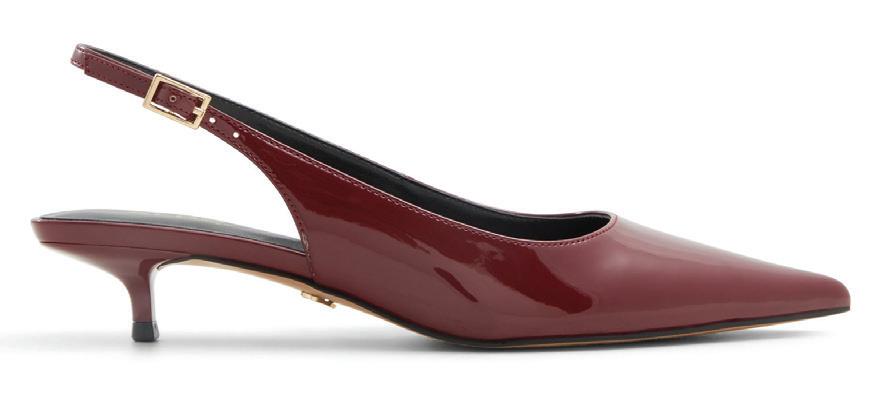
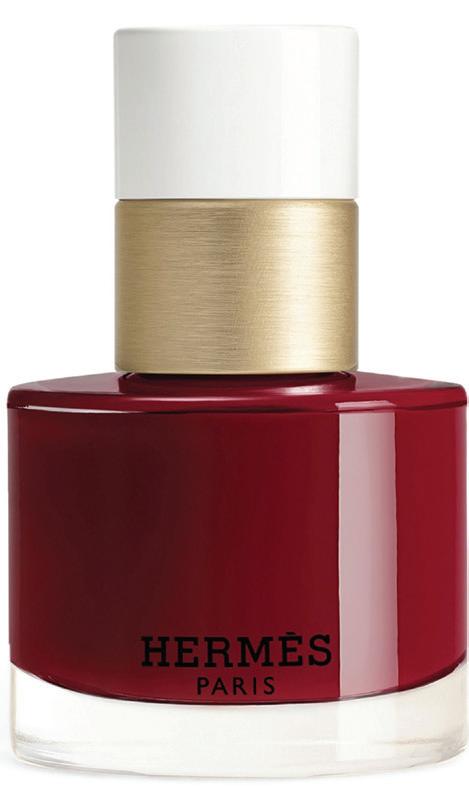


the colour of the MoMeNt is a sultry shade of criMsoN. bordeaux, ruby or black cherry, add a splash of your fave scarlet this seasoN.
Les Mains Hermès nail enamel in 85 Rouge H, exclusive to Holt Renfrew ($63); holtrenfrew.com

Classic bomber style meets cozy sweater comfort in the hybrid “Maple” jacket for men by Moose Knuckles ($895); mooseknucklescanada.com/ca-en
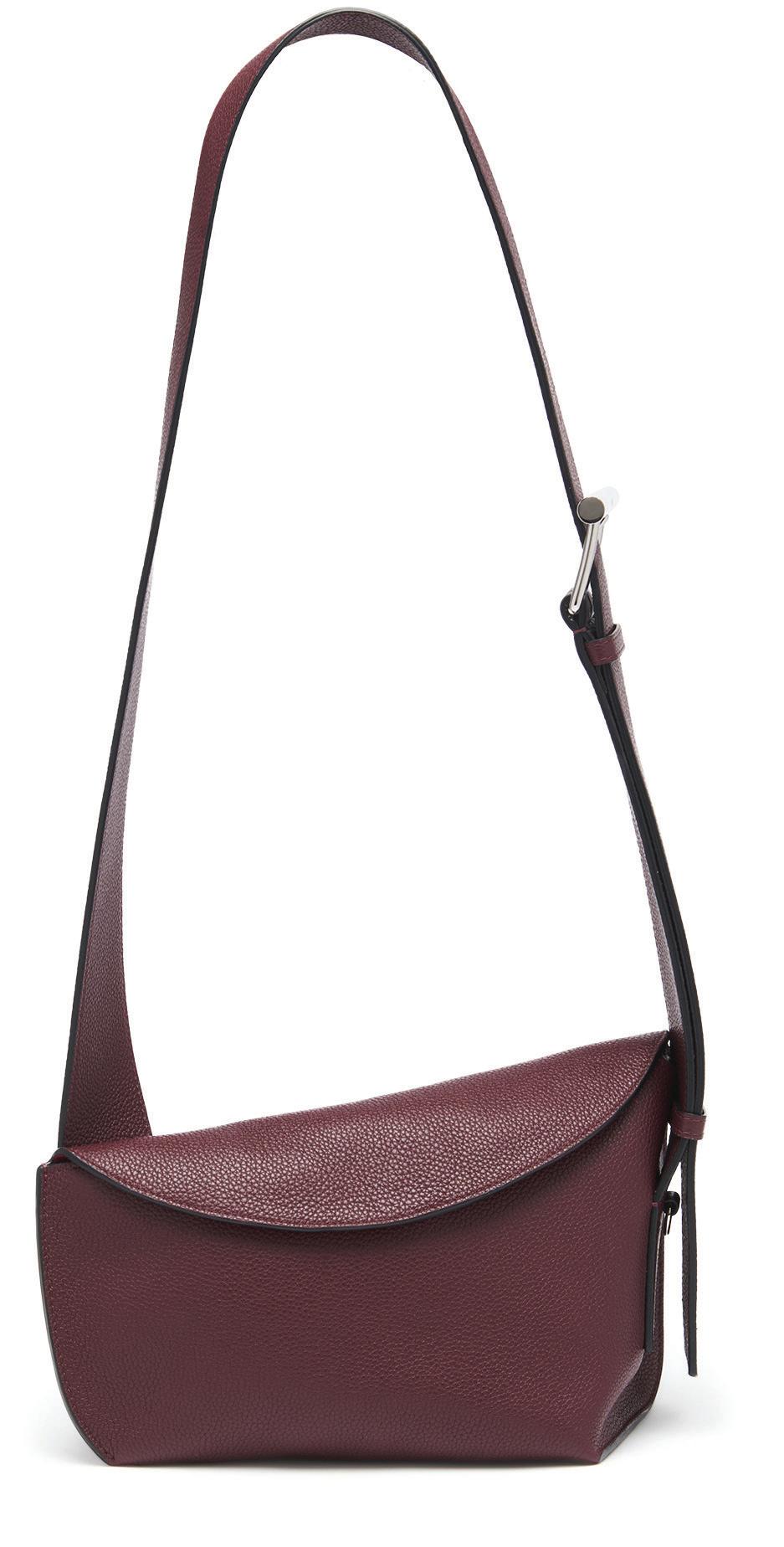
Who isn’t looking for an updated silhouette in this wardrobe essential? Plus, it’s in one of the season’s hottest shades. Asymmetrical and handcrafted from a single piece of textured calf leather, “Sling Bag” crossbody in oxblood by Alexander McQueen ($2,880); alexandermcqueen.com/en-ca


Get that retro vibe with the suede Reebok “Club C Grounds UK” ($120), shown in beige, various colours available; reebok.ca

Suede “Harvey” jacket in navy goat leather by Sézane ($610); sezane.com/ca
in
($1,900); bottegaveneta.com/en-ca


soft, sumptuous texture abounds this autumn, and we are loving the new suede looks.
“Brooke” suede boot by La Canadienne ($625); lacanadienneshoes.com

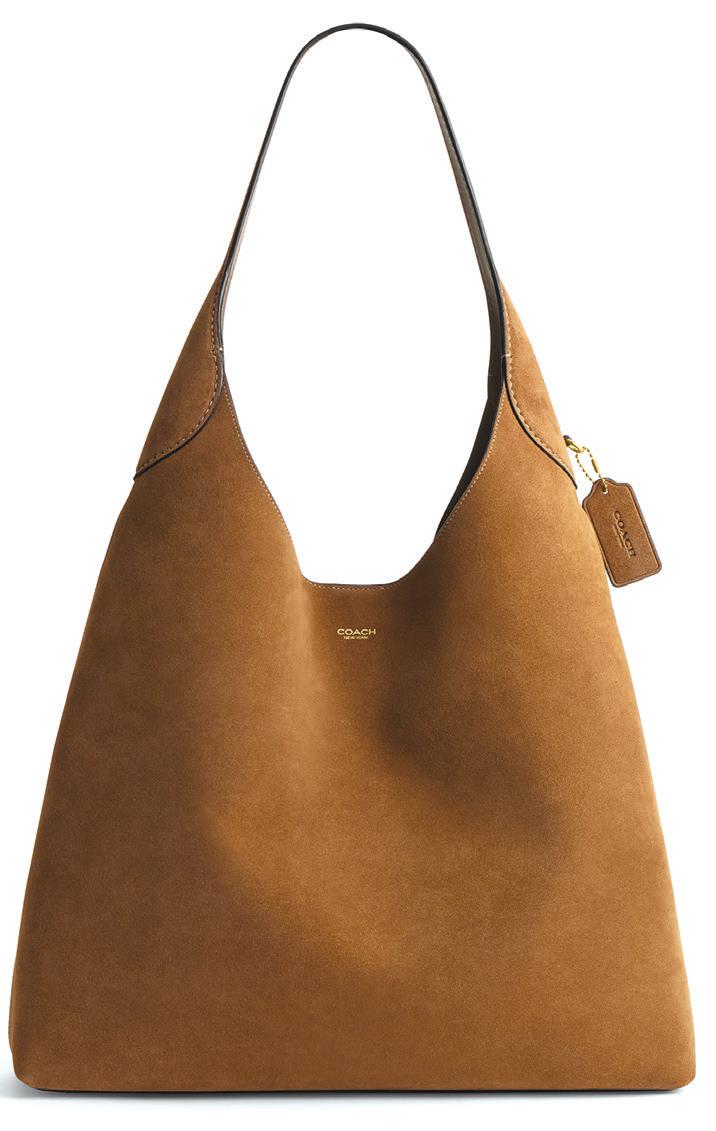
An elegant, minimalist silhouette crafted of durable, luxuriously soft double-faced suede. Brooklyn Shoulder Bag 39 by Coach ($610); ca.coach.com
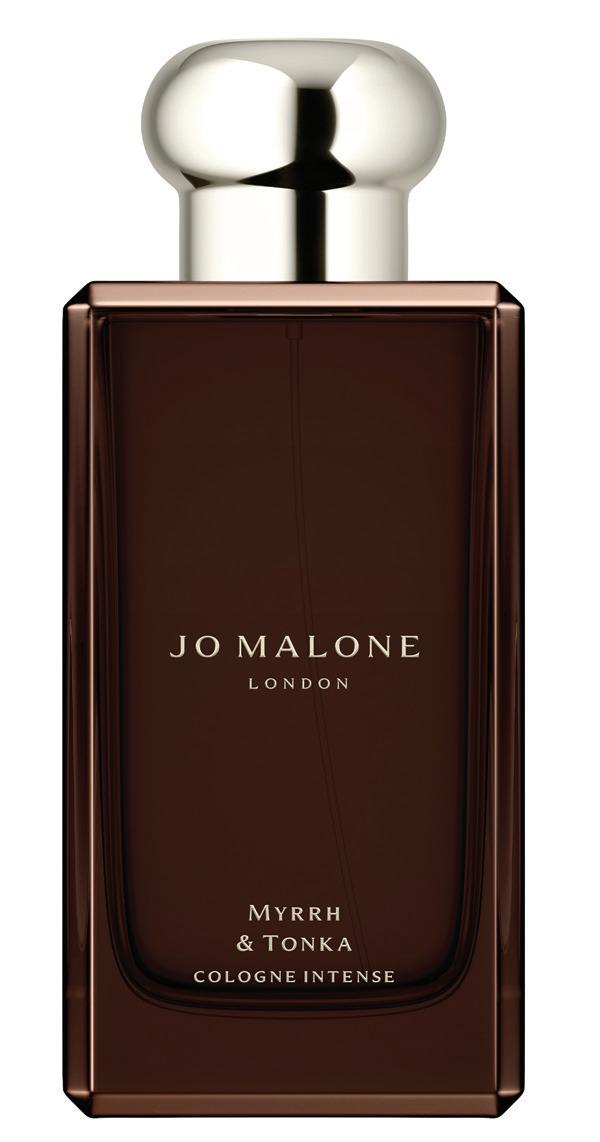
The latest addition to the House of Dior’s Collection Privée Christian Dior: the Esprits de Parfum is Ambre Nuit. Dark musks meld subtly with an accord of spices, dominated by a duo of cinnamon and cardamom paired with an accent of soft amber ($630/80mL); dior.com/en_ca
it’s time to change-up your scent wardrobe to the warm, gourmand notes that feel perfect for autumn.
This fragrance blends the warmth of almond with the creamy richness of tonka bean and lush vanilla, combined with a heart note of omumbiri myrrh. Jo Malone London Myrrh & Tonka Cologne Intense ($210/50mL); jomalone.ca
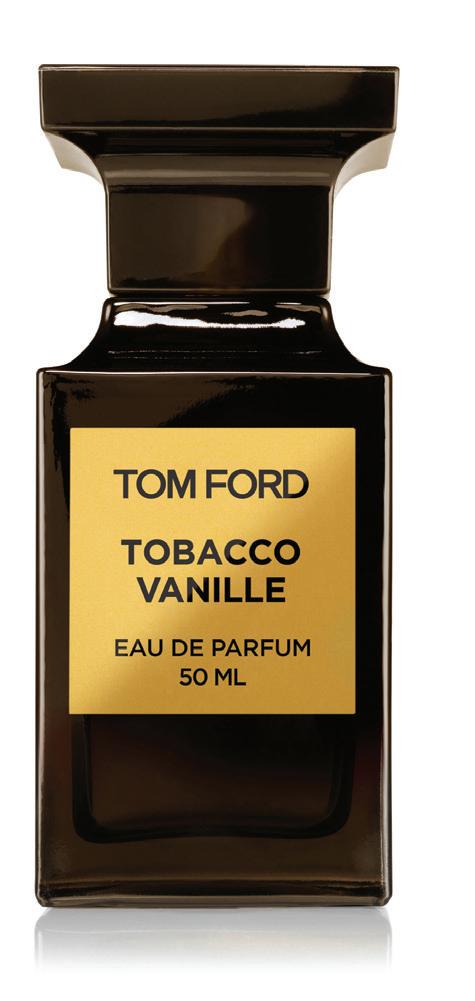
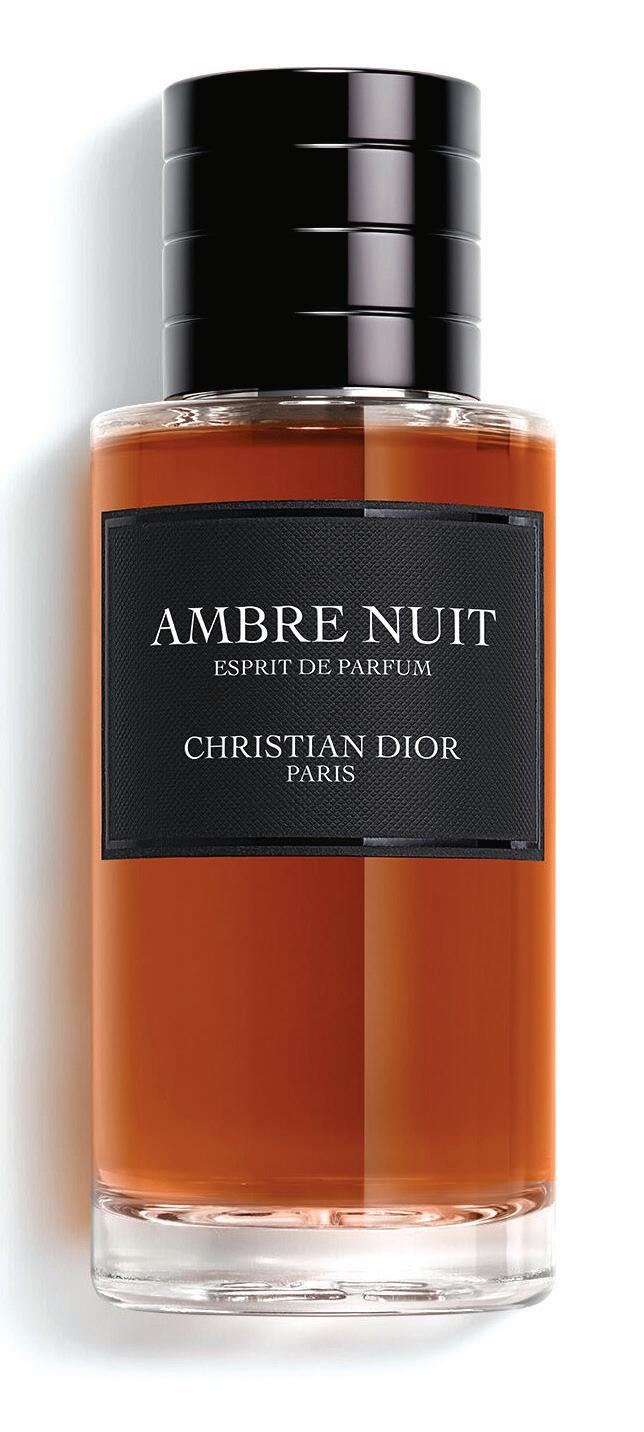

A classic fragrance infused with tonka bean, vanilla, cocoa, dry fruit accords and notes of sweet wood sap for a modern, opulent and heady impression. Tom Ford Tobacco Vanille Eau de Parfum Spray ($390/50mL); sephora.com/ca
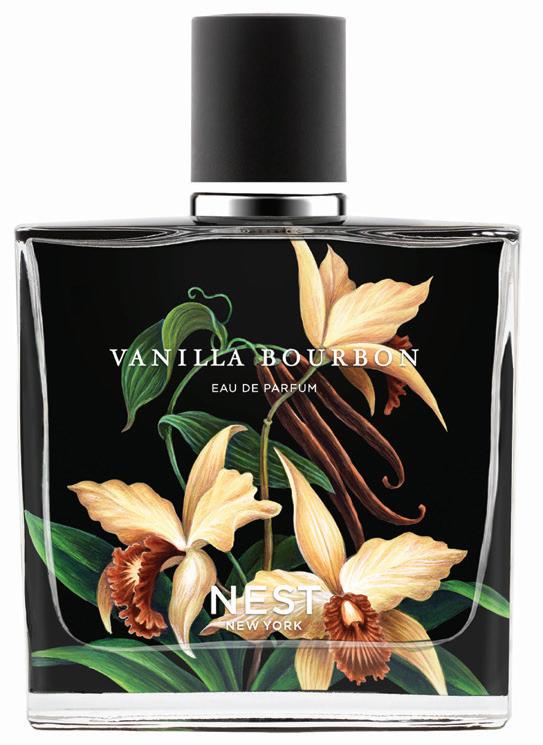

Beloved for its warm floral and spice notes, this new solid version offers a slightly more subtle, intimate interpretation of Rihanna’s iconic scent. Fenty Parfum Solid Fragrance, ($92); fentybeauty.com

An enticing warm gourmand with vanilla bourbon absolute meeting a sophisticated blend of orange bitters and rich brown sugar.
Nest New York Vanilla Bourbon Eau de Parfum ($125/50mL); nestnewyork.com/en-ca
This gourmand, aromatic, woody fragrance takes the signature trio of distinct vanillas from the original Goddess Eau de Parfum and amplifies with a fourth: vanilla wood. A top note of lavender and base of patchouli complete the sophisticated finish. Burberry Goddess Eau de Parfum Intense ($215/100mL); shoppersdrugmart.ca
Inspired by an 18-year aged whiskey, this scent captures the essence of luxury with a blend of wheat absolute, cedarwood and the intoxicating warmth of tolu balm. Kilian Paris Old Fashioned Eau de Parfum ($357/50mL); sephora.com/ca


Empowering Caregivers: Get the Tools and Support You Need for Aging Loved Ones.
Introducing Amintro Family, the social app designed for those who selflessly care for an aging parent, family member, and/or friend. Share resources, find support, and access local services tailored to your unique needs. Together, we make caregiving a little less overwhelming and a lot more rewarding.


Join Amintro Family for Free!
Discover a supportive community ready to help you navigate this important chapter of life.


Join now!

Experience the road (or island) less travelled with a stay at the recently opened One&Only Kéa Island. Set on an untapped island, just a 45-minute speedboat ride from Athens, Greece, the resort celebrates authentic Mediterranean living, surrounded by untouched landscapes, secluded beaches, and charming villages. One&Only Kéa Island is set on a dramatic 65-hectare beachfront site on the rugged west coast of Kéa in the Cyclades. The all-villa resort boasts contemporary cliffside villas, each with its own private infinity pool overlooking the sea. "With a population of just 2,300 residents, this island is incredibly special to its people, and it was our privilege to work with the community to authentically reflect and protect Kéa’s unique spirit," says Philippe Zuber, Chief Executive Officer, Kerzner International. "This off-the-radar destination reveals a different side to the Cyclades, promising a grounding stay that leaves guests feeling relaxed and revitalised.” oneandonlyresorts.com/kea-island
Set the scene for a desert safari in Dubai with a vintage Land

What’s next on your travel wish list? These are a few of our top picks to visit this season. BY HOLLY
CRAWFORD
With temperatures falling into the ideal range for outdoor adventure, this time of year is perfect for a desert safari. Dubai-based luxe tour operator Platinum Heritage offers excursions in vintage Land Rovers through the Dubai Desert Conservation Reserve. Your authentic desert experience could include a morning wildlife safari, storytelling by local Bedouins, dining under the stars or spotting—the once considered extinct—Arabian oryx. visitdubai.com; platinum-heritage.com
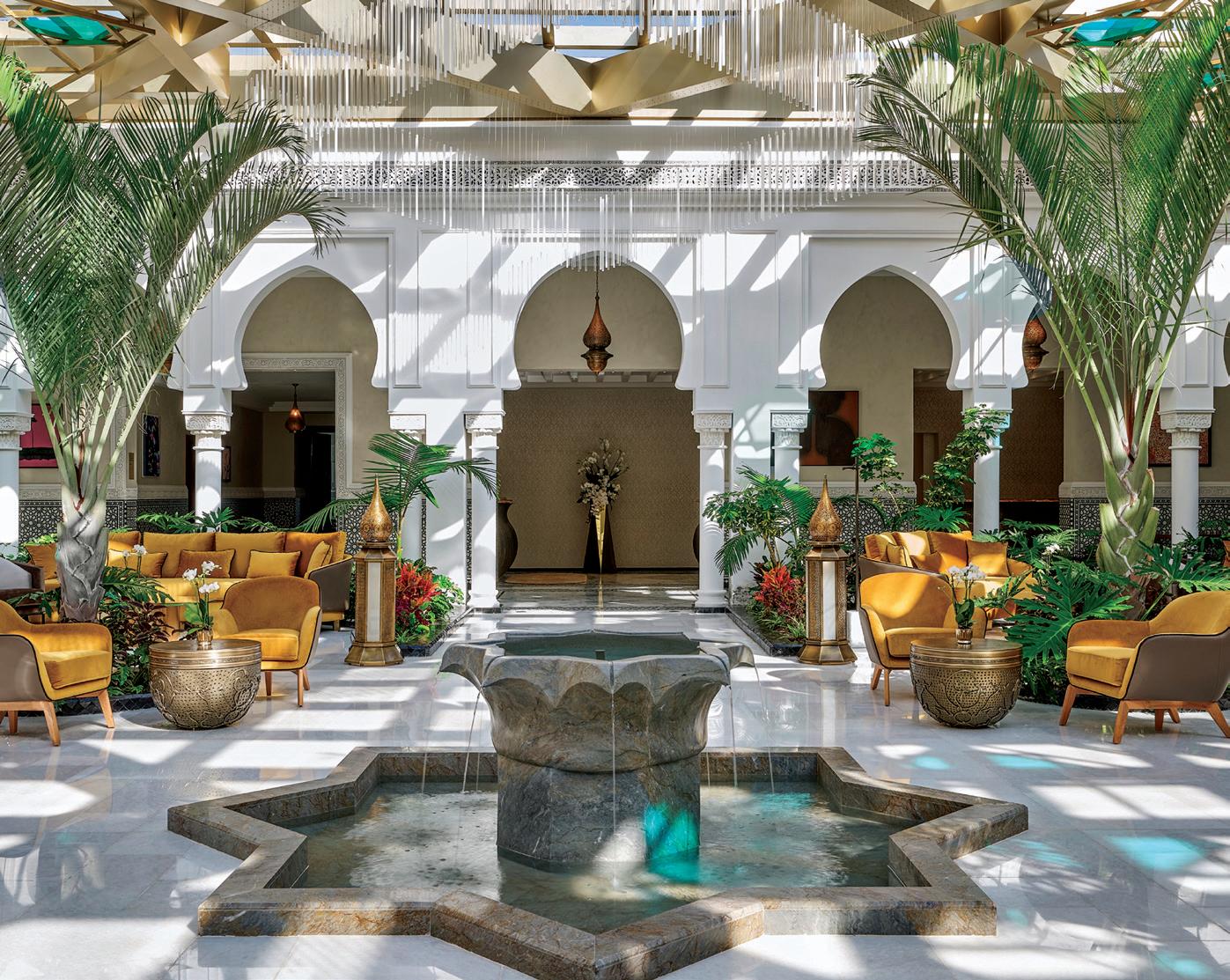
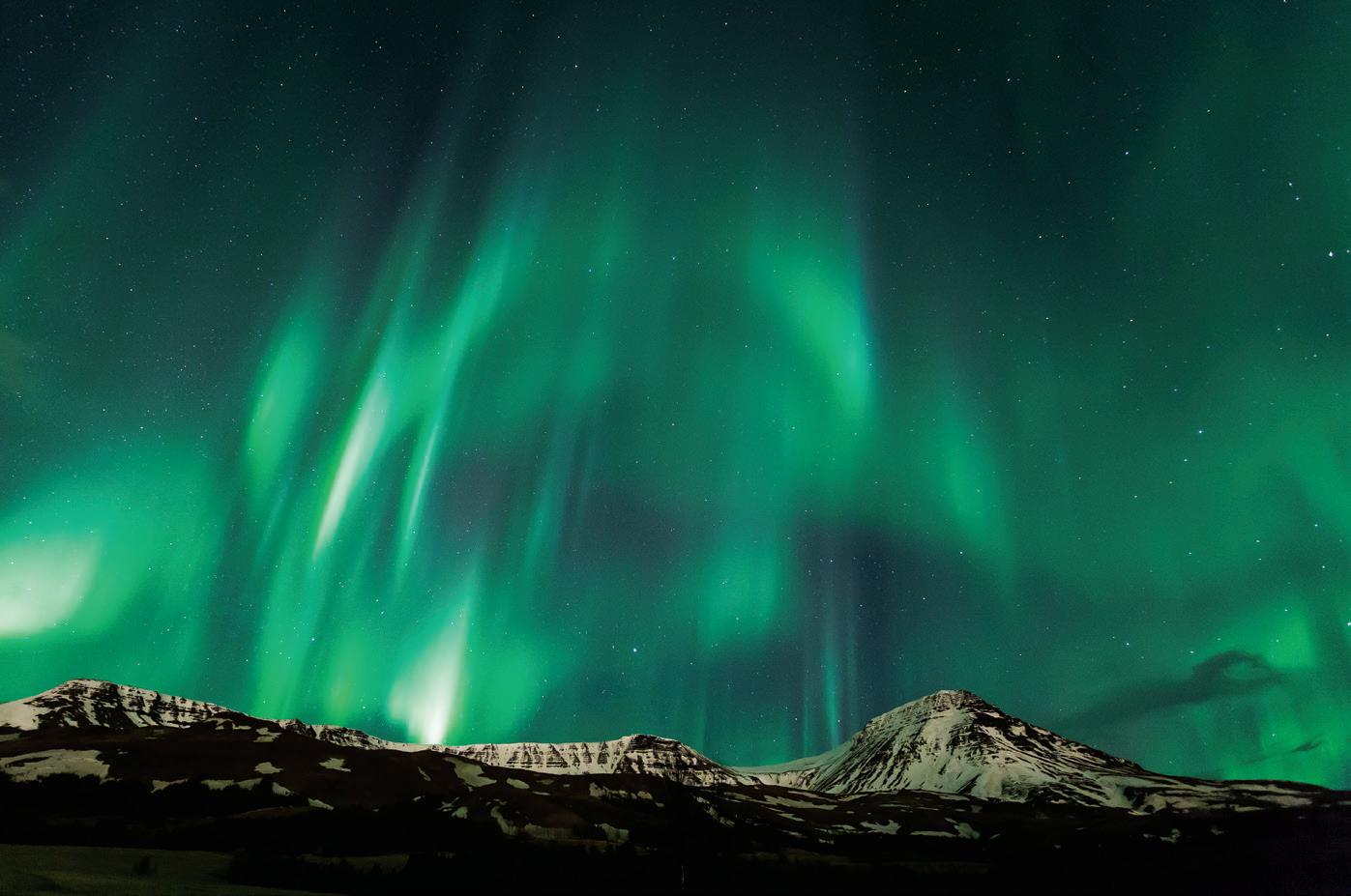
Last spring’s solar eclipse helped highlight the number of travellers booking stays specifically to experience natural phenomena, and the interest in stargazing continues. Visit Iceland from now until March if you’re looking for your best chance to catch incredible views of the aurora borealis. The longer, darker nights of winter increase the possibility of viewing this fickle natural wonder. visiticeland.com
A stay at the newly opened Four Seasons Rabat at Kasr Bahr would be the perfect base for exploring the Moroccan capital, with its location in the historic Quartier l’Océan on the shores of the Atlantic. Sprawling across five acres with accommodations in a mix of historic and modern buildings set amid courtyards, lush gardens and pools, you’ll forget you’re in the midst of the bustling city of Rabat, named a UNESCO World Heritage Site in 2012. fourseasons.com/rabat/
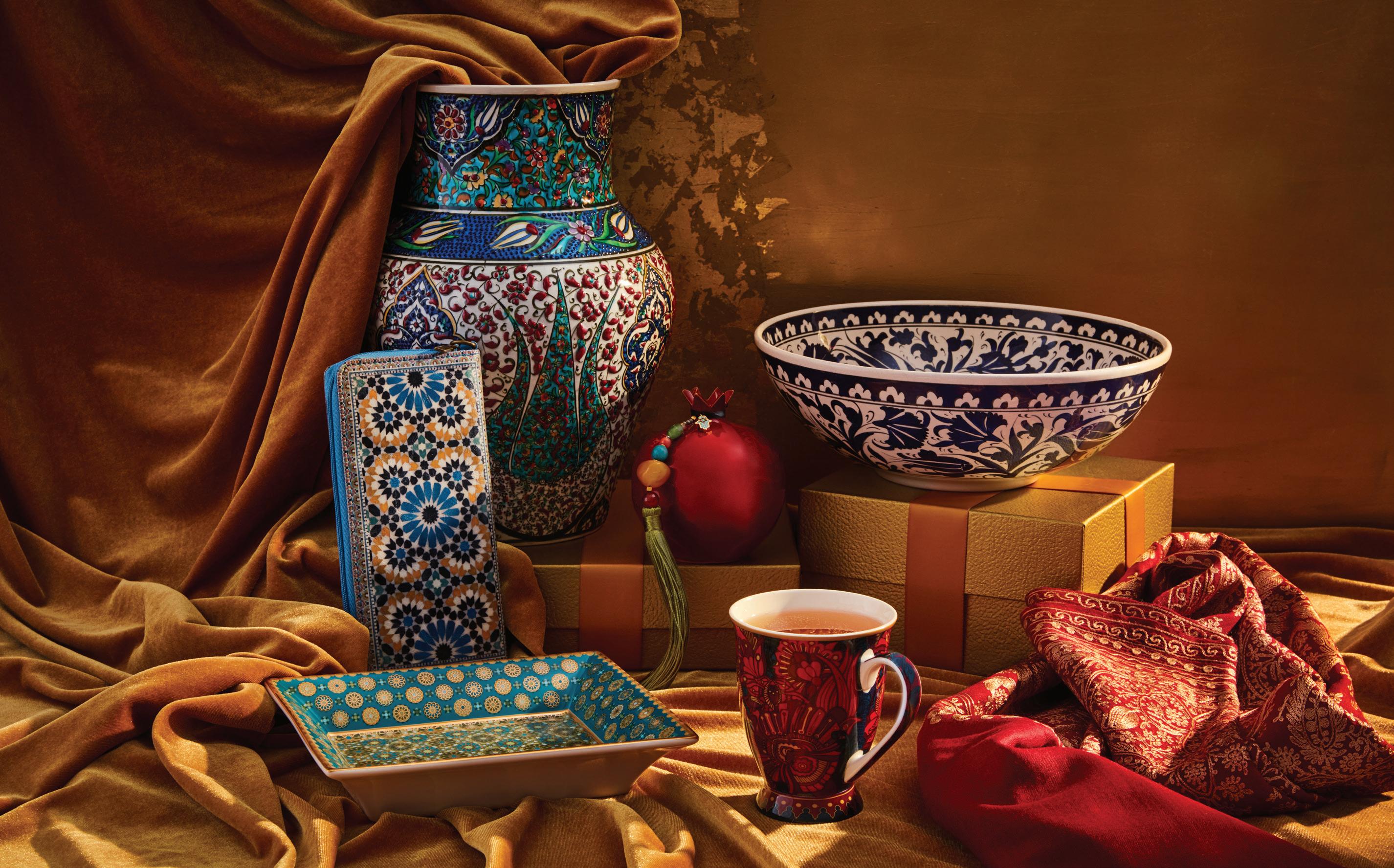


A view from the Antequera

Shaped by powerful volcanic forceS more than 20 million yearS ago, the canary iSlandS riSe dramatically from the atlantic ocean offering a landScape like no other BY PARM PARMAR
FIRST TOUCHED BY EUROPEAN EXPLORERS IN THE 1500s, these islands captivate travellers with their incredible diversity. The Canary Islands, a Spanish archipelago off the northwest coast of Africa, include seven main islands: Tenerife, Fuerteventura, Gran Canaria, Lanzarote, La Palma, La Gomera, and El Hierro. Each island boasts unique charm, from fragrant pine forests and awe-inspiring volcanoes to terrains that feel as otherworldly as the moon. Add world-class wines and pristine beaches, and it’s easy to see why this remarkable destination beckoned me. >>
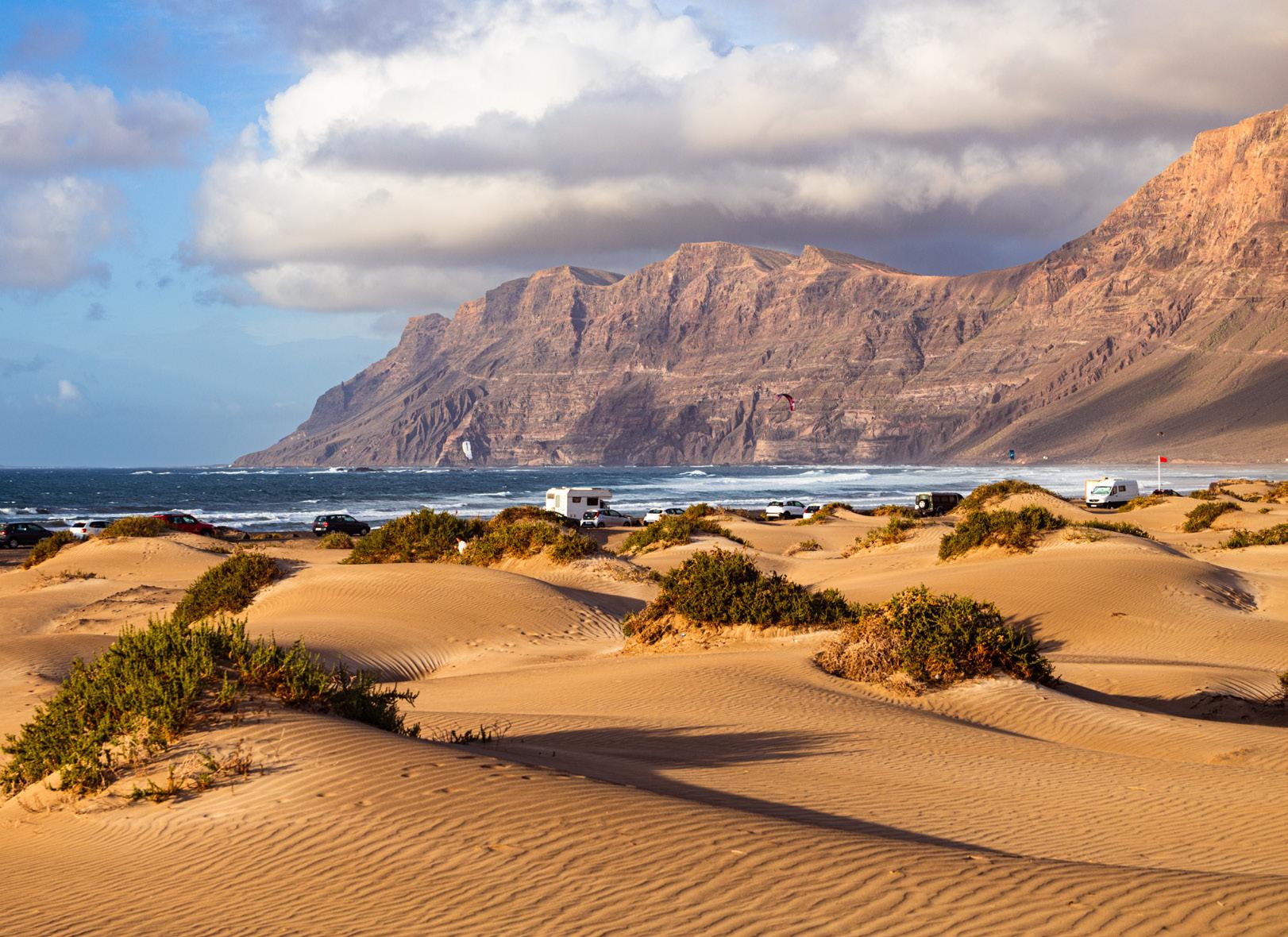
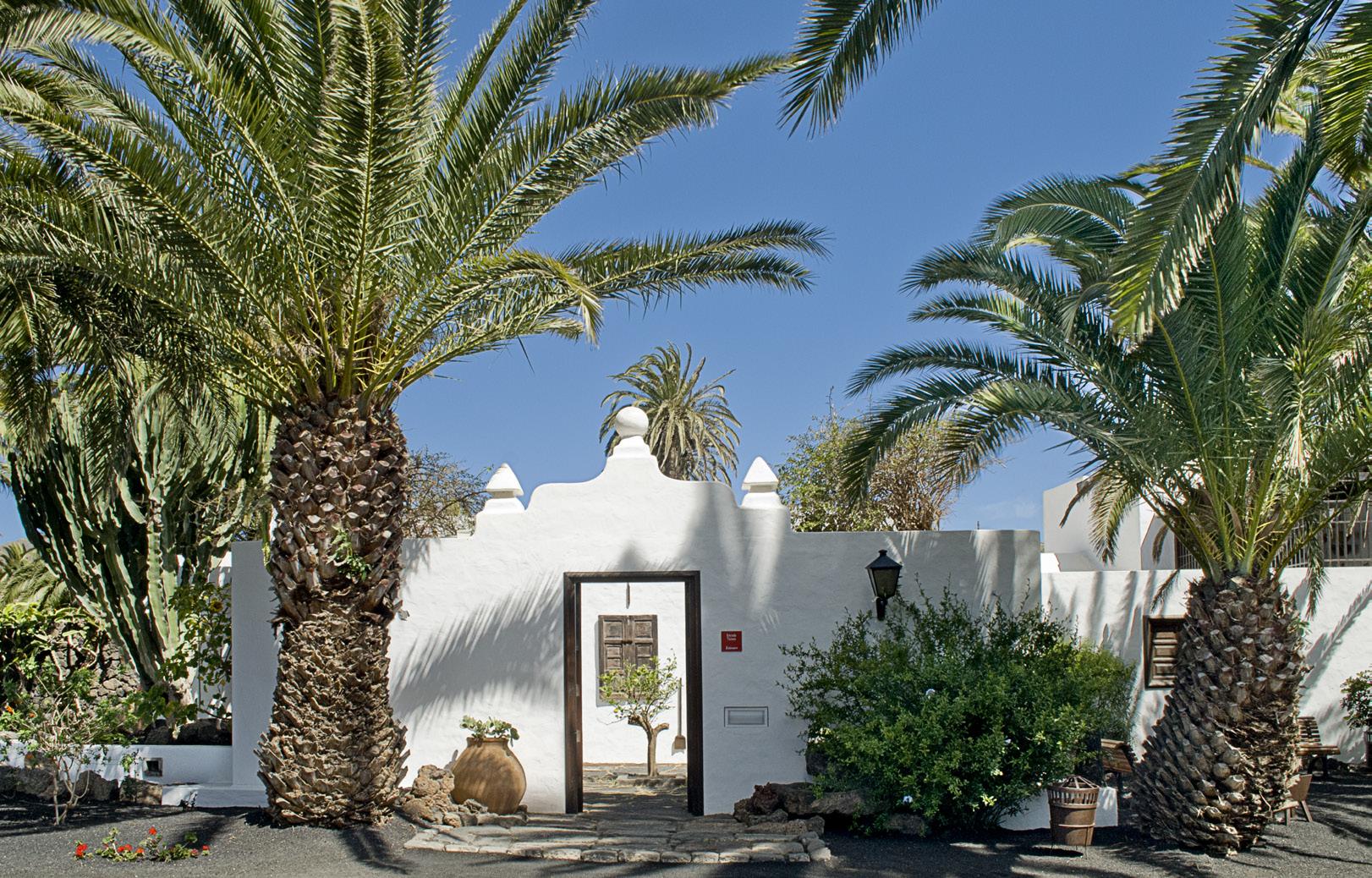
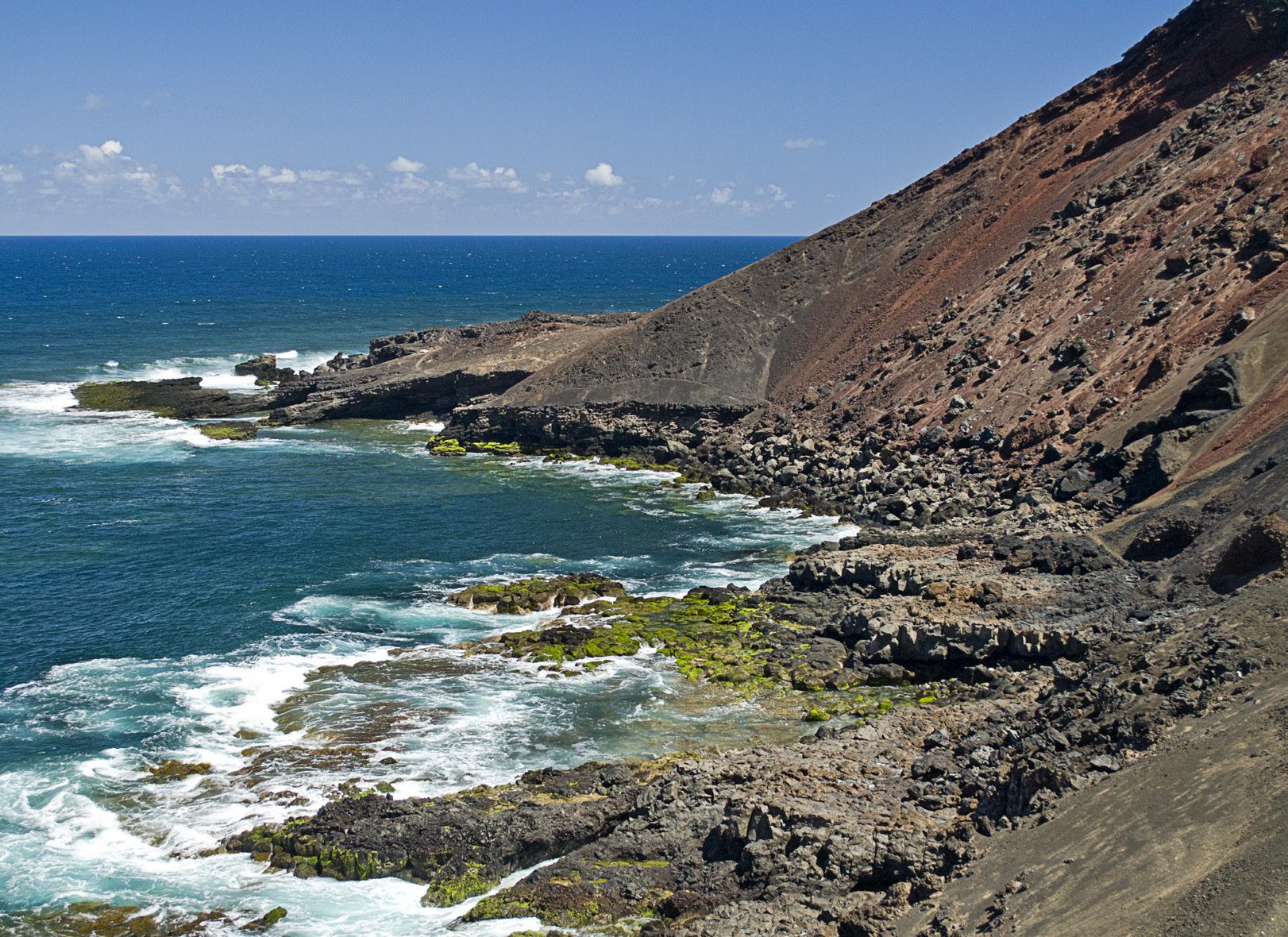
The island of Lanzarote is a paradise for hikers with diverse and rugged terrain dotted with volcanoes, lava fields and craggy rocks.
Lanzarote: a Journey through otherworLdLy Landscapes
On tour of Lanzarote one is easily captivated by its otherworldly landscape. The island is a paradise for hikers with its rugged terrain dotted with volcanoes, lava fields, and craggy rocks. Volcanic ash blankets much of the land and is cleverly used by locals to cultivate crops. Lanzarote is also known for its local wine, made from Malvasia grapes.
Exploring Lanzarote is an excellent choice among the islands, with one of the highlights being a visit to the picturesque Valley of Haria. Affectionately known as the “village of a thousand palms,” palm trees and mountain views frame the village. Haria is renowned not only for its stunning architecture, but also for being a peaceful vacation retreat. While in the area visitors can embark on one of the island’s most popular hiking routes, El Bosquecillo. This easy three-hour walk offers breathtaking viewpoints and landscapes.
Venturing further north, a visit to Lanzaloe Park in Órzola, offers a peek into the operation of one of Europe’s largest organic aloe farms. A guided tour of the farm includes an opportunity to sample various skincare products made from aloe, and an opportunity to discover its healing properties that extend well beyond treating sunburns.
A trip to Lanzarote would only be complete with a visit to the stunning Jameos del Agua, a cultural gem nestled within a volcanic grotto and underground lagoon. Designed by visionary architect César Manrique, this extraordinary site feels genuinely otherworldly.
The Canary Islands are known for long, sunny days with few temperature fluctuations. The islands are one of the regions in Europe with the most hours of sunlight—more than 3,000 annually—with the geographical location offering long days full of sunshine all year round. In winter, the sun rises at 7:30 a.m. and sets at 6:30 p.m.; in summer the sun rises at 7 a.m. and sets at 8:30 p.m.

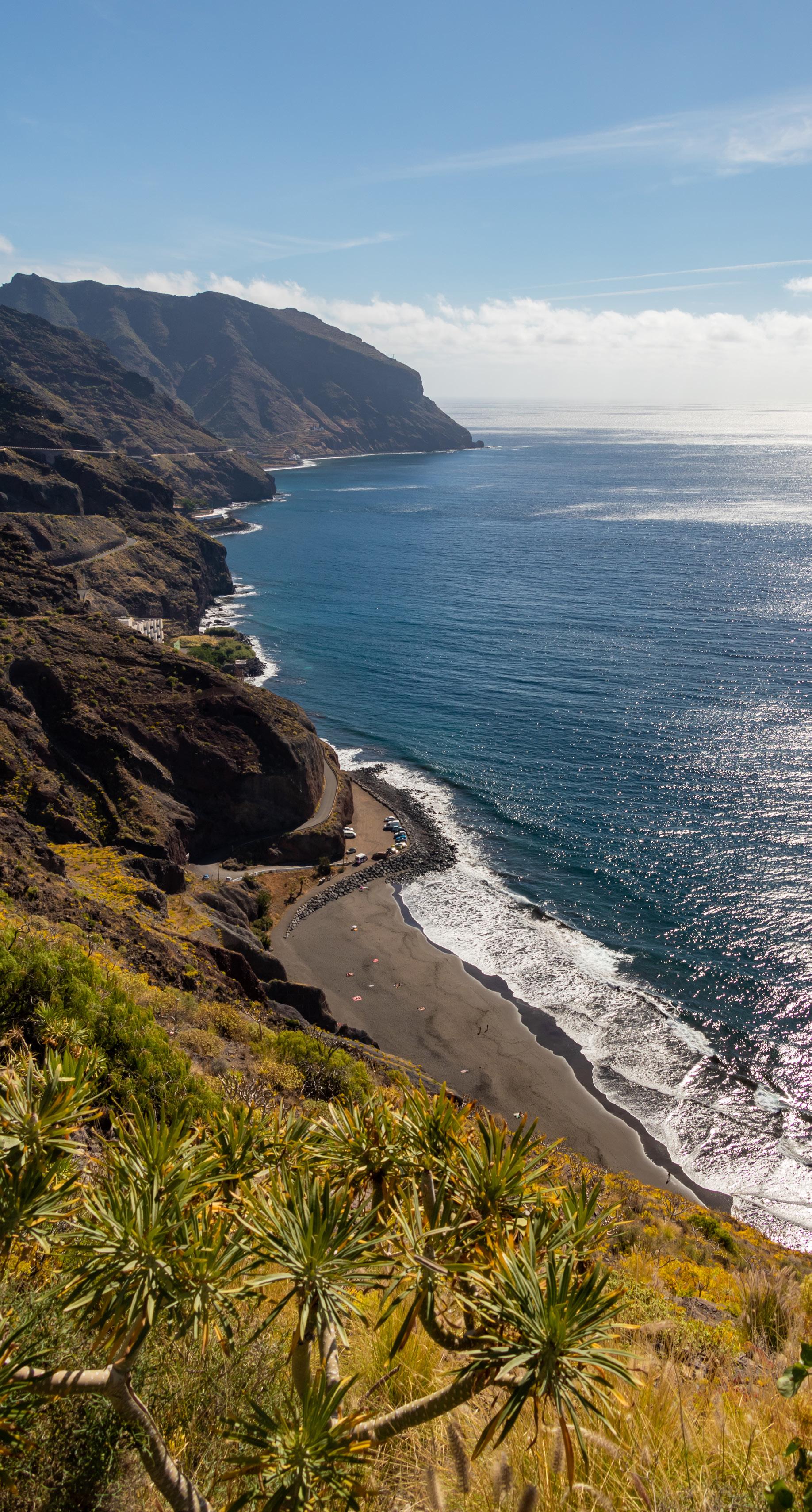

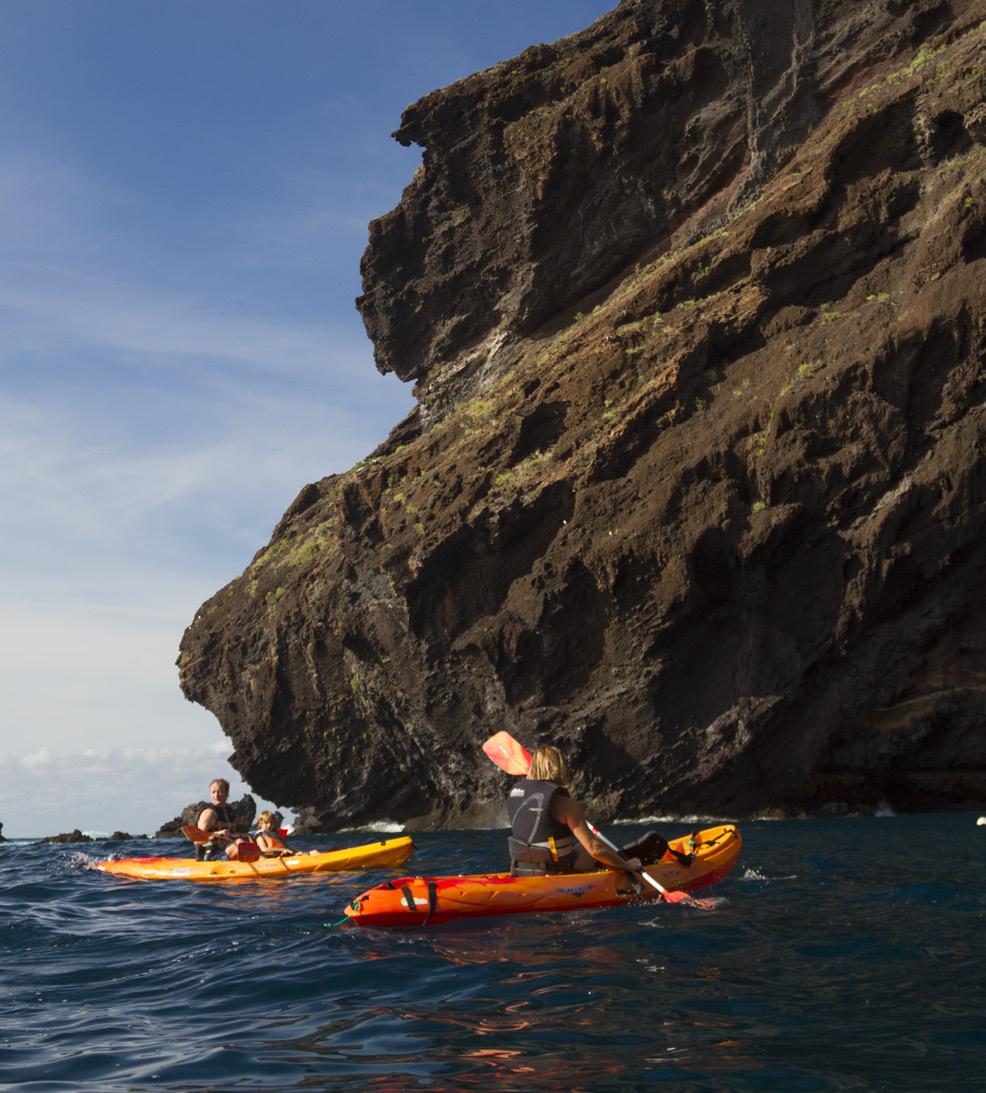
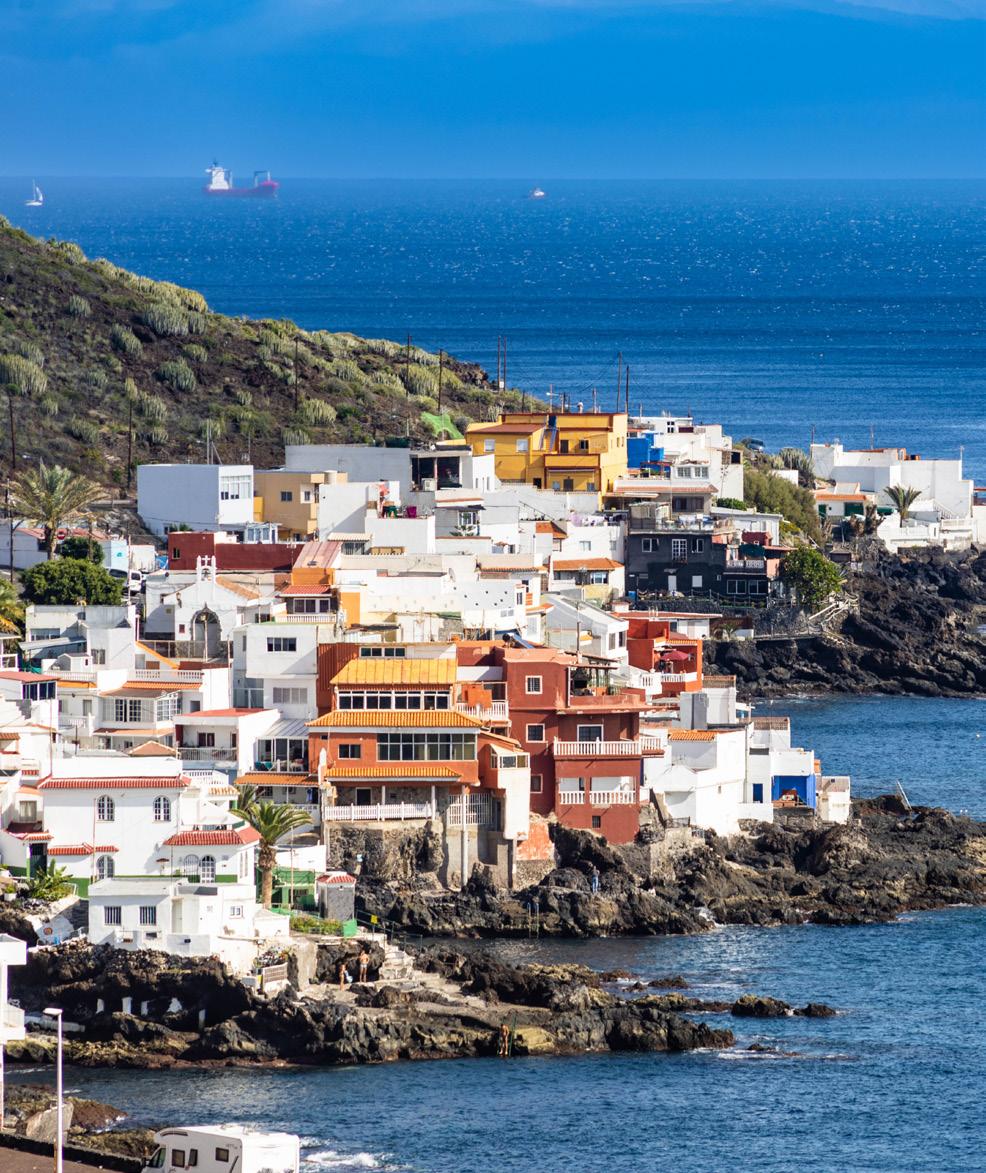
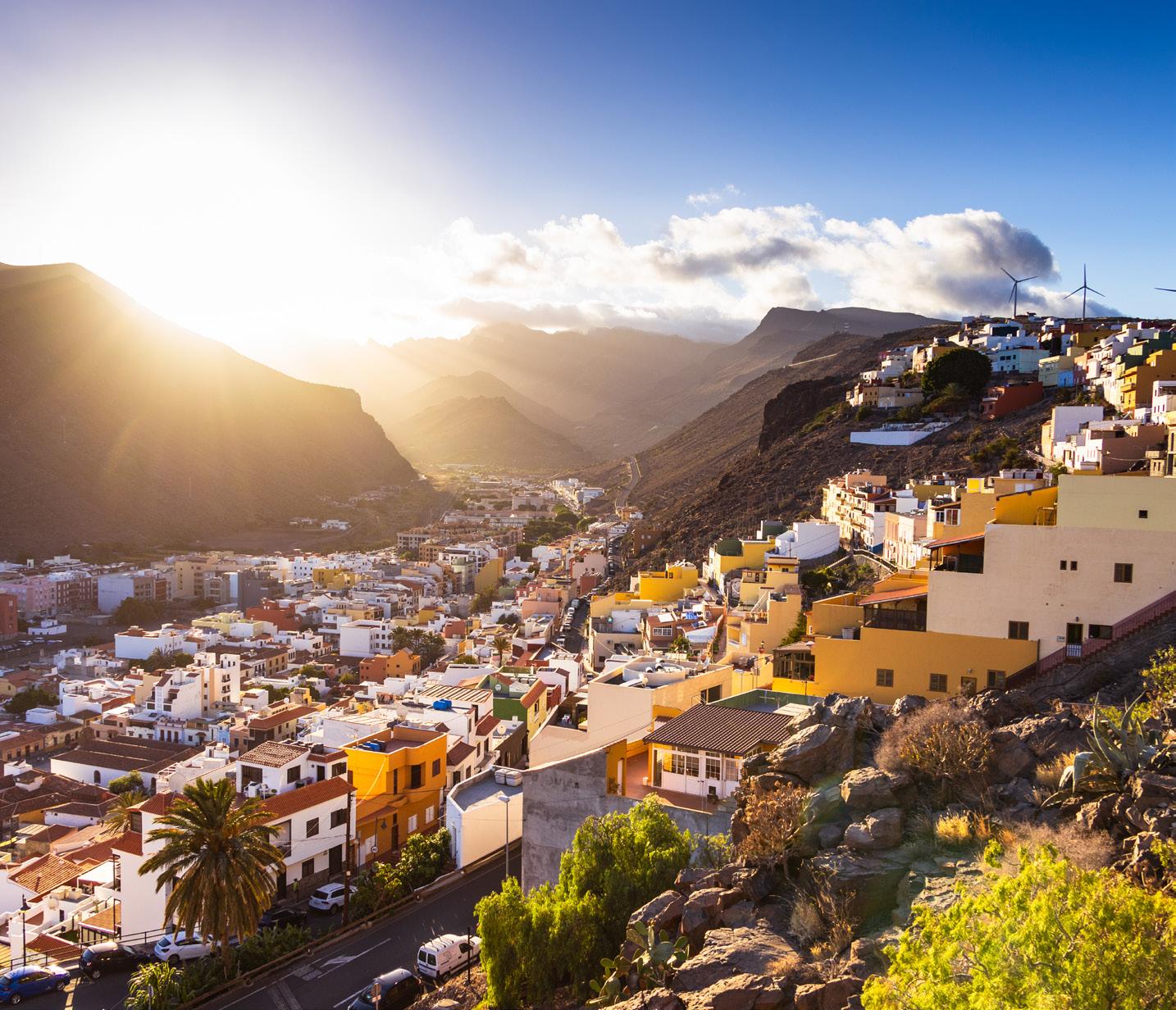
Tenerife is one of the most vibrant and popular islands in the Canary Islands. Begin by exploring the lively city of Santa Cruz, a bustling destination filled with locals and tourists. This walkable city offers many restaurants, shops, and historical attractions. Visiting La Recova de Santa Cruz, a busy market where fresh fish, fruits, and baked goods are sold alongside handmade crafts and jewellery, I couldn’t resist picking up some silver jewellery as a keepsake of my visit.
After soaking in the city’s energy take some time to join a tour to venture into the natural wonders of Teide National Park, home to Spain’s highest peak.
The journey took us through lush Canarian pine forests before arriving at the majestic Mount Teide, towering 3,718 metres above sea level, making it the third highest volcano in the world. The park’s volcanic landscapes are breathtaking, offering a sense of awe at every turn.
As we continued exploring Mount Teide, a UNESCO World Heritage Site, we uncovered more fascinating features, including craters, lava streams, and unique rock formations. The panoramic views make this area perfect for watching sunsets or stargazing under clear skies.
One of the park’s highlights is the Ucanca Valley, where the rugged terrain feels almost extraterrestrial. The famous Roques de García,

towering volcanic rock formations, further contribute to the alien atmosphere.
To end the excursion, we indulged in Tenerife’s traditional Barraquito coffee at Restaurant Papillon. This drink is a blend of sweet milk, espresso, Tia Maria, and cream— the perfect treat after a day of exploration.
La Gomera, one of the smaller Canary Islands, is yet another hiker’s paradise with its deep ravines, lush valleys, and ancient laurel forests, particularly in Garajonay National Park, another UNESCO World Heritage Site. The island’s coastal waters are rich with marine life, also making it an ideal location for whale and dolphin watching.
Our adventure in San Sebastian de la Gomera began when we boarded a small boat for a whale-watching excursion. The island’s rugged beauty was breathtaking as we ventured into the open sea. Minutes turned into an hour as we eagerly scanned the horizon with the boat rocking gently with the waves. Just as our anticipation peaked, a joyful shout announced the sighting of a distant whale spout. Soon after, a pod of pilot whales appeared, gliding gracefully through the water. This short excursion was exhilarating and an excellent way to take in the island’s rocky coastline from the sea.
Unlike its busier neighbours, La Gomera is a
serene oasis, retaining a quiet, unspoiled charm. The Canary Islands present a unique blend of volcanic wonder, vibrant culture, and unparalleled natural beauty. This extraordinary mix will excite and inspire any traveller, beckoning them to explore these captivating islands.
There are no direct flights from Canadian gateways to the Canary Islands, you can connect through many European airports.
If you plan to visit multiple islands, a good way to explore is on a small ship cruise such as Windstar Cruises. One of the main advantages of cruising on a small ship is the ability to access lesser-known ports of call, and you can book excellent excursions on each island. The tours are impressively organized by Windstar and led by knowledgeable local guides, ensuring a rich and informative experience. The Canary Islands have grappled with over tourism, which has made securing accommodations challenging. However, with a small ship cruise, you can return to your comfortable lodging each evening, confident that you’ve explored the islands respectfully and sustainably.

IN the lesser kNowN North of portugAl, plAces lIke brAgA, porto, coImbrA ANd the upper douro vAlley beckoN ... to those who Are wIllINg to explore BY JOSEPHINE MATYAS
BEFORE I TELL YOU WHAT PORTUGAL IS, I will tell you what it’s not. It is—surprising to many—not a country that borders the Mediterranean Sea. There may be olive groves and Mediterranean-like sensibilities, but a quick glance at the map shows it only touches Spain and the Atlantic Ocean.
It’s also not just the Algarve; the storied southern coastline of sandy beaches and picturesque fishing villages popular with winter-weary Canadians for long stays.
Perched at the western edge of the Iberian Peninsula, Portugal is a small country with a story that stretches eight centuries into the distant corners of world history.
Heading into the northern reaches of Portugal, there are signs everywhere of what is one of the oldest nations in the world: of the 5th-century Roman Empire, the Visigoths and the Moors; of medieval walled cities where bishops built cathedrals and ruled the peasantry; of terraced vineyards where they still stomp grapes the traditional way during the autumn harvest. In early winter, olives are still harvested by shaking the trees. Brush off that Algarve sand and pack away your sandals. Slip into some comfortable walking shoes—the north is a land of cobblestone streets—let’s go for a walk to explore some of Portugal’s lesser-known wonders.
While Porto bustles with its sea harbour, the inland cities of Braga and Guimarães in the rural Minho province are deeply rooted in the history of how Portugal came to be.
Guimarães is revered as the cradle of the nation; the spot “where Portugal was born.” Once a centre for linen used to make ships’ sails, the city was a centre of the courts, an economic and political engine that drove prosperity during the 11th century, and its Romanesque church is believed to be the baptism site of the first king. At one time a walled city surrounded by fields of crops, Guimarães is now a UNESCO site, designated to protect the nation’s most typical architecture of small squares, narrow laneways and restored buildings of local granite. The medieval castle is still in need of repair, but at one time the high walls protected it from assault; many of the stones were later harvested to pave the roadways through town.
There are small plots of vineyards along the 20-minute drive to Braga; a spot known for the double cross—the sign of archbishops who were lords of the city. Although the number is debated (the locals claim Braga has 365 churches), religious processions are still commonplace and it is best known for the Bom Jesus (the Good Jesus), a shrine that is one of the most iconic symbols of northern Portugal. The faithful walk the 600-steps down to the Baroque church surrounded by a semi-circle of impressive statuary. Along the monumental staircase, faithful pause to reflect upon the virtues of hope, charity and faith. Only after passing through these stations is one considered ready to enter the church.

Guimarães is a UNESCO site, designated to protect Portugal's most typical architecture.
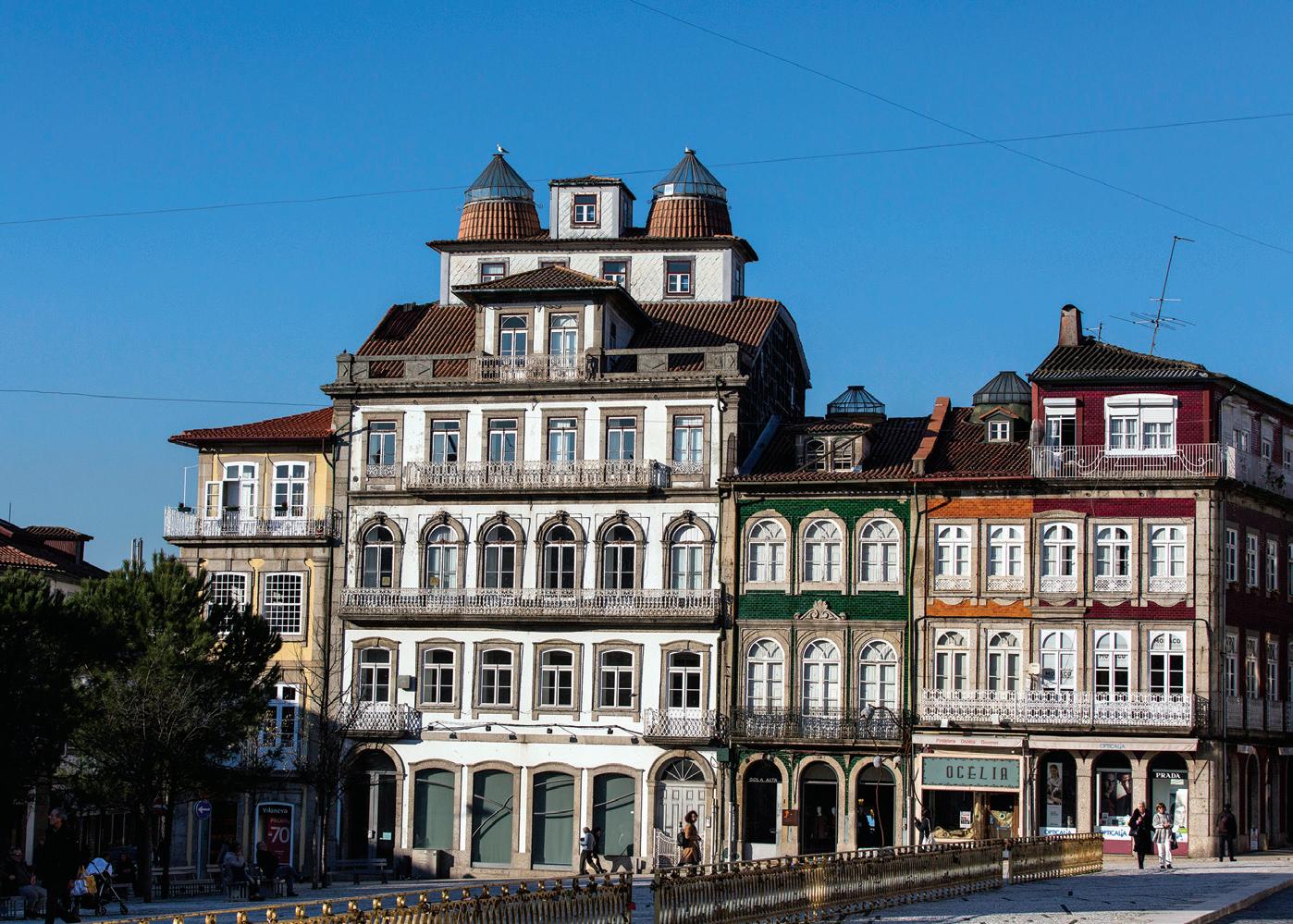
A neighbourhood and cathedral in the city of Braga. Locals claim there are 365 churches in the area.

Standing in the shadow of Lisbon, its larger and more-visited neighbour to the south, Porto’s scenic hillside location, with a river running through it from the inland hills to the ocean, speaks to a long history in the production of rich, sweet port wine. Port was developed by the English in the 1700s, who mixed brandy with red Duoro wine to halt the fermentation process, keeping it stable during the voyage back to England. A wine can only be called “Port” when the grapes are grown and the wine-making process happens in this region.
Across Porto’s landmark Dom Luís I pedestrian bridge spanning the winding Douro River, it’s a short walk to the cellars of Porto Cálem, a major maker of Port since 1859. Grapes grown upstream in the famed Upper Douro Valley are hand-picked; many are loaded onto vessels and shipped to Porto’s historic caves, at the heart of the city that makes, stores, and lends its name to the wine. At Porto Cálem, visitors walk through an interactive museum, into barrel rooms where enormous oak casks are stacked from floor to ceiling, and into a premium tasting room at the end of the guided tour. By the time you get to the tasting, you’ll know what Port is all about.

Still inside the Upper Douro wine region, the town of Lamego, with just 15,000 residents, is a bit outside the usual tour of northern Portugal.
Ideal acidity levels in the soil give Lamego the perfect growing conditions for grapes used to make sparkling wines. Local vineyard Raposeira lays claim to being Portugal’s largest and oldest producer of sparkling wine—sweet, off-dry and dry. Visitors can tour the underground caves where 1.5-million bottles are stacked on their sides right to the curved brick ceiling; and the guide explains the process of growing, harvesting and bottling the traditional way. When the tour ended, we enjoyed a tasting while taking in a terrace view of the vineyards and the red tile roofs of the town below.
Lamego is as well known for its historical importance as for its sparkling wines. “It’s a heritage town with a beautiful cathedral,” explained my guide Filipe. “Cathedrals are only found in towns that had a bishop; and this is what makes the place important. The nation is divided into 18 different districts, and each is named after a central town that had a bishop.”
The cathedral dominates the centre of the small town. Its architectural styles trace the long history of the settlement. The exterior is Gothic style with arches and pillars; the Romanesque bell tower dates to the 16th century; but it is the colourful reds, yellows and blues of the tromp d’oeil frescos that appeal to the senses and highlight the flamboyant Baroque interior of the 1700s.
Portugal’s colonial past shows in the architecture in Coimbra, a city known for the country’s oldest university. “Typical architecture from Portugal’s colonies eventually made their way back and were integrated into the buildings,” said Filipe. Built originally as a walled city, until 1256 Coimbra held distinction as the capital of the country. A walk along the ramparts gives views over the university and the rolling hills beyond.
The historic university—one of the oldest in Europe—was shuttled back and forth between Coimbra and Lisbon, eventually settling in Coimbra in 1530 at the behest of King John III, who was known as a very literate man of the Renaissance. He gifted the beautiful royal palace to the university and it was adapted to the function of learning.
According to Filipe, “Before the 1700s, God was considered the source of all knowledge. The 1700s were the period of the Enlightenment; a time when belief grew that knowledge came from thought and study, and not necessarily through God.”

There’s a magic to the Upper Douro Valley, a 100-kilometre stretch along the river designated a UNESCO World Heritage Site because of the terraced vineyards into the near-impossibly steep hills. Surrounding mountainsides hem in the area, creating a temperate Mediterranean microclimate with ideal growing conditions for grapes, olive and almond trees. Space is at a premium and it seems the growing of grapes is crammed into every available parcel, regardless of how precipitous the slope. The small plots of vines are marked off by 100-year-old dry stone walls. Only hand picking is used for the harvest; no machinery allowed and rainfall provides the only moisture. The small wine-growing estates are known as quintas—meaning “one-fifth”—because of the long-ago arrangement where the farmer would pay one-fifth of the harvest to the large landowner. Today, the grapes grown are used for port wine as well as red, white and rosé wines served at small vineyards like the fourth-generation owned Quinta de Marroocos. Visitors can follow all of the stages of port winemaking.
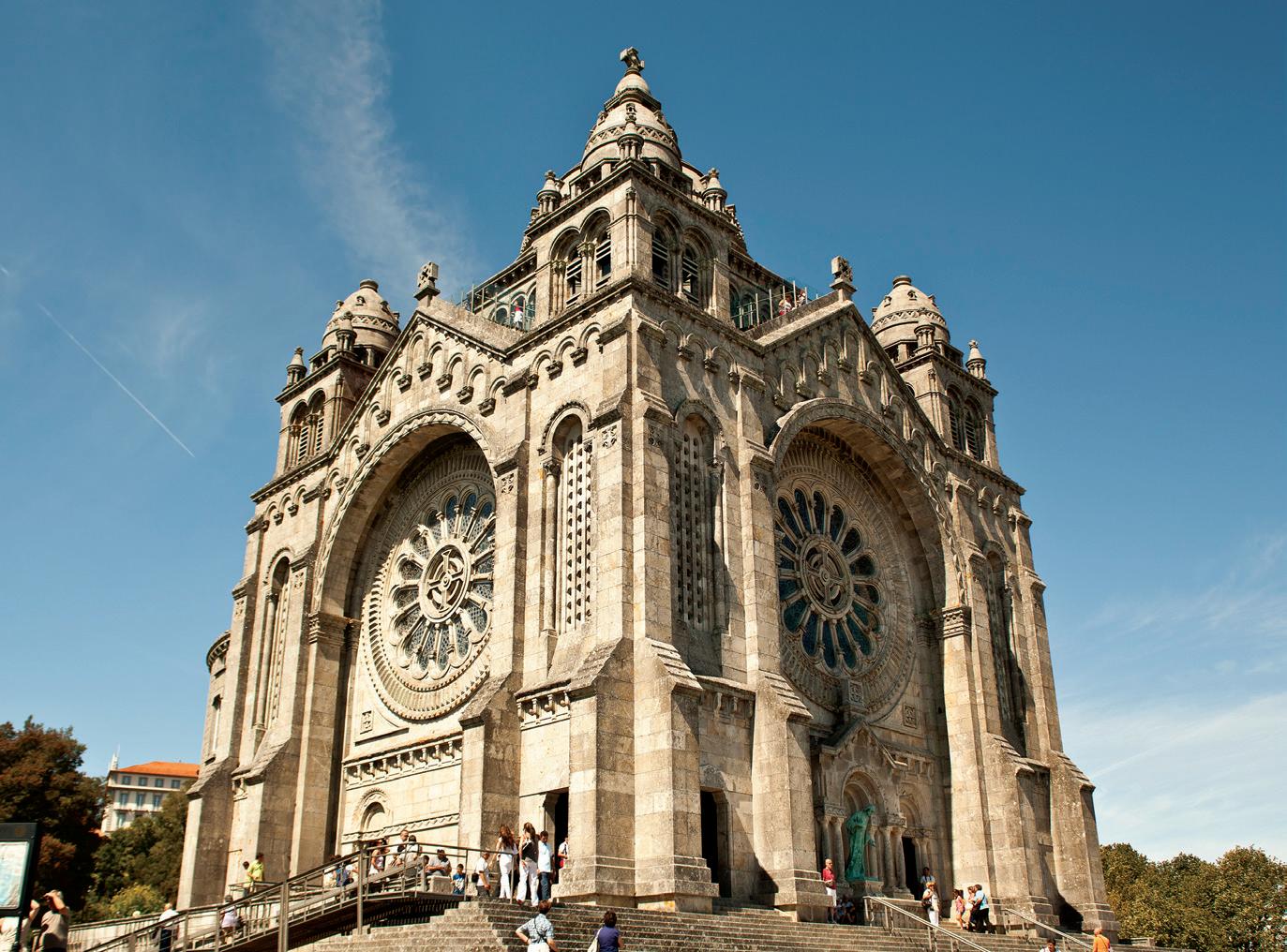


The landscape of the north is quite diverse, from the rolling inland hills to an area south of Porto known as Costa Nova (“New Coast”) where brightly striped homes line the seaside and the dunes. The colours have significance: blue keeps away bad spirits; yellow brings abundance; and red is for fertility.
It’s an area where the pride of locally grown and caught foods fill restaurant menus. The bins at the local seafood market are packed with fresh cod, eels, octopus, skate and flounder, each container meticulously marked with the date netted, the location and the method of fishing.
The story of the rich seafaring history is told at the Maritime Museum where displays cover centuries of seacoast life from people to sea creatures. An interesting exhibit shows Portugal’s role in the salt trade; it was a main export as far back as the Middle Ages.
These stops are off Portugal’s well-worn-path and make for a quieter visit to the authentic corners of the Iberian Peninsula. Be as simple or as elaborate as you like, but if you include a few of these tips you’ll come home with a deeper appreciation for the route less taken.

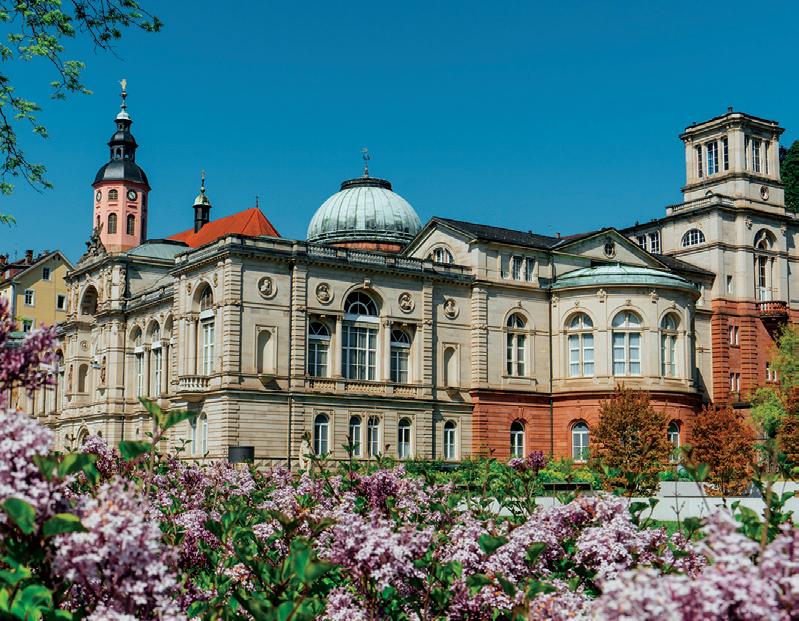
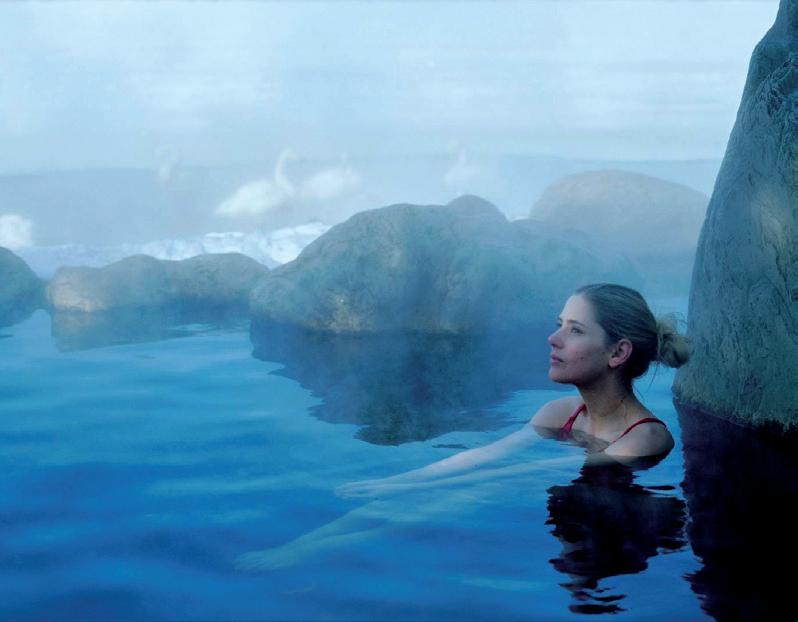

Imagine sinking into a blissfully hot mineral bath at a Japanese onsen, floating in thermal waters below the Renaissance-inspired domed ceiling of a 19th-century European spa, or being washed with a cloud of bubbles in an Istanbul hamam built for a sultan’s wife. These dreamy experiences are enough to make even the staunchest shower devotee a bathing convert. Communal baths are an historic gift to road-weary travellers. You’ll get naked—or close to it—and within a few minutes it won’t seem to matter, as you indulge in a healing experiences that is also a window to a culture. Ready to take the bath plunge? BY
The rich, royal and fashionable made Baden-Baden, Germany a social “it” spot in the 19th Century, popularizing water cures alongside stays at posh hotels.
The elegant Black Forest town, whose name means “bath-bath,” is on the UNESCO list of Great Spa Towns of Europe. It has lovely Belle Époque buildings, steep winding streets leading to hidden courtyards and a peaceful ambiance. No wonder I kept seeing people snoozing in the spring sunshine, taking advantage of lounge chairs spread around one of the larger public fountains.
Would a little of that luxe life rub off on me with a 17-station circuit at the 1877 Friedrichsbad Spa? The Roman-Irish bathing temple was built on the site of ancient Roman soldiers’ baths and was considered cutting edge when it opened.
Friedrichsbad is “textile free,” meaning no swimsuits allowed. It’s also not segregated by gender. Men and women enjoy the thermal water showers, steam rooms and swimming pools together and naked. Once I got over the shock of realizing I was not only bathing in the nude, but also in mixed company, I went with it and enjoyed
LINDA BARNARD
the experience immensely (Beginning July 2024, Wednesdays and Saturdays are “swimwear only” days at Friedrichsbad, all other days are traditional bathing).
“It really feels like you’re in another time,” said Cornelia Stahr of Baden-Baden tourism. She likes to quote Mark Twain, who wrote of his 1878 visit: “You lose track of time after 10 minutes and track of the world after 20.”
The baths are as much a work of art as a place to unwind and renew. In the warm air rooms, where temperatures reach 68C, there are colourful nature scenes rendered in shiny Majolica tiles. The thermal pools look like they were plucked from Roman villas. Signs remind bathers to avoid talking.
After a final shower, I was given a crisp sheet from a warming cabinet to wrap up in and shown to a lounge chair in a high-ceilinged relaxation room for a cup of mint tea. For the final indulgence, I went into another room, laid down on a padded massage-style bed, wrapped myself in a soft, brown blanket and closed my eyes. That faint sound of snoring? I swear it wasn’t me.
It’s difficult to make out the large soaking pool of the geothermal bath (called an onsen) beyond all the steam at Rurikoh ryokan in southwestern Japan. It does help ease any nervousness I have about walking into the communal women’s bathing area completely naked.
Nobody stares. The women are making every calming moment count as they soak in the healing and soothing 40C water from the underground mineral springs.
For locals as well as visitors, hot springs tourism is big in Japan. I check into a modern version of a traditional Japanese inn, called a ryokan, in the town of Yamashiro Onsen. It’s one of four hot springs resort towns in the Kaga Onsen region, about five hours by train from Tokyo.
Local food and good water are the keys to a successful ryokan, guide Yuko Ehara explained. These inns foster an atmosphere of calm, wellness and pleasure by combining hot springs bathing with elevated, multicourse and seasonal tasting meals called kaiseki. To make the experience even more serene, guests wear long cotton kimonos, called yukata, for their entire stay. It’s like having dinner in your bathrobe.
Onsens are separated into areas for women and men. Pictogram signs in the dressing rooms explain how to use them. The most important rule is to wash before you get into the hot soaking water. I sit on a kindergartensized plastic stool to give myself a good scrub at one of the bathing stations that ring the main bath. Make sure your washcloth never touches the onsen water, which is why many women sit in the bath with the folded cloth on the top of their head.
The thermal waters are said to have remarkable curative powers, easing everything from arthritis to skin conditions.
Another experience has caught my eye on this winter evening. I spot the steam rising from a stone-lined, hot springs pool outside. Surrounded by lanterns, it’s protected by a low roof and open to the snow-covered garden. The onsen does not disappoint, the experience is as blissful as it sounds.
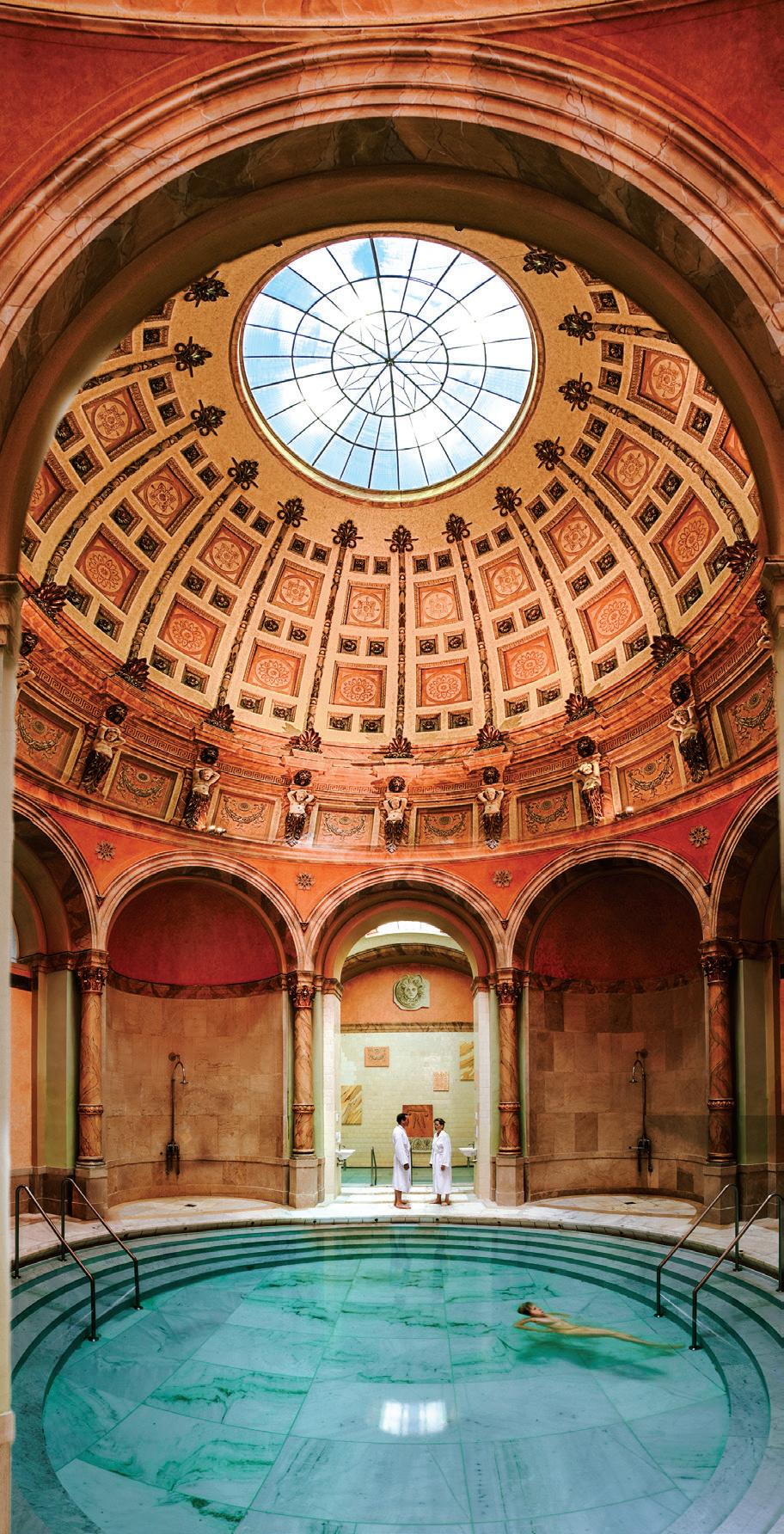

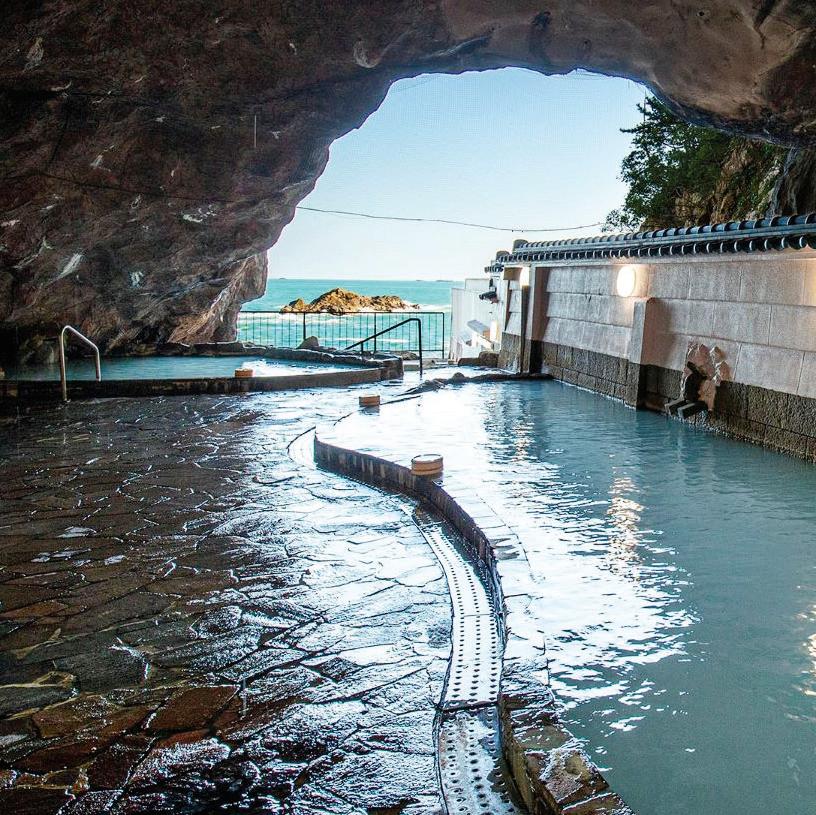

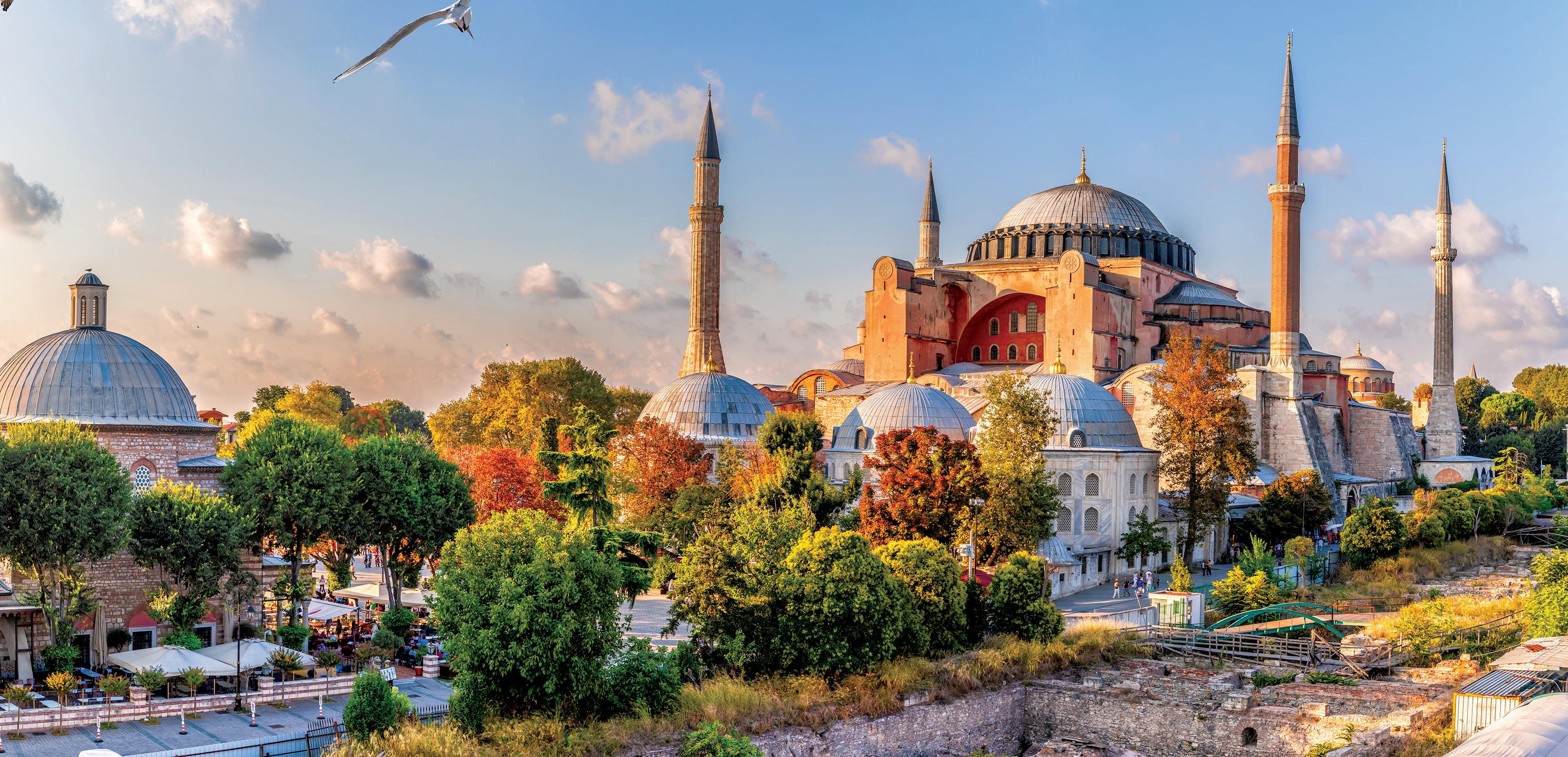
Hürrem Sultan Roxelana, the wife of Ottoman Sultan Süleyman the Magnificent, was influential enough to commission the greatest architect of the day to build a public bathhouse in Constantinople in 1556. The hamam was built on the site of the ancient Zeuxippus Roman baths, beside magnificent Hagia Sophia Mosque.
After a three-year, $11-million (U.S.) renovation, the baths re-opened as Hürrem Sultan Hamami in 2011. Just as there were in the 16th Century, separate and identical sides each cater to male or female guests.
“The Ottomans went to the hamam on a daily basis,” said Edmonton native Jennifer Gaudet, owner of Jennifer’s Hamam shop in in Istanbul’s old city Sultanahmet quarter. Her company works with local weavers making organic cotton, loom-woven Turkish loop towels, as well as robes, linens and quickdrying pestemals, the towels used in hamams.
Gaudet encourages anyone who comes to Istanbul to experience a hamam. When tourists in her shop express reluctance about
Top of page: Hürrem Sultan Hamami with the Hagia Sophia Mosque in the background. At left, clockwise from top left: main pool at Friedrichsbad, Baden-Baden; men’s entrance, Hürrem Sultan Hamami, Istanbul; an ocean onsen at Hotel Urashima Resort & Spa, Japan; Outdoor hot springs at Rurikoh ryokan in southwestern Japan.
the communal and all-but-naked experience, she tells them: “You just have to think of yourself being four-years-old and being washed by mom again.”
I booked the 80-minute Zevki-Sefa wash and massage package (85 euro, about $275 CAD). The large door to the woman’s half of the hamam opened onto what felt like a secret world of carved wood, long couches, candles and oodles of grey-white Marmara marble beneath a 24-metre-high dome.
There are private changing rooms on the second level with digital locks to safeguard belongings. I slipped out of my clothes, put on a laughably small disposable thong and wrapped myself sarong-style in a pestemal.
Spa attendant Semra, who was wearing the same minimal outfit as me, smiled and took me by the hand and led me into the main hot room. The peaceful world of marble and inlaid tile floors has washing stations around the perimeter. A raised octagonal marble “navel stone” platform is at the centre.
It was close to 50C in the room. Sweating makes the next step—exfoliation—more effective. Semra eased me onto a heated marble seat, turned on the shiny gold-coloured taps above a marble vessel and used a hammered metal basin to sluice warm water over me. The pestemal came off. She put a scrubbing mitt, called a kese, over her hand, and used long strokes to slowly exfoliate every inch of my
body. A lot of dead skin and dirt rolled off, which horrified me and seemed to please her enormously.
She washed my hair with scented shampoo, pouring warm water from the bowl over my head, then wiped my eyes with a soft towel. I was led to the 42C navel stone where I flopped like a fish on the pleasantly slippery surface. Semra swirled what looked like a long linen pillowcase in a bucket of olive oil soap suds and swung the bag back and forth to make bubbles. She squeezed thick clouds of scented foam across my body, massaging me from neck to my feet, then tapped me to turn over for more bubbles and massage. I stared up at the massive domed ceiling, dotted with small windows to resemble a field of stars. It was like a dream.
“I don’t think we can ever truly imagine what it was like (for the Ottomans), but the experience of having a scrub and being washed, it’s the next best thing,” said Gaudet. “I think it is a lovely experience that everyone should go to.”
To complete the circuit, a massage in a private room with delicately perfumed Eastern redbud oil, also known as Judas Tree. Back in the main cool room, I was served sweet walnut lokkum (Turkish delight) on a domed silver dish and a glass of Turkish tea. I stretched out on the couch, drifting in paradise, at a bath built for a Sultan’s beloved.
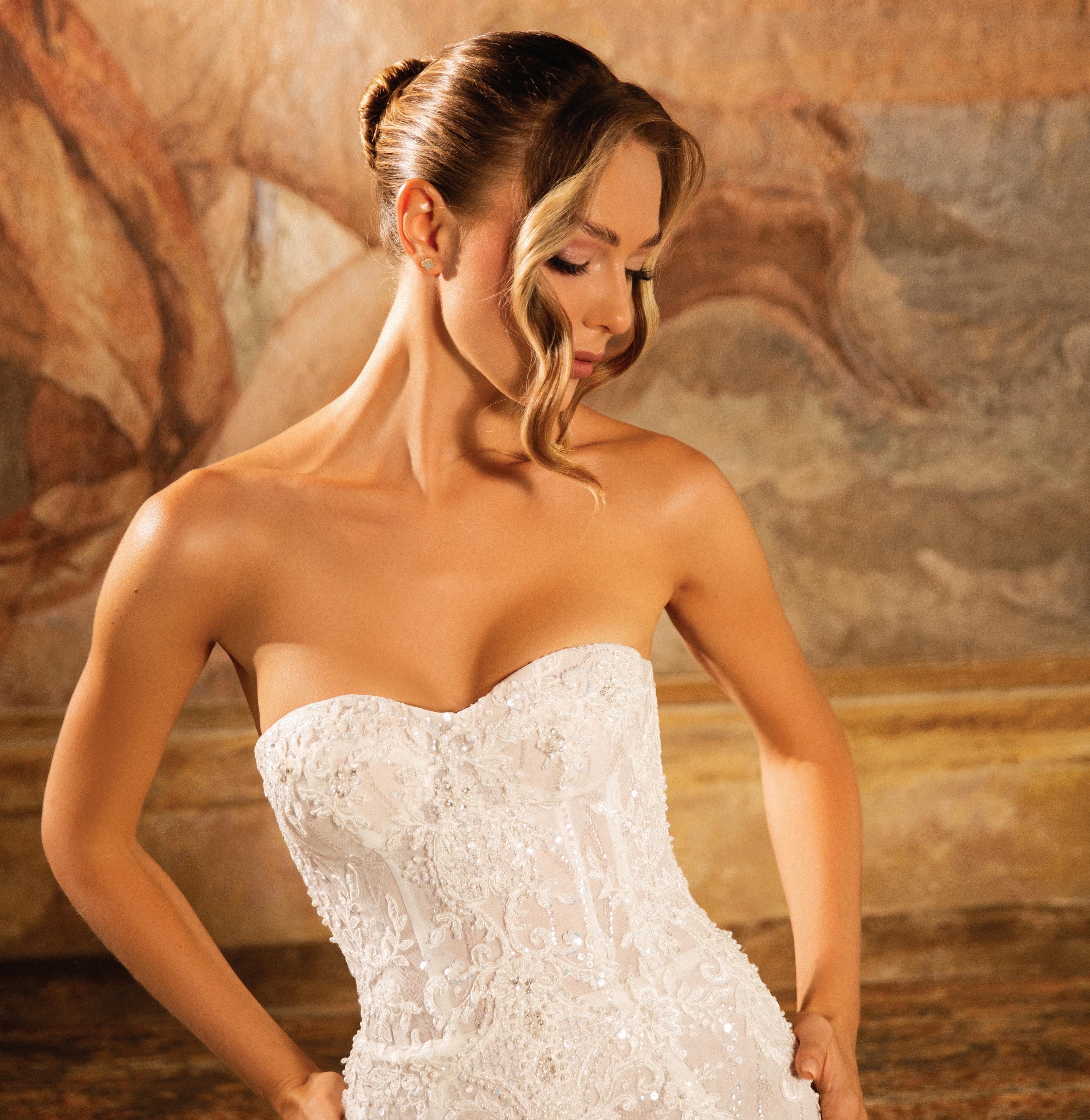

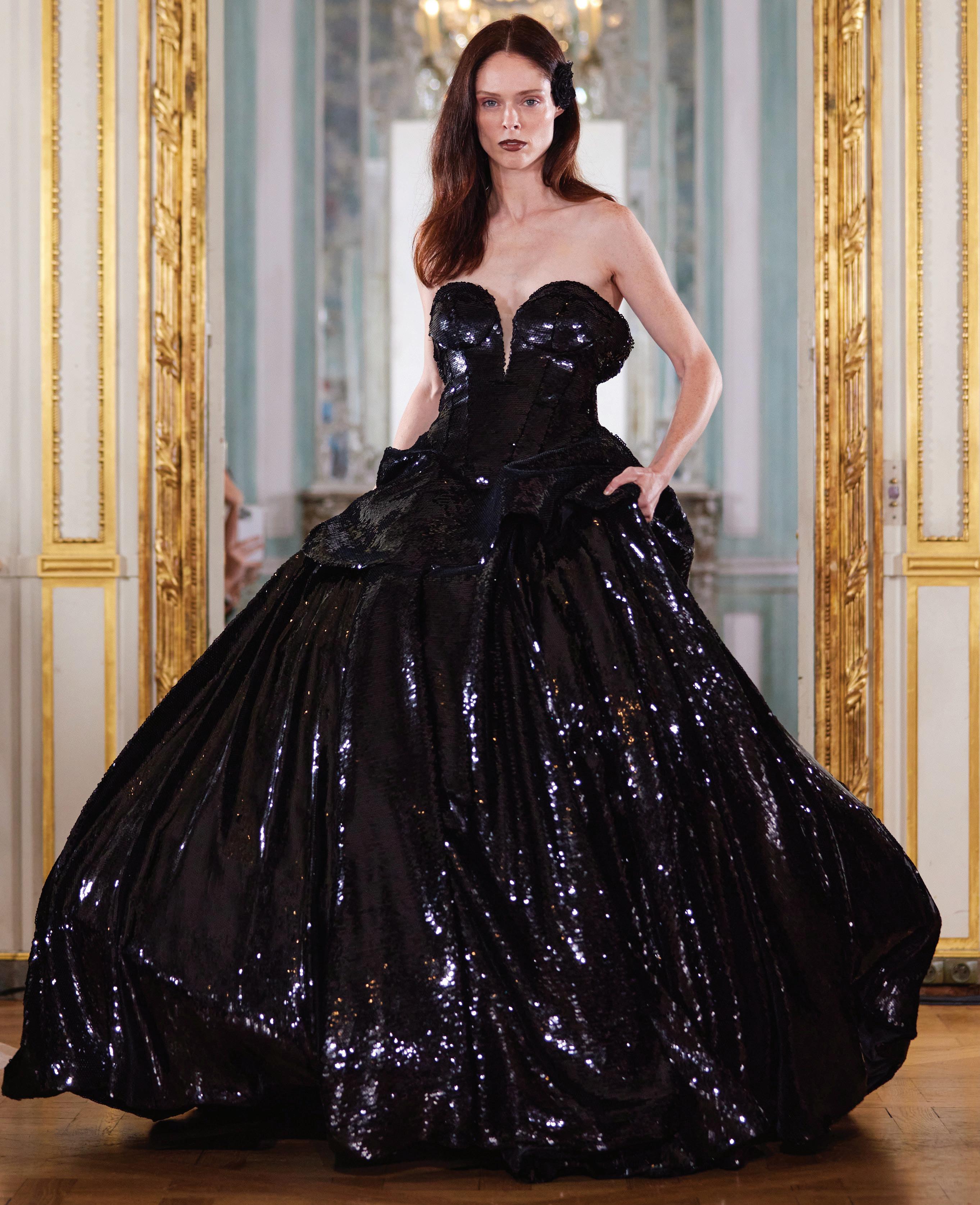
Canadian brand RVNG Couture debuted on the runway at Paris Fashion Week, with designer Jordon Stewart showcasing the Spring/Summer 2025 collection: Exhale. Stewart is known for her bold, glamourous—and inclusive—designs, created for the occasions when you “need to feel powerful and invincible.” Coco Rocha is the face of the collection, appearing in the campaign and closing the runway show at Hôtel Mona Bismarck in Paris. rvng.ca
Winter is on its way, and so is the dry, dull skin that comes with it. Quench your skin's thirst with these power-packed treatments. BY HOLLY CRAWFORD
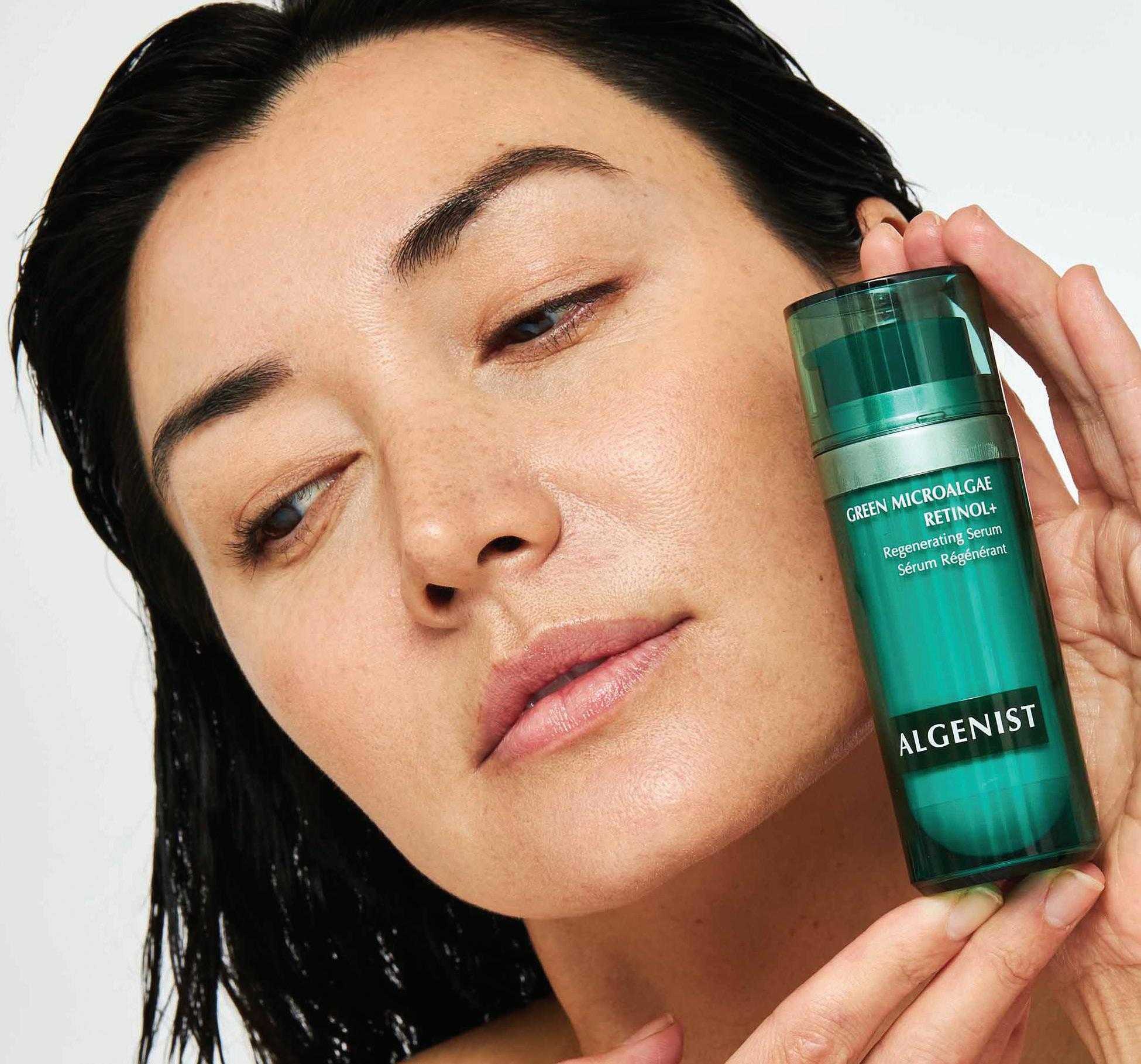
The buttery, rich cream from trailblazing biotech skincare brand Algenist was a gamechanger for my very dry, sensitive skin.
Algenist Genius Sleeping Collagen Moisturizer ($132/60mL) contains patented alguronic acid—naturally sourced from algae—along with biomimetic collagen, ceramides and Mary thistle. This combination of skin-loving ingredients packs a powerpunch to increase hydration, support barrier function and reduce the appearance of fine lines. You'll wake up to visibly happier, dewy skin after the first use. For those looking to add a retinol product to their routine without fear of irritation, Algenist’s Green Microalgae Retinol+ Regenerating Serum ($115/30mL) delivers results without the redness. Fermented green algae produces a retinoid-like ingredient that offers results in a product gentle enough for everyday use. A blend of AHA, BHA, and PHA’s boost the exfoliation of skin’s surface layers to reveal smoother, more even skin texture and tone while proprietary alguronic acid and humectants plump skin for natural, radiant glow. algenist.com
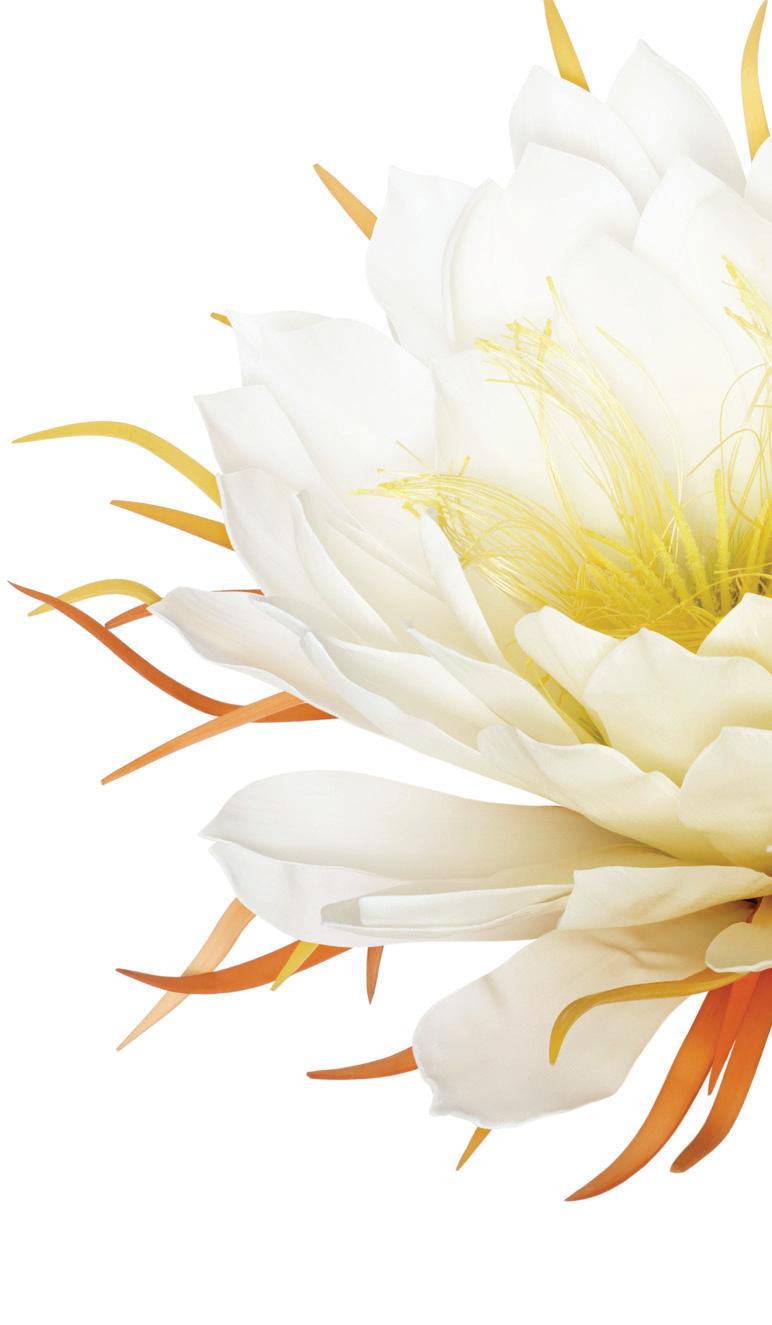
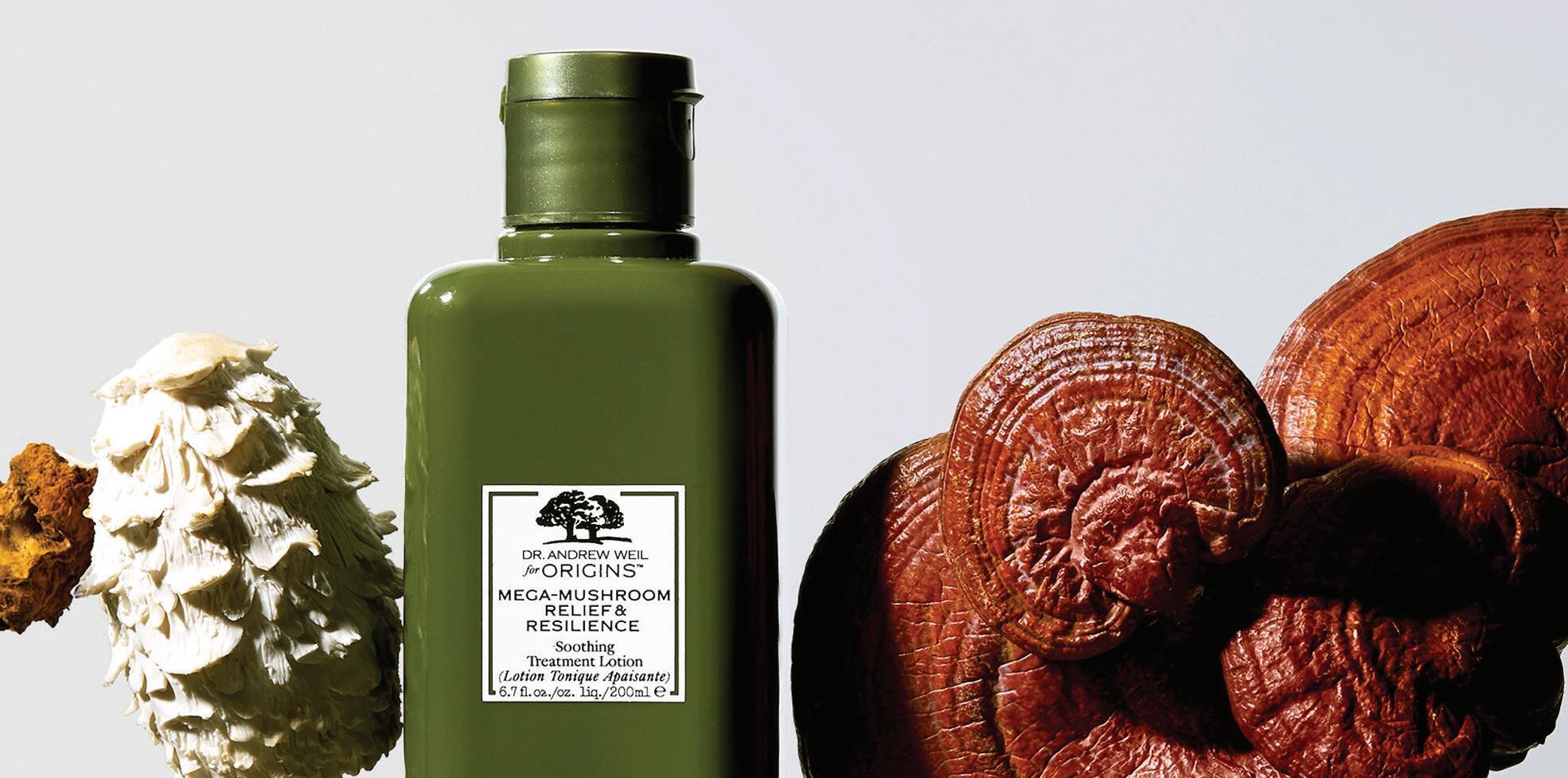
Utilizing the power of mushrooms, Origins Mega-Mushroom Relief & Resilience Soothing Treatment Lotion ($60/200mL) will help visibly calm, strengthen the skin barrier and reduce the look of pores. Created using Reishi and Chaga mushrooms, this lotion possesses powerful skin-soothing properties delivering a comforted complexion. Reishi mushrooms—known as the "mushroom of immortality"—are often used in traditional Chinese medicine, and the Chaga mushroom is loaded with essential nutrients including zinc, potassium and magnesium. origins.ca

The latest addition to the Clarins Precious line of luxury skincare is L'Huile en Sérum ($440/30mL), an overnight serum packed with moonlight flower, a youthpromoting ingredient that blooms just once a year. A replenishing and restructuring peptide trio add to the preventative action of moonlight flower to create a powerful complex that prevents visible signs of aging, as well as improving those already present. Thousands of precious oil drops (wakame extract and sweetbriar rose oil) are suspended in the serum, offering the action of an oil and the power of a serum when applied. clarins.ca
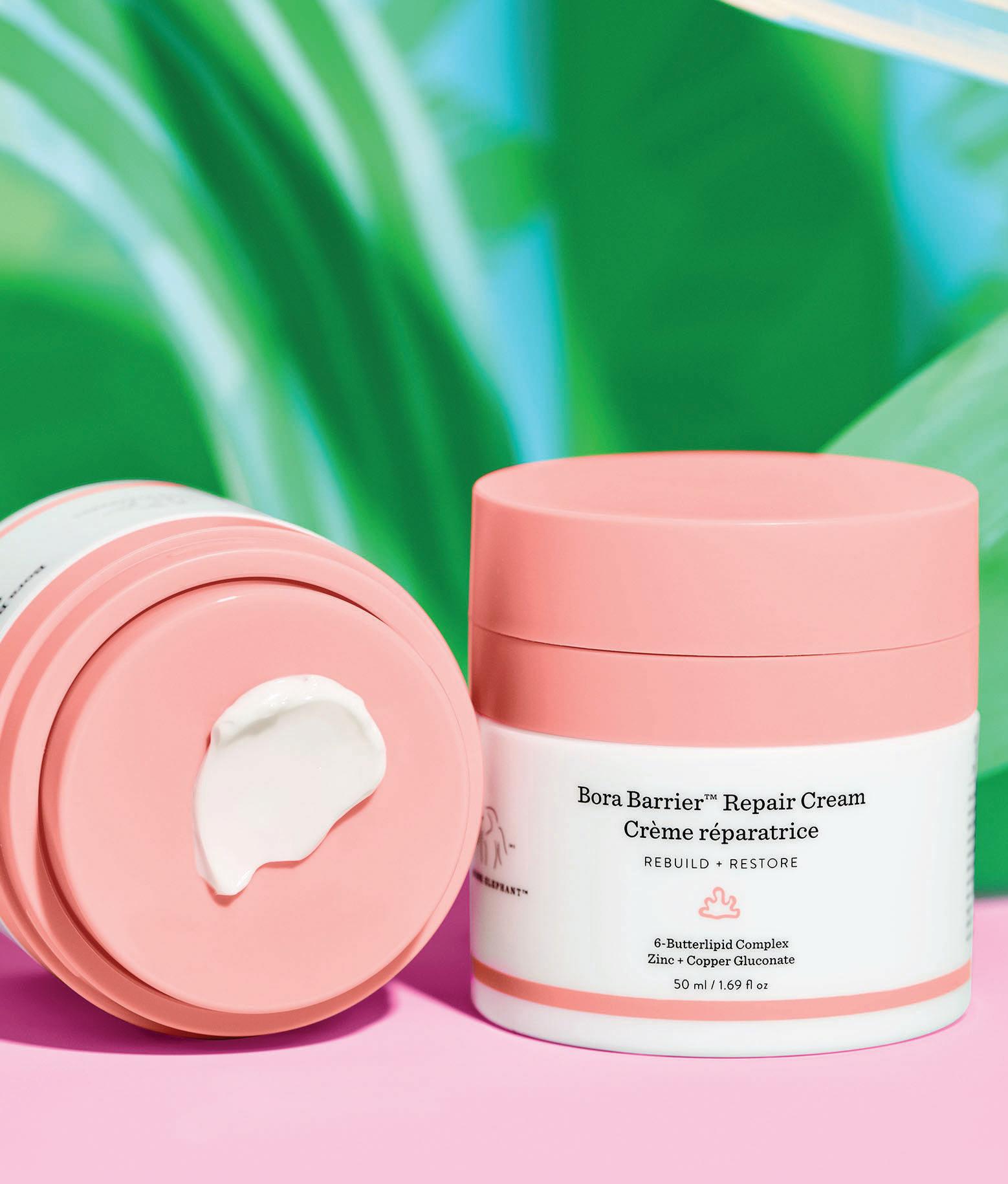
An ultra-rich cream that promises to deliver 24-hour moisture and restore a healthy skin barrier, Bora Barrier Repair Cream by Drunk Elephant ($90/50mL) contains three key ingredients to rebuild and restore the skin. Six-butterlipid complex to soothe skin, support natural ceramide and hyaluronic acid production, strengthen the skin barrier, and boost skin’s moisture levels; zinc and copper gluconates for antiredness benefits and powerful antioxidant properties and alpha glucan derived from rice and used for its soothing, hydration-boosting benefits. drunkelephant.ca

We've heard it a million times before, the skin around our eyes is the first to show its age, but many eye creams are geared for use on the eye contour area only. What about those delicate lids? Dermalogica Phyto Nature Lifting Eye Cream ($163/15mL) is a rich, hydrating cream that visibly lifts eyes, and can be worn under makeup. Quinoa seed extract helps reduce the appearance of eyelid folds while adaptogenic astragalus, electric daisy flower and CoQ10 smooth and tighten for a lifted appearance. dermalogica.ca
I've been going back to products from French pharmacy brand Avène since high school, and still reach for them when my skin is acting extra irritable. The brand offers dermatological skin care products for face and body with formulas gentle enough for sensitive skin, infused with Avène thermal spring water. The new Vitamin Activ Cg Radiance Concentrated Serum ($75/30mL) offers a trio of active ingredients (vitamin Cg 1.8%, niacinamide and bakuchiol) to create more radiant, even-toned skin from the first use. Dermatological vitamin C is more stable (so the product will last longer) and a formula with physiological pH makes it tolerant for those with sensitive skin. eau-thermale-avene.ca B
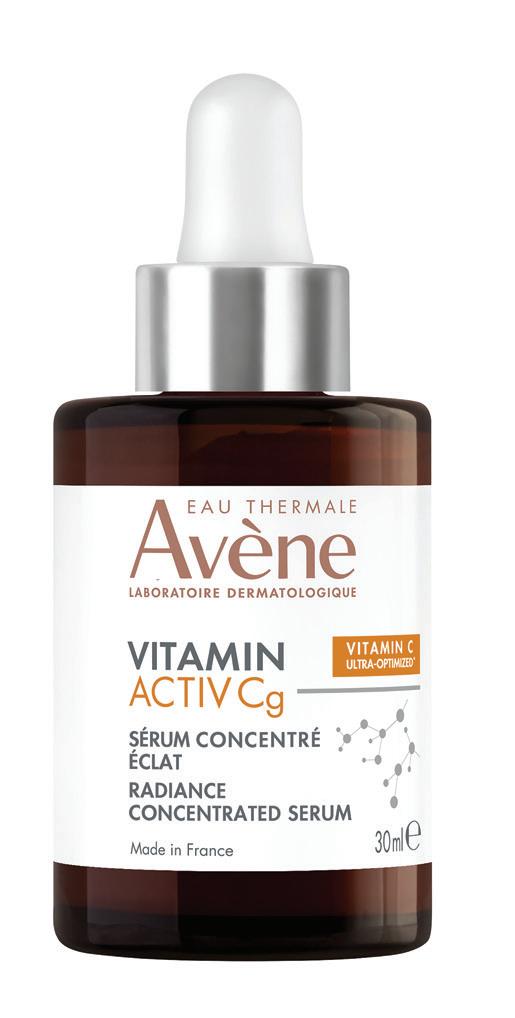
From the beginning oF her eponymous label, designer elisa c-rossow has taken an alternative approach to Fashion. her pieces are beautiFully cut, understated classics that create a wardrobe meant to last through the trends, the seasons, and the years.

BY CHRISTIAN DARE
FRENCH CANADIAN DESIGNER ELISA C-ROSSOW has built a cultlike following for her unique approach to fashion. Her signature allblack (or occassionally white) understated style has helped redefine how we think of sustainability in fashion. On the surface, her designs seem to be a reinvention of classic, modern wardrobe staples thanks to a clever re-cutting: the perfect white blouse or the little black dress. But her approach to fashion goes much deeper than the modern quintessentials; for Elisa, design must not only be classic and chic, but completely sustainable.
From the very beginning of her namesake brand in 2008, Elisa’s philosophy has always been to create on a small scale and minimize waste in fashion production (something the industry is notorious for). Further, in order to minimize her eco footprint, she insists on manufacturing locally in Montreal; and in keeping the collections small and well-edited. Known for her strong artistic identity and fundamental belief that less is more, Elisa never follows trends and creates sustainable style without seasonal constraints. Her collections feel timeless. Collectioons at once feel timeless yet modern in a world of fashion that sometimes seems overrun with maximalism and streetwear. Even her deliberate absence of colour seems to be a refreshing choice—not only in aiding the wearer to save time when getting dressed—but ensuring it is a piece she will want to wear and cherish forever.
With such a refreshing approach to fashion, we thought it was time to sit down with Elisa to learn more about her opinions on fashion and the role it should play in our culture. And she didn’t hold back.


Q: Have you always wanted to be a fashion designer?
A: Not really. I was sewing my own clothing as a teenager, but I didn’t think it was a job I could do at the time. When I went to art school I was into sculpture and architecture classes. I’m a designer because I love creating clothing, but I only realized I would become a fashion designer when I was studying and living in Paris in my early 20s.
Q: Is there a fashion designer you look up to in terms of how you want to build your brand?
ER: None. I dislike the universe around fashion in general, and never really was inspired by a fashion designer for my brand because I have such a specific idea of clothing. I do like more than a few Japanese designers because I found it goes beyond the fashion, it’s about pushing the clothing to an amazing point. Generally, I’m more inspired by artists of all sorts than fashion designers specifically, probably because I dislike the commercial aspect of the fashion industry.
‘‘Fashion has been so bad For the planet that i oFten don’t understand why i’m somehow part oF it.

Q: What was the inspiration for your latest collection? What is your creative process?
A: My collections are never from a specific inspiration. As I design timeless pieces and luxury wardrobe essentials, it’s never about a specific thing, but more about reinventing the classics and getting the design process to the next level. But in general, I’m inspired by architecture, photography, and minimalism.
Q: At its core, what does your brand stand for? What is its DNA?
A: The first word will be timeless. I like to work with no seasons and no trends with a durable mentality, so the high-end finishes and fabrics come naturally after this. For me it’s more than just about clothing. It’s a way to think, as well as to dress, and to consume. What I’m designing/creating doesn’t matter as much as the message I’m trying to get out there.
Q: Why is sustainability so important to you and your brand?
A: I generally find being ethical a part of life. I think we are all connected: nature, humans, animals, all of it. We have to respect everything around us, we are part of it. Fashion has been so bad for the planet that I often don’t understand why I’m somehow part of it. But I’m remembering myself, that I’m here to make a difference in the way we think of dressing up. It can be sustainable, it can be beautiful, it can be luxurious, and it can be your own style without following any trends. Something I accomplished—that I’m really proud of—is turning my scraps of fabrics into handmade paper. I collect my scraps and bring them to an artisan that makes paper out of it. After this, I bring the paper to another artisan that prints them, and that became the price tag attached to the clothing I sell. Reducing my (already) tiny studio garbage, but also having more circularity into my own business is something I find really important, as I think it is the best way forward for generations to come.
Q: As the world changes at a frantic pace, what do you think the role of fashion is? Or, what do you think it will become?
A: I don’t know about the role of fashion, but I know it has to improve drastically. Fashion is destructive and it’s shameful. I wish that fashion never become an over-consuming object, because it lost the respect of people buying it. I think fashion needs to go back to what it was 100 years ago, more like an art form to dress people.
Q: What’s next for Elisa C-Rossow?
A: It’s a question I get often. And instinctively I always want to answer: “no idea what’s next”! I’m not like a typical businesswoman. I think like an artist, and I don’t really have a vision for the future of my brand. I know that I don’t want, and never wanted, a huge business or anything close to a regular fashion company that thrives for more sales constantly. I just want to be able to wake up every morning and do what I like; and I love especially to receive good comments from clients. That really makes me happy. And what is there to want more than happiness? B

Sculptured long sleeve dress ($375).Far left: Sicklebill sleeveless coat ($995) and Snowbird winter coat ($1,895). Bottom of page: Gored dress ($355).
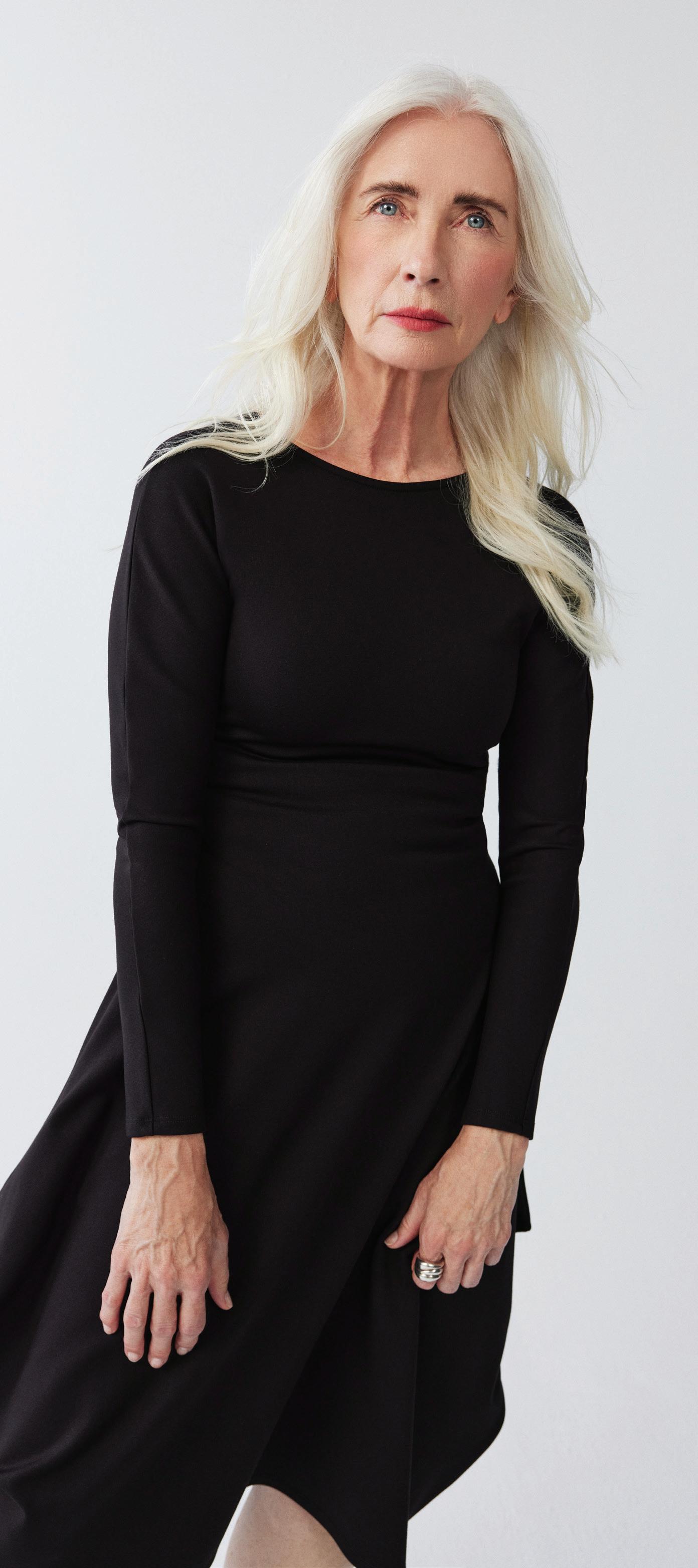














Benjamin Moore recently announced their Colour of the Year for 2025 is Cinnamon Slate (2113-40), a soft blend of heathered plum and velvety brown. “As the use of more saturated colour in design has increased in recent years, we are seeing a growing interest in more nuanced colours, whose undertones add intricacy and dimension,” said Andrea Magno, Director of Colour Marketing & Design at Benjamin Moore. The 10 hues of the Colour Trends 2025 palette have been selected for their “quietly colourful nature” and range from a versatile, creamy white (Glacier White, OC-37) to a moody, deep graphite-green (Ashwood Moss, 1484). benjaminmoore.com/en-ca ARE QUIET COLOURS THE NEXT TREND IN HOME DÉCOR?

the space.

A shot of colour is added with wallpaper in Morris & Co's “Willow Bough” from Ben Pentreath’s The Queen Square Collection.

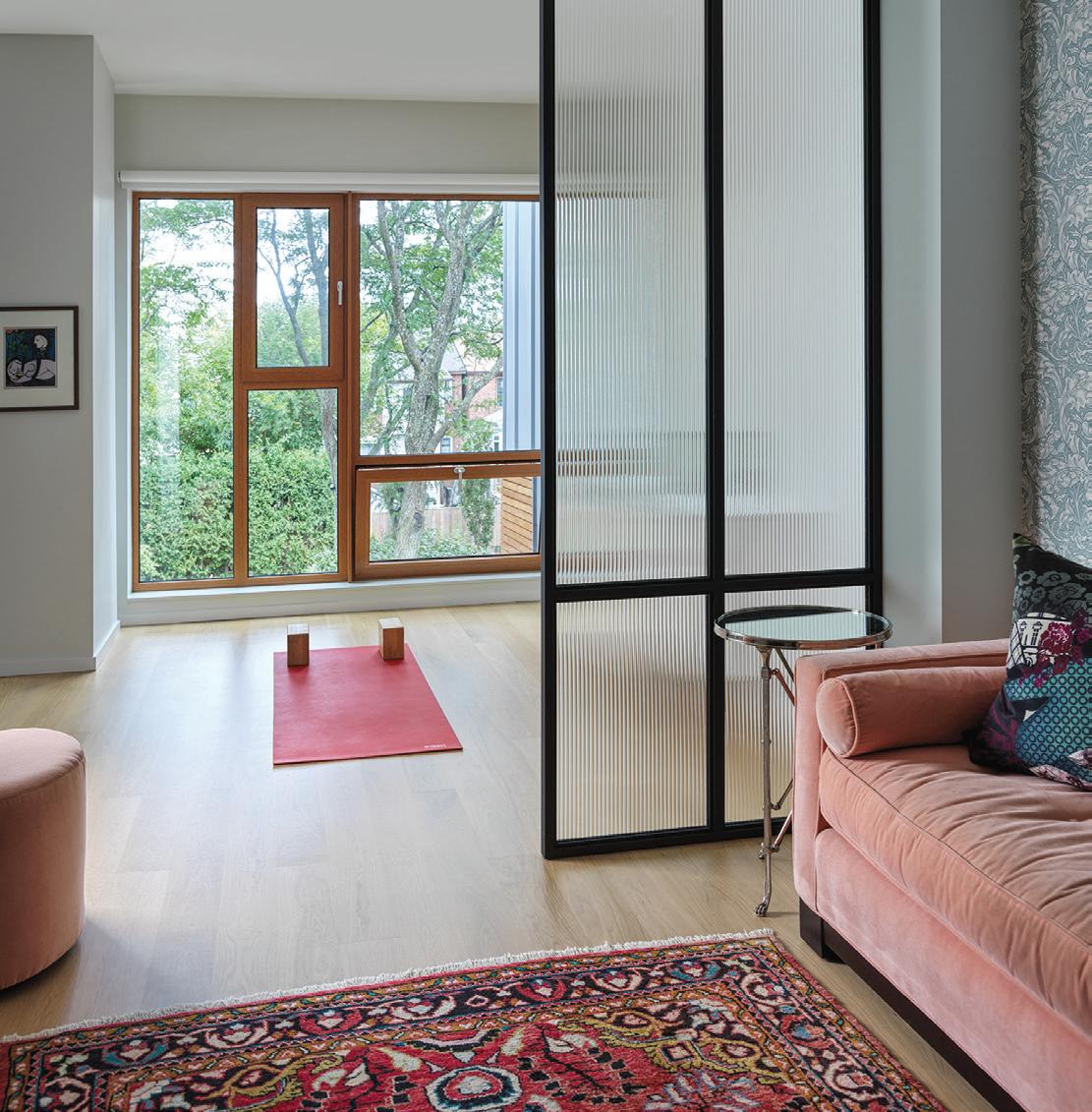
this 100-year-old toronto home has been completely reimagined, filling it with light and modernity, inside and out
BY HOLLY CRAWFORD PHOTOGRAPHY BY LARRY ARNAL
“THE HOMEOWNER HAS SUPERB TASTE, and she wanted a cozy space. She’s very inspired by Danish hygge and wanted to incorporate her love of modern French style,” said Thomas Tampold, architect and owner of Yorkville Design Centre. Tampold was tasked with the complete reimagining of the interior and exterior of this classic Toronto red brick home. The result is an inviting new space that connects the interior to the garden and exudes both the warm comfort of hygge and sophisticated Parisian style.
The design brief included bringing in as much light as possible to the rather dark 100-year-old home, while connecting the interior spaces seamlessly to the garden outside. The original footprint of the home is narrow, so first an addition bumped the back of the house out by five metres. To gain even more valuable square footage, a typical main-floor powder room was relocated to the basement, creating an uncluttered flow —and view—from the front door to the new floor-to-ceiling glass at the rear of the home.
“The homeowner loves her garden and spending time outdoors, so she wanted a space that looked out onto the garden from the breakfast room. She also wanted the adjacent living space—she calls it her garden room—to feel like there was no separation between inside and out,” said Tampold. “Incorporating windows that go right to the floor (from Tiltco Windows) accomplishes this, and is really beautiful.”
“This really was all about bringing light into a dark, old home,” said Karin, the homeowner. “It has transformed the way I live in the house.”
Framed by a full-height view of the garden on both sides, the other focal point in the space is a three-sided fireplace built into the steps between the rooms. “It’s a clever and efficient use of space, I think,” said Karin. “It’s so nice to be able to look at the fireplace from wherever you are in the space, and it doesn’t take up a lot of room.”Constructed with a “peekaboo” slot behind it, the fireplace is clad in white Caesarstone and flanked by stairsteps in Austrian slab oak, leading down to porcelain tile that mimics the look of travertine. “I wanted something very functional leading to the outside, but not the maintenance of real travertine. This is a great option,” says Karin.
When the time came to choose colours and finishes for the kitchen, the homeowner knew what she wanted. "I didn’t want to do a whole kitchen in cream or off-white, it was too boring," said Karin, "I was very inspired by one of my favourite British design magazines, showing a stunning green kitchen."
After extending the footprint of the original house, a new exterior facing the backyard brings the outdoors in with floor to ceiling glass. The window frames are a faux teak finish, but are actually metal. At right: the three-sided fireplace and Austrian slab oak steps.
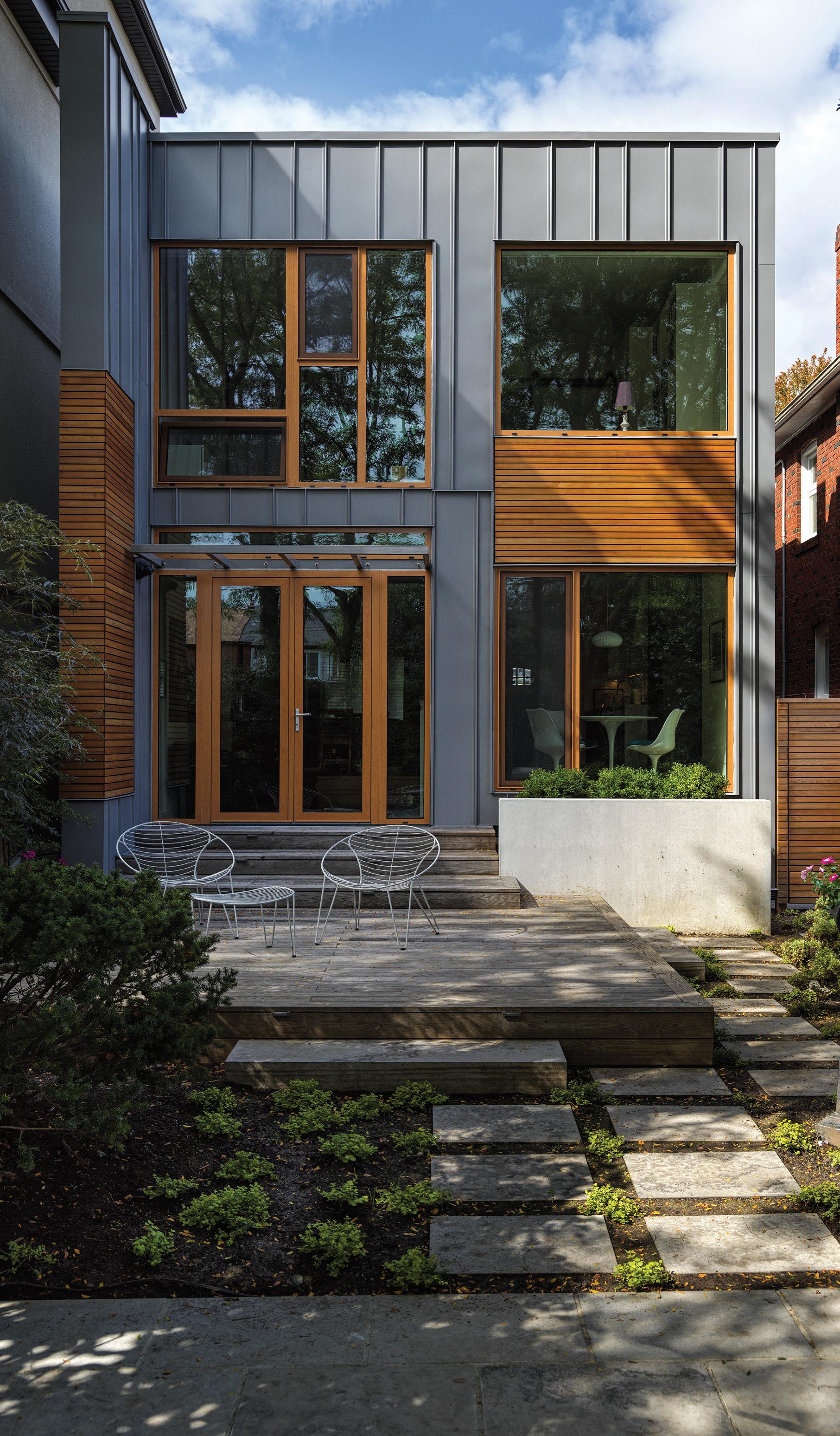
Faux-marble quartz countertops, subway tile backsplash and a sloping custom hood complete the kitchen.
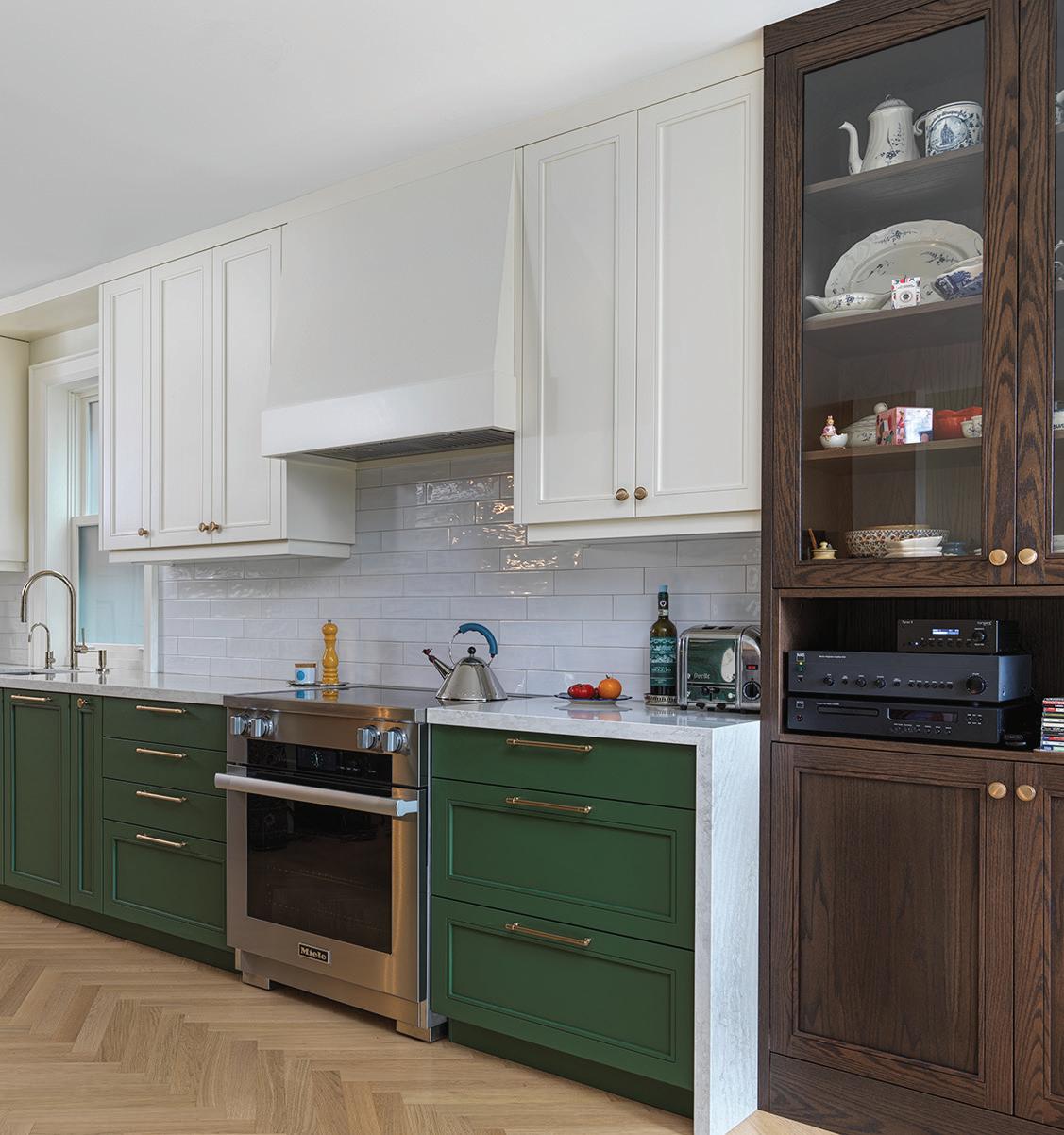
Immaculately designed and crafted walnut drawer inserts allow for every kitchen utensil and cooking spice to have its perfect place.



Without space for an island in the narrow kitchen, the rich green colour the homeowner loved (Farrow & Ball Duck Green) was applied to the lower cabinets, while the uppers are in a soft cream shade (Farrow & Ball Pointing). A cabinet in American walnut with glass doors creates space for the homeowner to display her collections and reads like a piece of furniture.
In the dining area, a Saarinen tulip table takes centre stage on the herringbone white oak floor, along with a light fixture the homeowner found at Roche Bobois hanging above. "I purchased the table at a charity silent auction years ago and added the chairs later with cushions in a favourite shade," Karin said.
A few steps down, in the sunken garden room, a favourite piece of art the homeowner inherited from her father takes pride of place. "He bought it at auction when I was in my twenties, and it's actually the same age as the house. There is a label on the back from a gallery in Paris dated 1924, the same year the original house was built."
Upstairs, Tampold designed a multi-use studio space that can be separated by sliding divider walls, created with reeded glass in black metal frames (designed by Tampold and built by Shower Deluxe). Here the homeowner has an airy, light-filled space for working and practicing yoga, that easily transforms into a guest suite. Built-in cabinetry creates closed storage as well as more display space in the office area, and a desk by Bruno Moinard (Paris Paname writing desk and chair for Roche Bobois) looks over the back garden. Atop the desk, a very special Lalique porcelain lamp selected by the homeowner while shopping with Tampold.
"I love designing a building from the inside out," said Tampold," I see the interior architecture as a reflection of the outside and vice versa. So really looking at it as a sculpture, and that was very important to the design. How you read the space and how you move through the space."
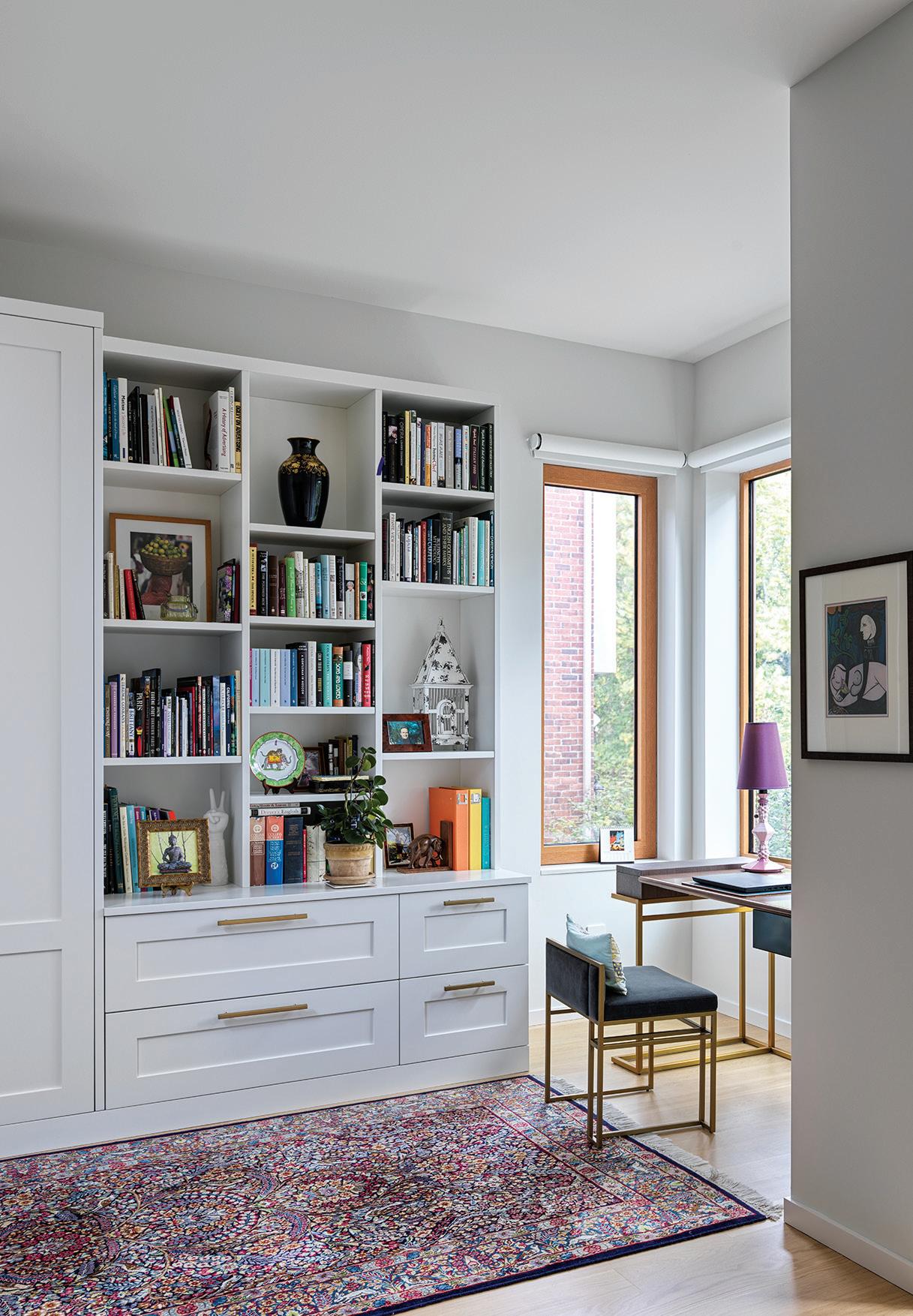

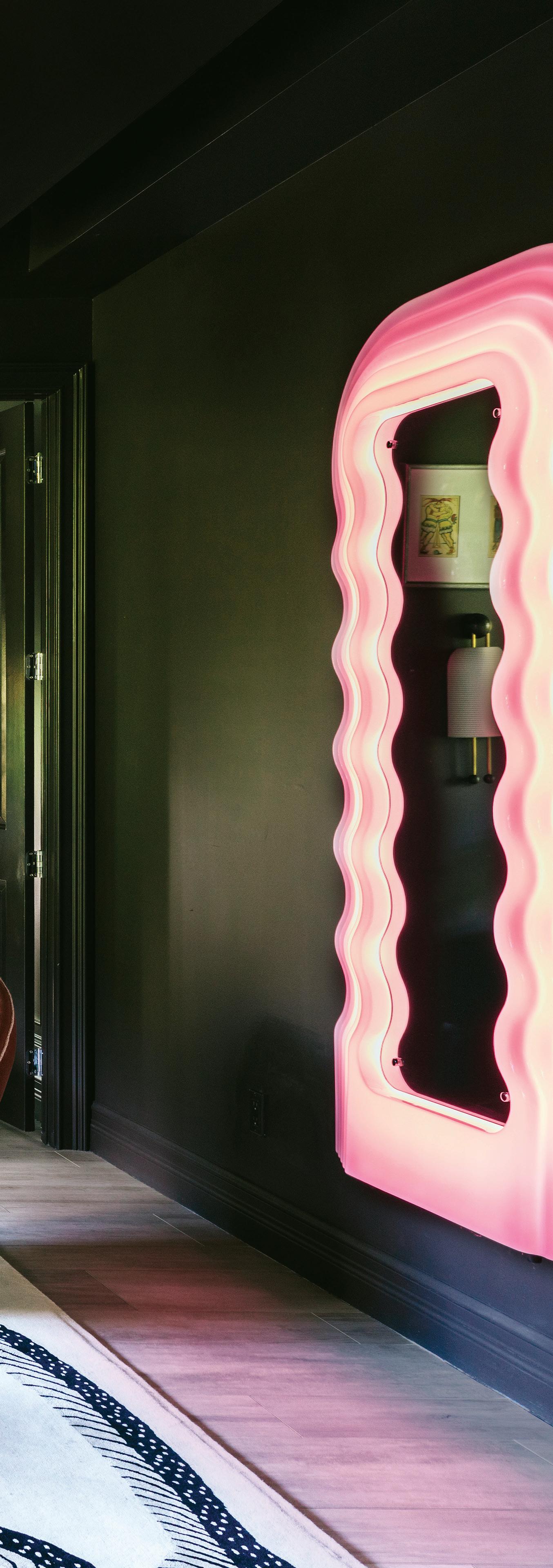
interior designer gillian segal brings a palm beach home to life with glamour, vintage flair and loads of personality
BY HOLLY CRAWFORD
Palm Beach is one of those places that inspires the imagination. The South Florida vacation destination is known for its stunning beaches, legendary resorts and chic shopping, but also for its unique influence on style. It’s both a fashion and interior design look that is all at once glam, preppy and boldly colourful, with a dash of kitsch.
When interior designer Gillian Segal was asked to elevate a client’s standard builder’s spec house into a custom home, she set about creating a unique space with a whimsical, modern take on classic Palm Beach style.
“We were really inspired by the classic Palm Beach aesthetic, but wanted to find a way to modernize this and add a sense of edge and whimsy,” said Gillian Segal from her Vancouver design studio. Segal, principal of Gillian Segal Design, boasts a portfolio of spaces from across Canada and beyond, including this unique Palm Beach project.
One of the most striking rooms must be the living room, cloaked in a deep, rich black-brown paint colour. A bold colour choice, but a departure from the pinks, greens and blues we most commonly associate with the Palm Beach aesthetic.
“The wall colour is Benjamin Moore Deep Caviar,” said Segal, “the client had selected it before we started working together. We added in the pinks, including the Ultrafragola mirror.” The illuminated mirror is a cult design piece created in 1970 by Ettore Sottsass and can be found in museums—and celebrity homes—around the world. Along with the soft pink upholstered furniture and gleaming, curved lines of the console, this room boasts loads of cool character and unique appeal.
In direct contrast, a space leading out to the pool is refreshingly white and bright.
“This room is off the pool, so we wanted it to have a more light and airy feel,” Segal said. “We designed a light installation of Charlotte Perriand sconces, which is one of the client’s favourite features.”
The lighting scene creates what reads like an art installation with a series of the French designer’s minimalist pieces installed on the wall behind the sofa. Two deep armchairs add a dash of bold pattern and colour. “The chairs, we had made in a Kelly Wearstler fabric to have a playful moment in an otherwise monochromatic room.”
In a combination living and working space, Segal chose again to drench the room in one colour, but here in a deep gray green. “We designed the custom millwork and wanted to “dunk” the whole room in one colour—we landed on Farrow & Ball’s Card Room Green, which has since become one of my all-time favourites,” she said. “This is an all-time favourite room too!”
The built-in storage and desk are beautifully detailed with rounded edges and curved molding, all finished in the same paint as the walls, ceilings and trim creating a seamless and peaceful space.
>>
A pair of armhairs in a colourful Kelly Wearstler pattern have a view to tropical foliage and the pool outside.
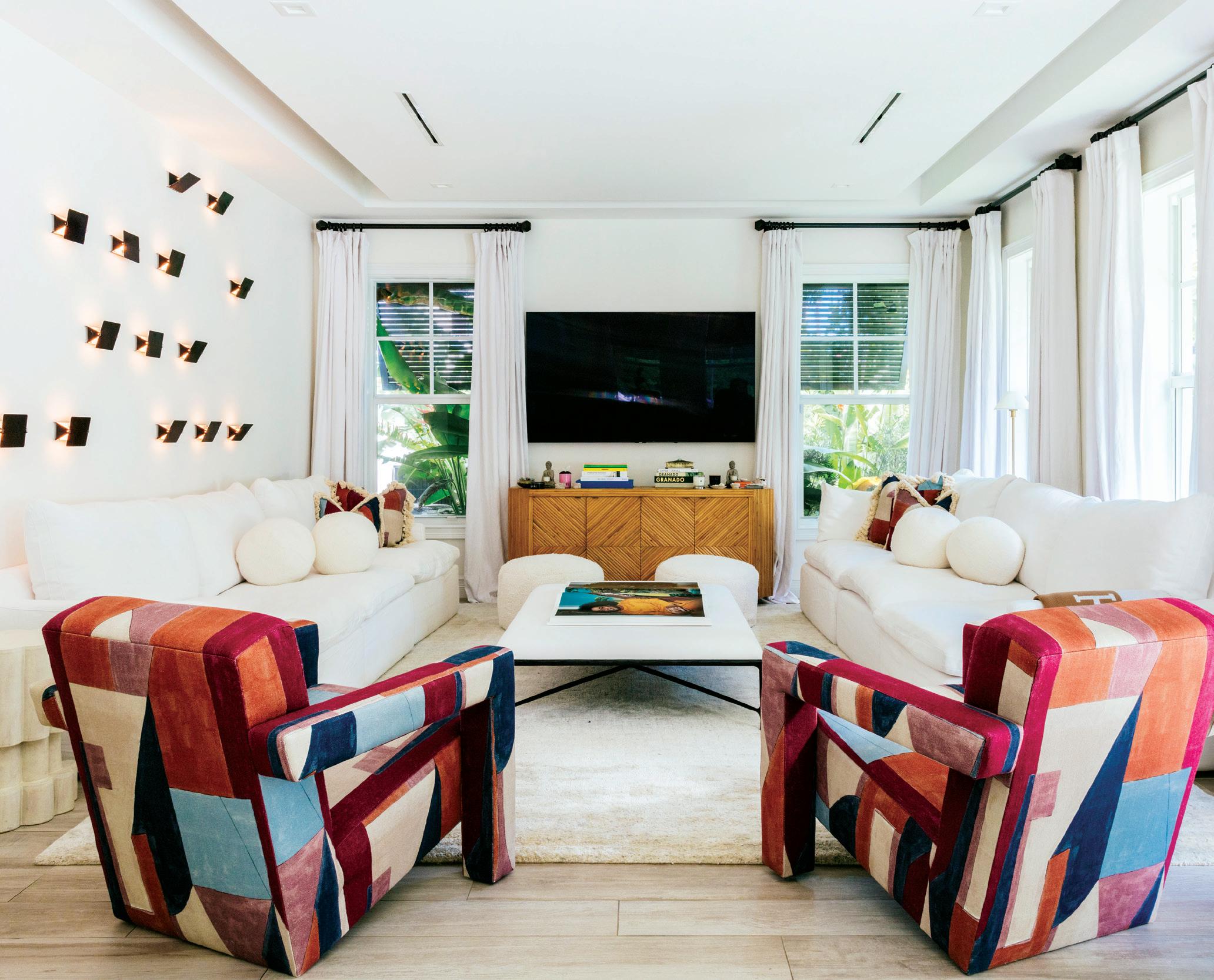


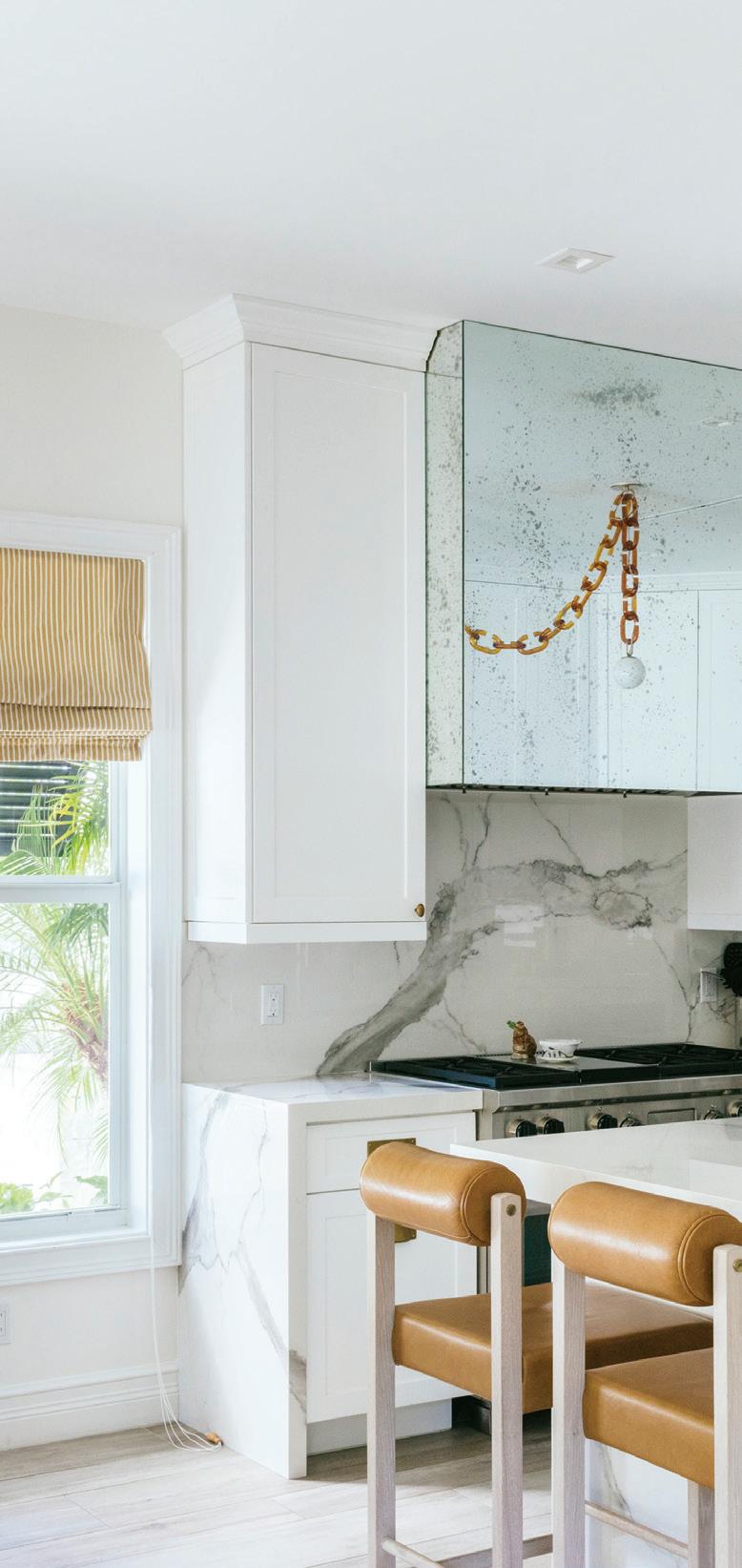
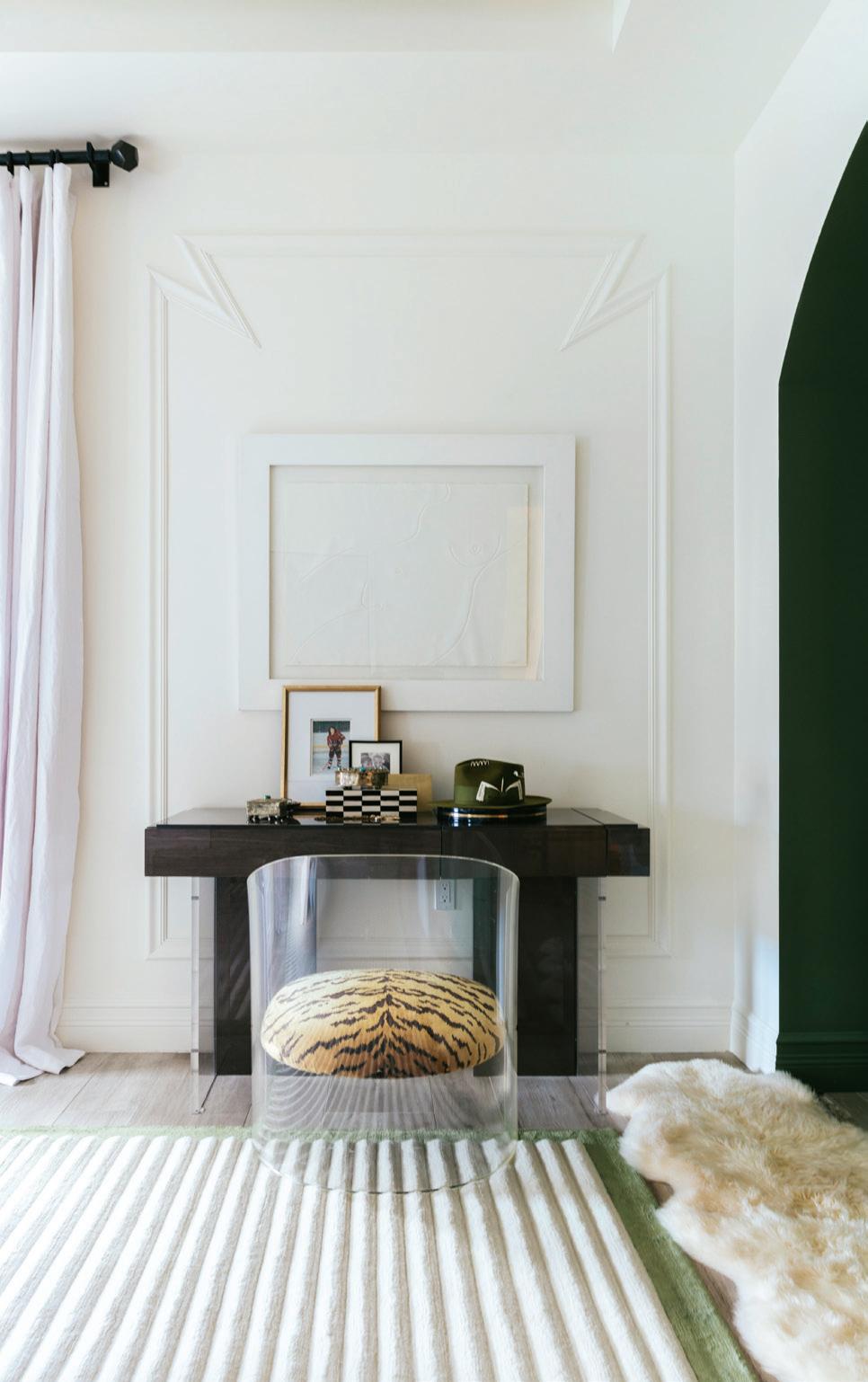
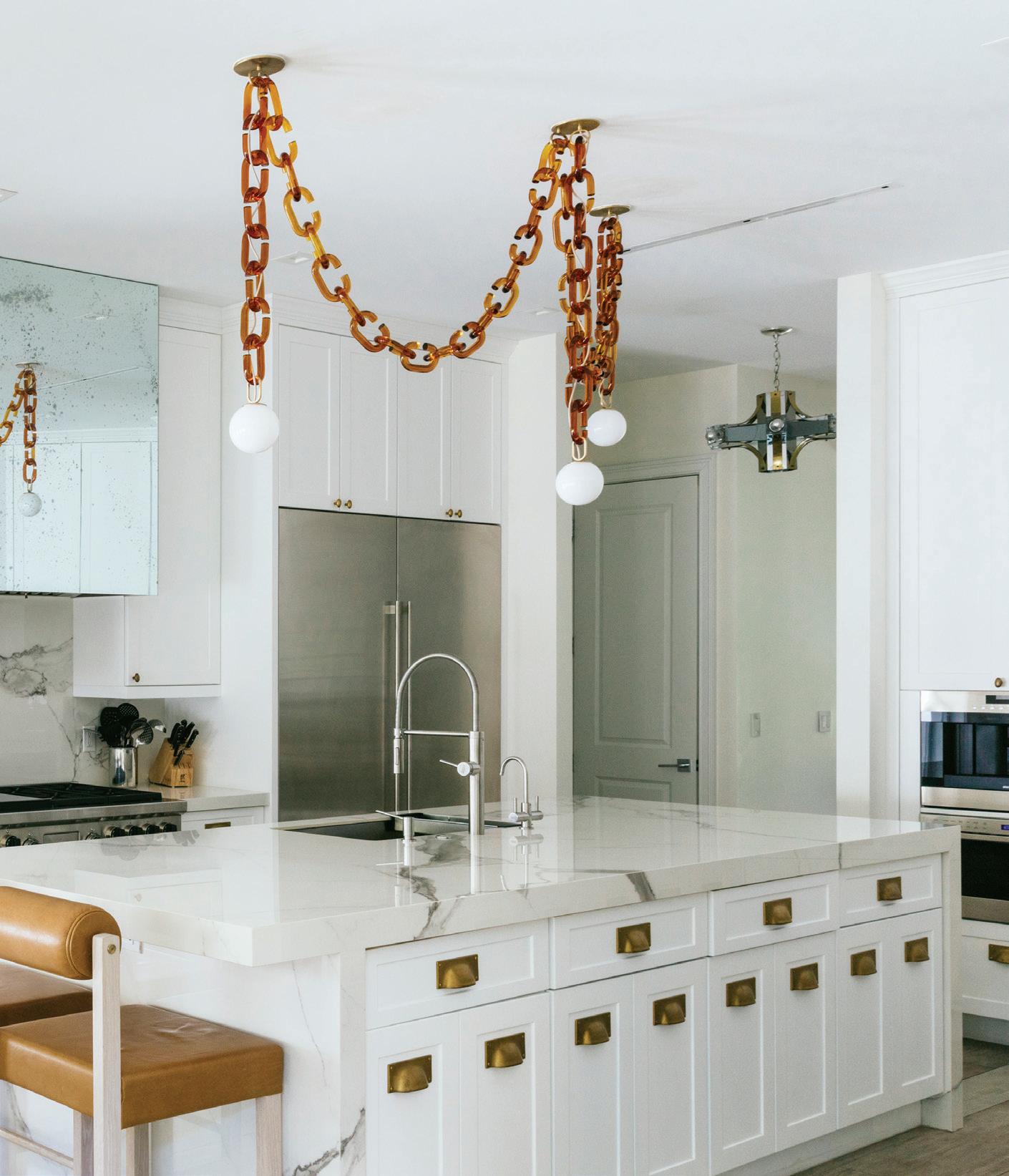
The kitchen feels like a study in vintage glam, beckoning guests to pull up a seat in the softly curved dining nook. Above the island, a light fixture created from links of glass looks like an oversized piece of tortoiseshell jewellery, reflected in the mirror-clad range hood.
“The light is by Trueing Studio and is made by the most incredible glass chain links—it is such a special piece that we commissioned for this kitchen. We wrapped the hood in an antiqued glass to double the effect of the light,” Segal said.
In the dining nook, another show-stopping light fixture, but this time vintage, hangs over a bespoke dining table by Gillian Segal Design mated to chairs by Kelly Wearstler.
“The light fixture is a fabulous vintage piece that was found locally … as a nod to more traditional Palm Beach style, we did the roman shades and the tops of the Kelly Wearstler chairs in a matching ticking stripe,” said Segal.
The main floor powder room also strikes a more traditional Palm Beach style cord with loads of texture in rattan and wallpaper.
“This was a super fun room to design! The lead time for custom millwork was crazy, so we pivoted and found a vintage dresser that we transformed into the vanity. We wanted this powder room to be bold and material-rich, so dual tones of marble and two wallpapers (a grasscloth on the walls and print on the ceiling) made for a special moment,” said Segal.
In a project with so much detail and character, could a designer choose a favourite piece? “Overall, I love how every room has a unique vibe and feel to it. If I had to pick one piece, it might be the vintage lights hanging in the office.”

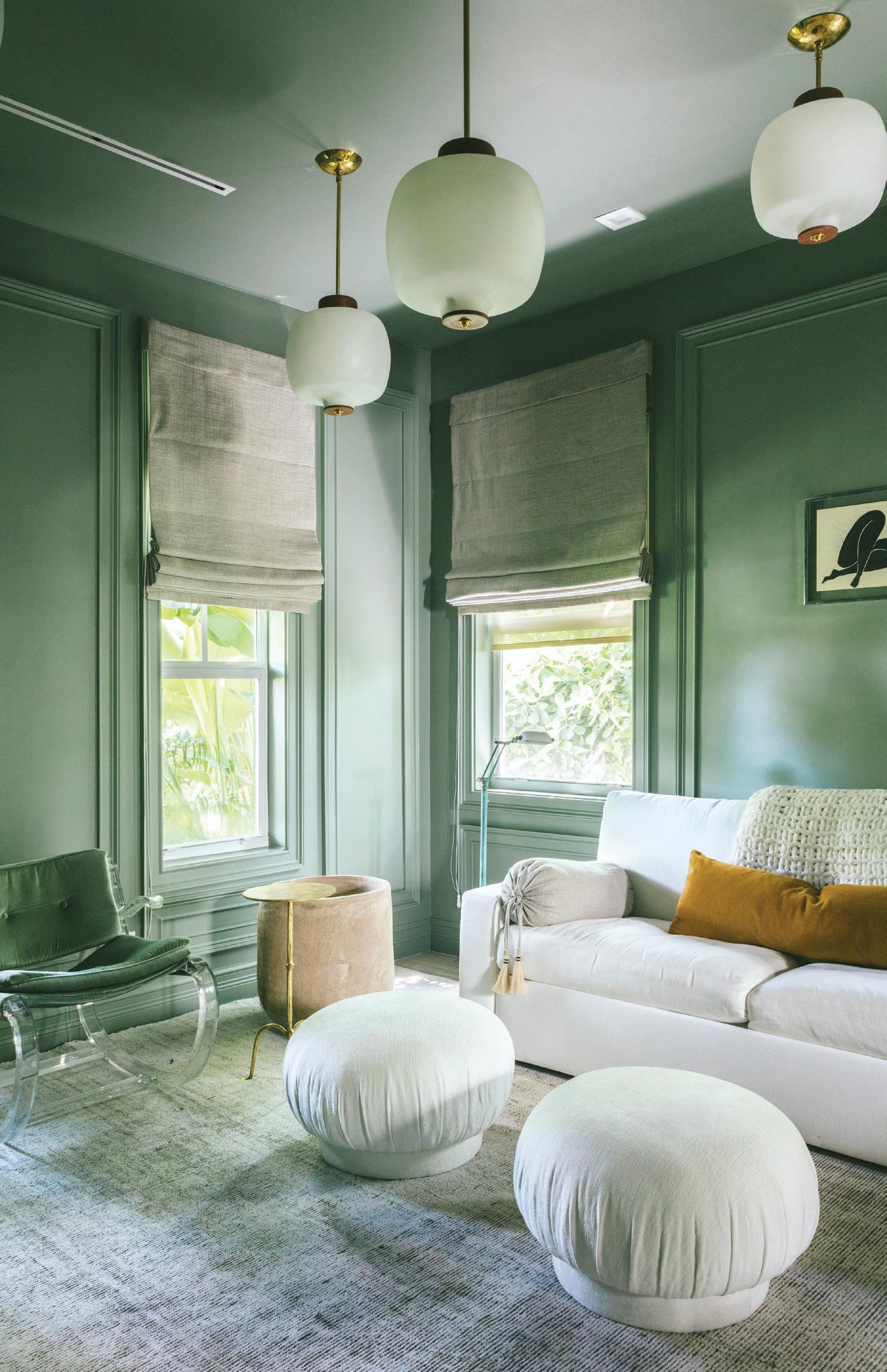

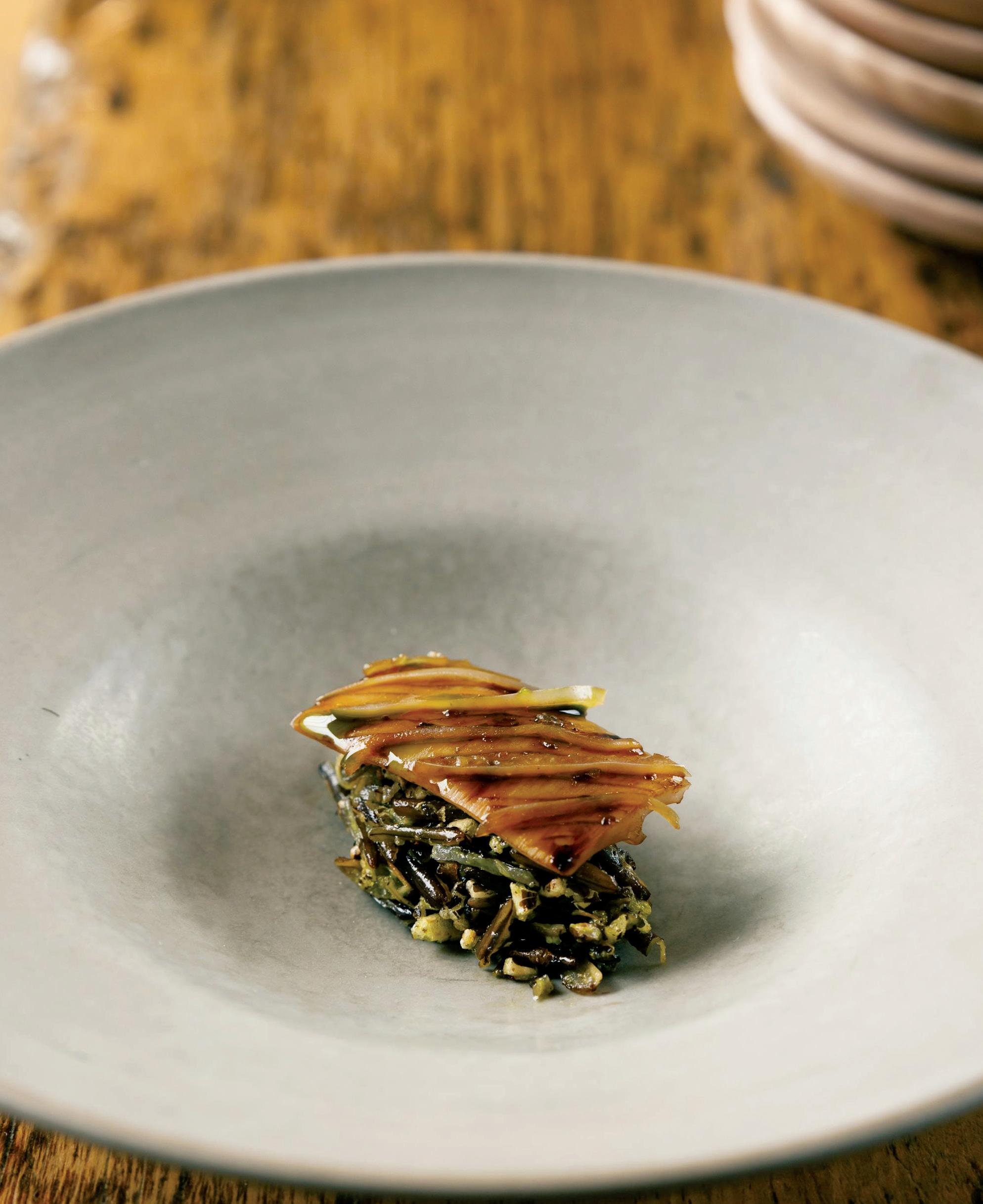
Michelin recently announced the 2024 restaurant selections for their renowned guides in both Toronto and Vancouver, with new stars awarded and an expanded coverage area. They also revealed the first Michelin Guide Quebec will be released in 2025 and will feature culinary gems from across the province. The Toronto guide (in its third year) now covers restaurants beyond the city centre and sees new stars awarded to four restaurants. One Michelin Star was awarded to DaNico (Toronto, Italian cuisine); Hexagon (Oakville, contemporary cuisine; Restaurant Pearl Morissette (Jordan Station, contemporary cuisine) and The
Pine (Creemore, Chinese/contemporary cuisine). Restaurant
Pearl Morissette also received a Michelin Green Star for their sustainable initiatives that include sourcing ingredients directly from local farmers, a two-acre regenerative garden that supplies herbs, eggs, flowers, fruit and vegetables for their seasonal menu, overwintering and cellaring techniques in the garden, native planting and indigenous ingredients. The Vancouver guide sees one eatery added with One Michelin Star awarded to Sushi Masuda, joining the nine other one star restaurants in the city. guide.michelin.com/ca/en
What does it take to create the nuanced flavour inside the iconic bottle of grand marnier?
We visit cognac, france to get a glimpse behind the scenes, and in the cellars BY HOLLY CRAWFORD
s we walk up the drive, gravel crunching under our feet, the château reveals itself. Here, in the small village of BourgCharente near Cognac, France stands the house and heritage of Grand Marnier.
We're visiting the Château de BourgCharente, a 13th Century moated castle that was converted into a grand French château in the 1500s. It's here that we'll learn how Cognac and the essence of oranges come together to create Grand Marnier, from master distiller Patrick Leger.
Before we ensconce ourselves in the grandeur of the chateau's drawing room, it's time to see firsthand an ingredient that is at the heart of Grand Marnier. Cordon Rouge, the main expression of Grand Marnier—and the bottle most of us know—is comprised of 51 per cent fine French Cognac and 49 per cent exotic bitter orange. Not just any orange makes it into this bottle though. Grand Marnier sources a rare variety of bitter orange from the Caribbean (citrus bigaradia), the same as they have since its inception.
It was Louis-Alexandre Marnier Lapostolle who had the vision to add the flavour of orange to Cognac in the late 1870s. At the time oranges were a rare and exotic luxury item, usually enjoyed only at special occasions. A connoisseur of fine Cognac, he thought the
two flavours would marry perfectly.
"The creation of the bitter orange perfume is the same method we have used since 1880," said Leger. The recipe for the distilled essence of orange is kept a secret, but the soaring warehouse is filled with sacks of dried peel, perfuming the air with citrus.
Citrus bigaradia oranges are handpicked while still green, and the peels are dried in the sun—an important step that encourages flavour retention from essential oils found in the skin. The dried peels then make their way to the distillery at Château de Bourg-Charente, where they are macerated in a neutral alcohol. After slow distillation, only the purest essence is retained.
And this is where the story of the brand and bottle we know today begins, and it takes us to the city of lights, Paris.
In 1880, when the liqueur was originally launched, Marnier Lapostolle called it Curacao Marnier. Marnier Lapostolle was friends with an ambitious and successful hotelier, Cesar Ritz, legendary founder of The Ritz Hotel. As the story goes, when Ritz tasted his friend's new liqueur, he thought the bottle of Curacao Marnier needed a name better suited to the grandness of the drink. "Grand Marnier, a grand name for a grand liqueur."


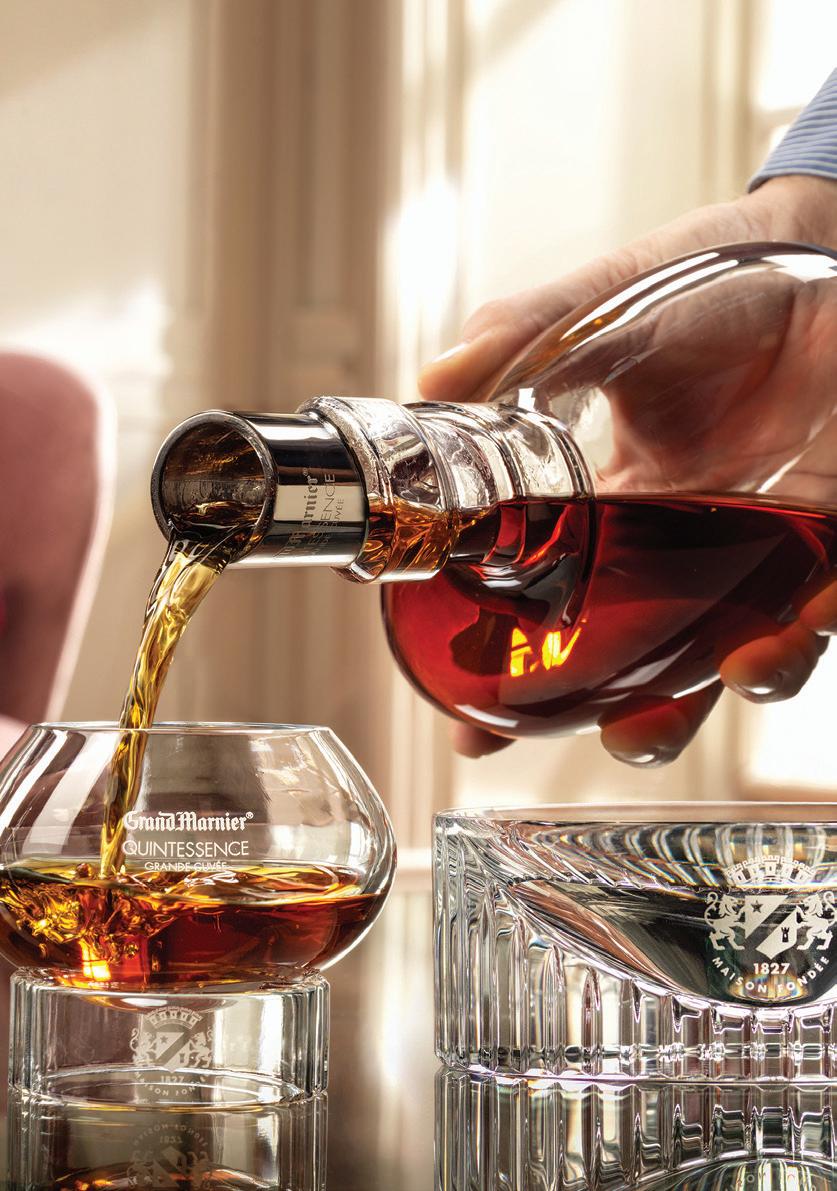


By 1892 Grand Marnier had been trademarked with the name, traditional seal, red ribbon and bottle silhouette appearing much as is does today.
In the heady days of Belle Epoque-era Paris (1890-1914), new experiences opened for Parisians. These decadent times included the first shows performed at the Moulin Rouge, and international expositions that attracted visitors from around the world. During these years a Parisian soirée was not complete without a bottle of Grand Marnier, and it was found served in the most prestigious hotels including The Ritz and The Savoy.
This fixed the aura of Grand Marnier as quintessentially French, exuding a heritage of charisma and sophistication. the CognaC
At the heart and soul of Cognac are the grapes, and you can see that in the vineyards surrounding Bourg-Charente.
At the Pinard Distillery in Angouleme, vines heavy with Ugni Blanc grapes are just a few steps from the front door. It is here that visitors can see a traditional method of distillation in copper stills. It's also where we meet Bisquit & Dubouché (fellow Campari Group brand) Global Brand Ambassador Vincent Chappe; to have our first sip of the powerful eau-devie that will one day be transformed into the golden amber liquid in their bottles.
For those grapes outside to be transformed into Bisquit & Dubouché Cognac, traditional methods are still utilized. Grapes are first distilled in copper pot stills. Unlike other spirits, each batch is double distilled for 24 hours to develop a highly aromatic "heart" in the eau-de-vie that will eventually be Cognac. This powerful, clear liquid will be aged in oak casks, and it is also where Cognac takes on its distinctive colour.
Cognac is a French AOC (Controlled Designation of Origin), and all grapes must be harvested in the vineyards of the Cognac region. These grapes are divided into crus (growing areas) that have a particular soil type, impacting the characteristics of the final product.
The Cognac used in Grand Marnier comes from five crus: Grande Champagne, Petite Champagne, Borderies, Fins Bois and Bons Bois. After aging, the master blender selects from various crus and vintages to create a complex, well-balanced Cognac prior to the "grand marriage" with bitter orange essence. . the paradis
Back at Château de Bourg-Charente, we find our way down what looks like a medieval-era stone staircase to a cool, dark room. This is the "paradis." To Cognac lovers, this is just how is sounds: paradise.
While the aging cellars are actually warehouse-like buildings above ground, the ancient cellar of the château houses the company's "paradis" where oak casks and demijohns (a large glass container with a wicker cover) house rare and vintage Cognacs, some dating back to the early 1900s.
Here a long, wooden table and chairs sit in the centre of the cellar, surrounded by oak casks heavy with vintage Cognac and arched, stone walls quarried centuries ago. It's a fitting location to taste some of Grand Marnier's more exclusive creations, led by the master blender himself.
While Grand Marnier's finer expressions should certainly be savoured, a cocktail-mixing session in the château's sumptuous surrounds showcases the versatility of Cordon Rouge in mixed drinks.
"This is my favourite way to enjoy the Grand Marnier Cordon Rouge, in a Grand Margarita," Leger said. >>
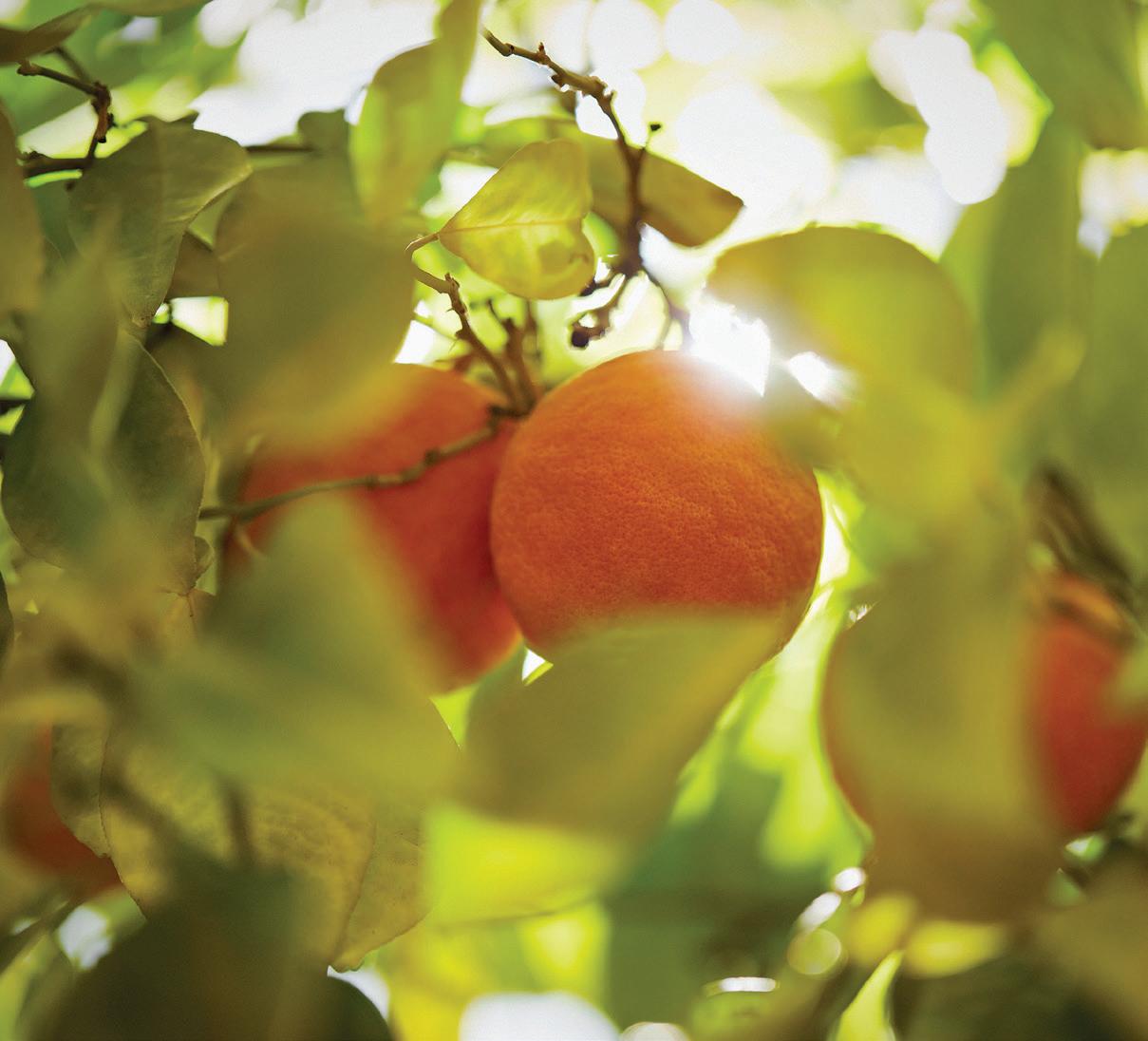

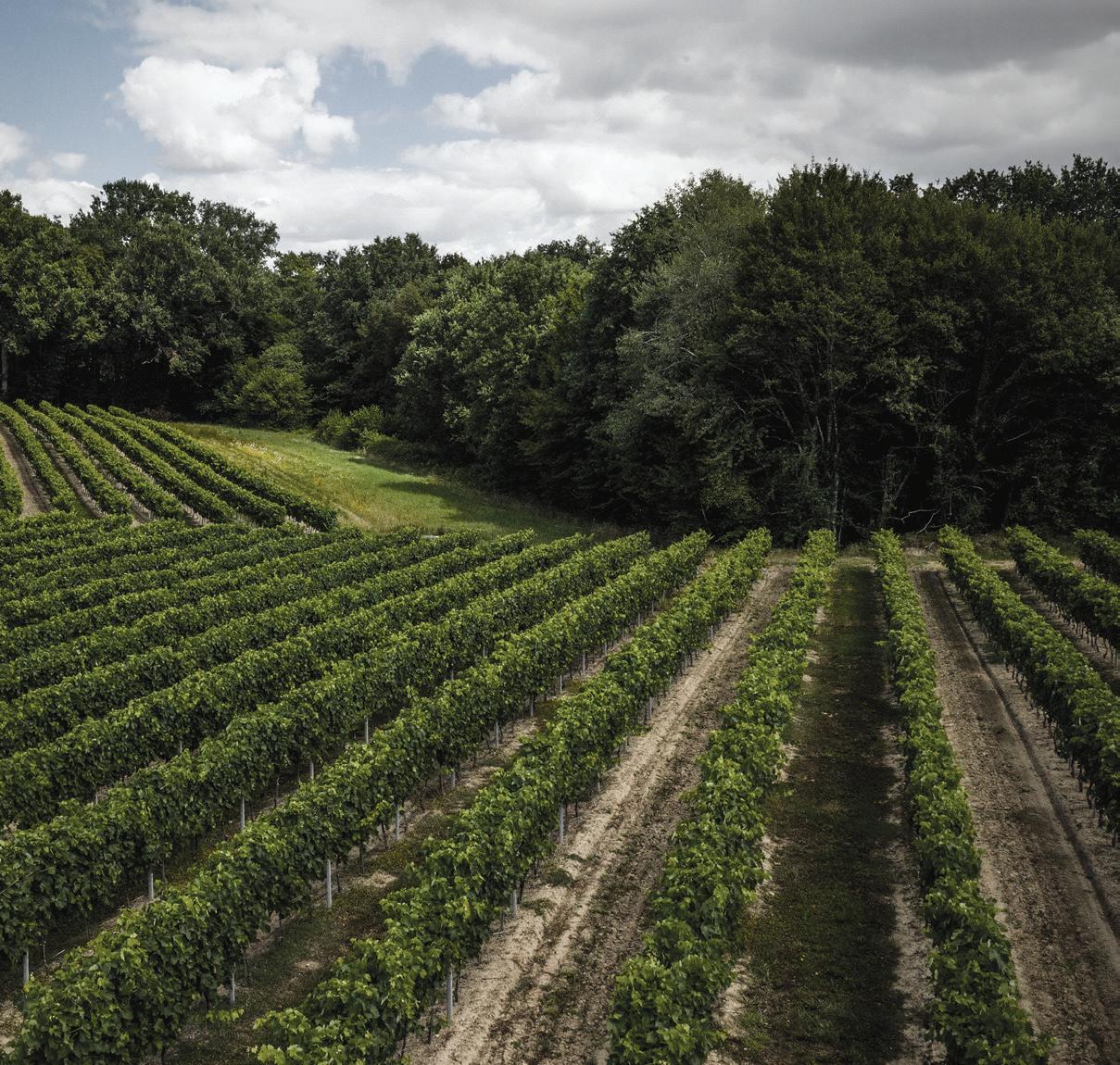



Clockwise from top left: tanks at the Grand Marnier distillery, Château de Bourg-Charente, the paradis at Château de Bourg-Charente, a demmijohn of Cognac.
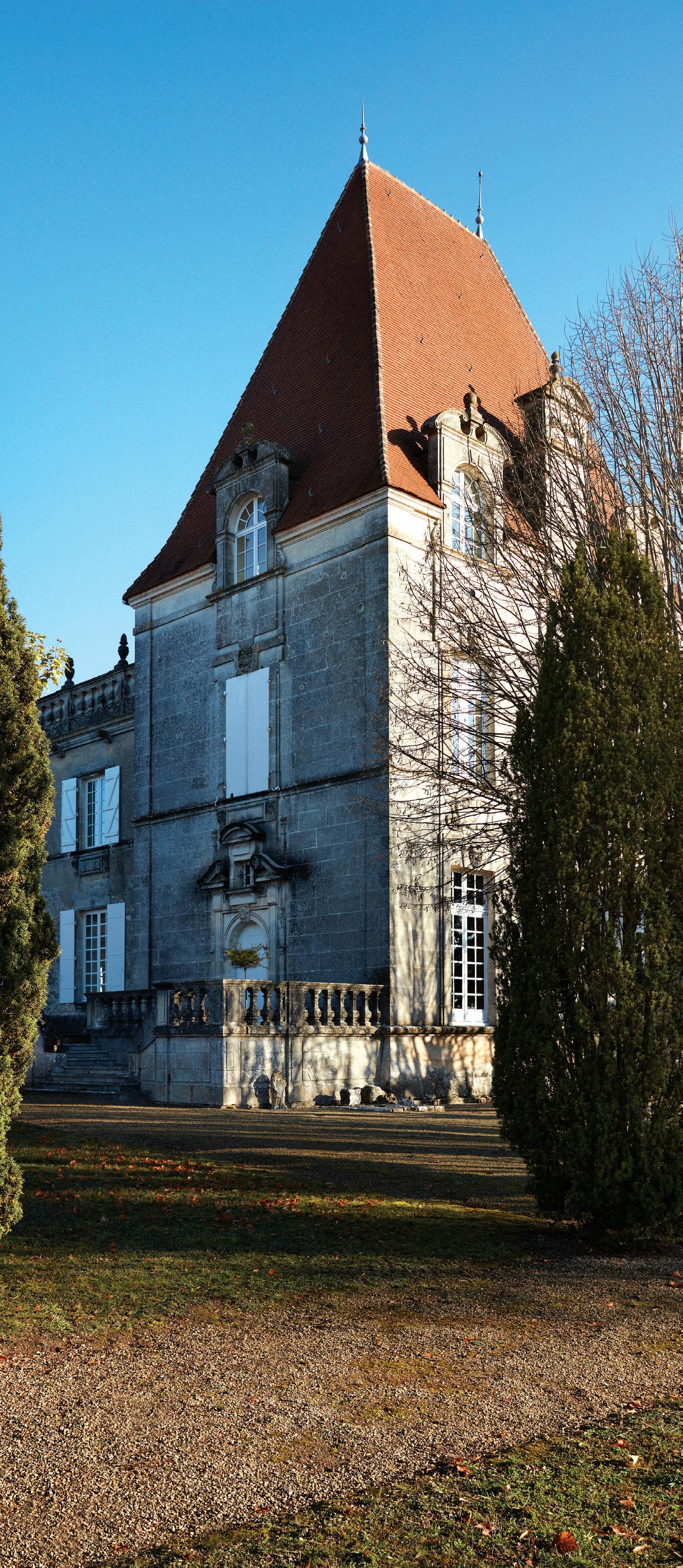

Set in a central location in the village of Bourg-Charente, the home of Bisquit & Dubouché is a charming 19th Century château. It's here we again meet Bisquit & Dubouché Global Brand Ambassador Vincent Chappe to explore the history of the brand and taste the finished product.
Acquired by Campari Group in 2017, Chappe remained with Bisquit & Dubouché, seeing it through a global relaunch, including the introduction of new contemporary packaging for this French heritage brand.
Bisquit & Dubouché has been making Cognac since 1819, when it was established by Alexandre Biscuit and Adrien Dubouché. It's a Cognac renowned for its inimitable smoothness and complex flavour, due to a distinctive distillation method. At Bisquit & Dubouché the Cognac isn't created simply with timing, but relies on smell, mouthfeel and a great deal of experience in extracting flavours to ensure the signature floral and fruit notes it's known for.
Bisquit & Dubouché produces three cognacs: V.S. (very special, aged at least two years), V.S.O.P. (very superior old pale, aged at least four years), and X.O. (extra old, aged at least 10 years). The designations mark the age of the Cognac only—all three expressions share similarities in their flavour profile.
In the lounge at the château, Chappe takes us through a tasting, exploring the notes of each expression from the brand. Then a silver tray of highball glasses, a bucket of ice and upmarket ginger ale appears, and Chappe mixes cocktails.
"Cognac is meant to be enjoyed, however you prefer it. Sipping neat is delicious, but this is how I like it best."
Two storied French brands many of us think we should save for special occasion sipping. But in this case, I think perhaps the French know best, and they think we should make cocktails.
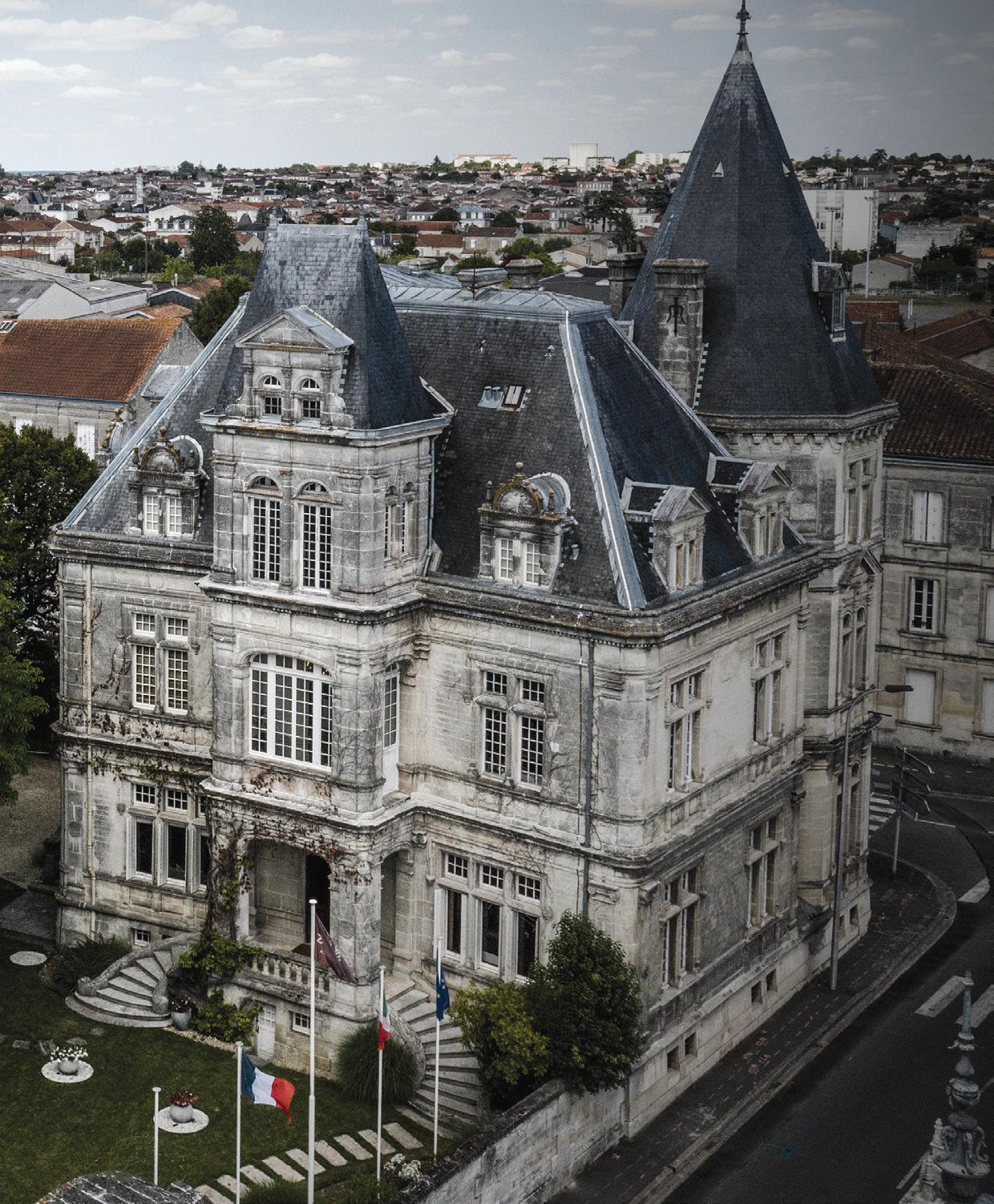


when award-winning cookbook author hannah sunderani planned to renovate her kitchen, she wanted a light, bright space to match the one of her dreams
BY HOLLY CRAWFORD PHOTOGRAPHY BY LAUREN MILLER
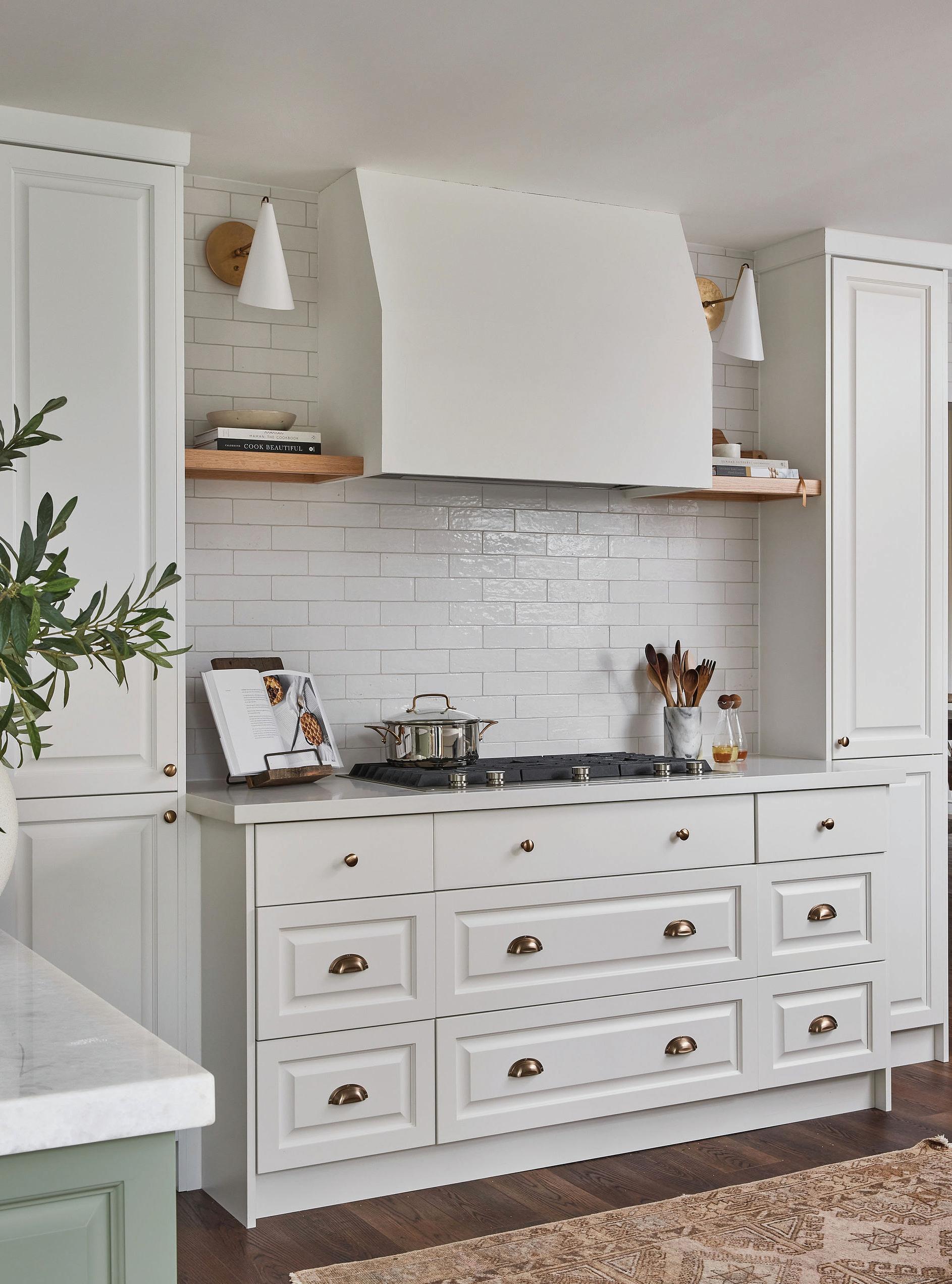
Hannah Sunderani always thought of her kitchen as a small, awkward space—one where she would never be able to have everything she wanted in a dream kitchen.
That all changed with the help of Tiffany Lee Design, who took all of Sunderani's wishes and transformed them into the practical, heart-of-thehome kitchen she has always wanted.
Sunderani is the creator and plant-based recipe developer behind the popular Two Spoons blog (twospoons.ca), as well as author of The Two Spoons Cookbook. That meant aside from the usual kitchen requirements, lots of practical space for recipe experimenting, storage and making all those lovely food photos.
The design brief included wants for a timeless, elegant space with a zen vibe that didn't feel like the current, cramped galley kitchen; a sink under the window looking out to the backyard; and incorporating an existing island as well as recently upgraded wall oven.
The result is a fresh kitchen with a classic white palette accentuated by pops of natural wood and warm metals.
Simply White by Benjamin Moore on both the walls and cabinetry creates an elegant envelope for the room. The existing island becomes the heart of the space with a coat of a muted green shade (Croquet by Benjamin Moore), that complements its existing marble countertop beautifully.

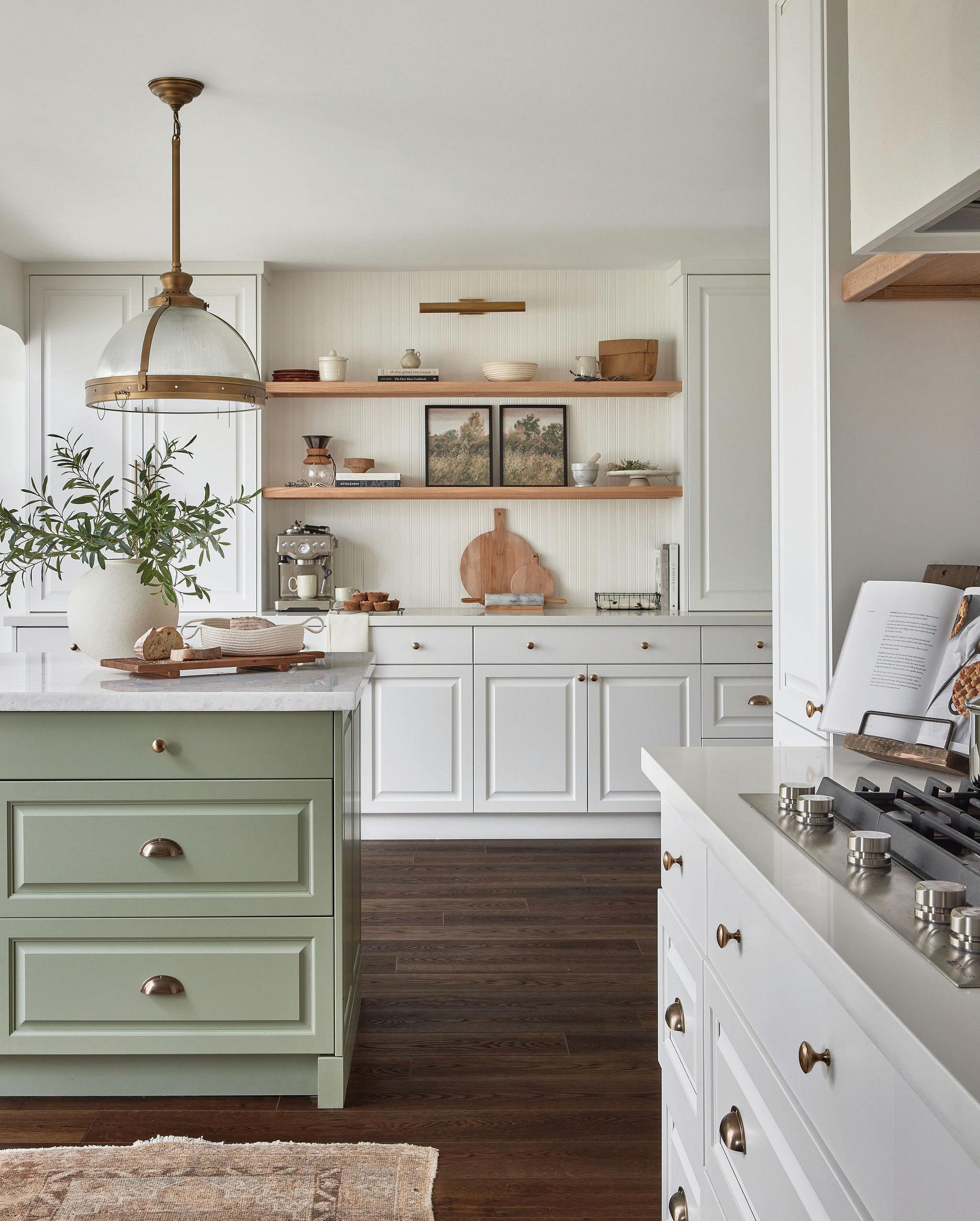

In the old kitchen, the sink was tucked in a corner. In it's new position under a window, a farmhouse sink by Kohler is accentuated by an unlacquered brass, deck-mount faucet by Kallista. Right: A wall is dedicated to storage for pantry items and small appliances, but incorporates open shelving to create a useful coffee prep area, while keeping the space open and airy. Below: An existing marble countertop is mated with new white quartz.

To complement the existing island's marble, the new countertops and tiles were selected in soft white tones. "We picked a timeless, natural stone in white brick from Nanda Tiles. I love these tiles because they are made to look 'imperfect,' which gives the kitchen a more nostalgic and old-world feel," says Sunderani. For the countertops, Pure White quartz by Caesarstone. "I absolutely love the sleek, minimalist feel of this countertop," she says.
Prior to renovation, the stove was beside the dishwasher, now the cooktop takes centre stage. "Tiffany Leigh Design had the wonderful idea of creating a 'cooktop station.' We absolutely loved this idea as it framed the cooktop so beautifully, instead of being an afterthought. It’s one of my favourite parts of our redesign," Sunderani says. The gas cooktop is by Jenn-Air, a model with beautiful iron grates, elegant brass burners, and discreet knobs in silver.
A large farmhouse-style sink blends perfectly with the natural stone tile in its new placement under the window. "I absolutely love this sink not only because it’s visually beautiful, but because it’s big enough to fit large pots and pans for cleaning. It’s also not too deep which means it’s comfortable on my lower back," says Sunderani.
On the opposite end of the kitchen, a pantry wall incorporates open shelves to display favourite items, and creates a dedicated coffee station; a great way to move a regular kitchen task to a less high-traffic area. "My husband loves coffee! It makes it an area that’s now used daily, instead of just being a display wall."
RECIPE: Perfect for an autumn night, Hannah shares her recipe for Mushroom Bourguignon with Buttery Mashed Potatoes from The Two Spoons Cookbook, awarded Silver for Health or Special Diet Cookbook at the 2023 Taste Canada Awards.

"In my dream scenario, it is a cold Friday evening and I have just come in from a brisk walk. Meanwhile, my husband, Mitch, is cooking up a big batch of this mushroom bourguignon in the kitchen, accompanied by a bottle of fine red wine. The air is rich with the savoury scent of aromatic veggies. This recipe certainly makes a dreamy date-night dinner, especially during the colder months. Mushrooms, carrot, and shallots are simmered in a bold broth sauce with bay leaves and thyme and served over creamy mashed potatoes. It is a soulful and indulgent meal to toast a hard week’s work and the relaxing weekend ahead."
-Hannah Sunderani
ServeS 6 to 8: vegan, gluten-free, nut-free, refined Sugar-free
1. Make the Bourguignon: In a small bowl, cover the shallots with boiling water and let soak for three minutes. Drain and rinse. (This makes them easier to peel.) Peel the skin off the shallots and discard. Cut small shallots in half lengthwise and bigger shallots into quarters.
2. Heat two tablespoons of the vegan butter in a large pot over medium heat. Add half of the mushrooms, increase the heat to mediumhigh, and cook, stirring occasionally, until the mushrooms are lightly browned, about six minutes. Transfer the mushrooms to a medium bowl.
3. Repeat with another two tablespoons of the vegan butter and the remaining mushrooms. Transfer the mushrooms to the bowl with the first batch of mushrooms.
4. In the same pot over medium heat, melt the remaining two tablespoons vegan butter. Add the shallots, carrots, garlic, and salt. Cook, stirring often, until the vegetables start to soften, about 10 minutes. Add the tomato paste and flour and stir to incorporate. Pour in the red wine, vegetable broth, tamari, and maple syrup. Then add the mushrooms. Stir to combine.

5. Toss in the thyme and bay leaves and bring the stew to a simmer over medium-high heat. Cook until the sauce has thickened and reduced and the veggies are cooked through, 20 to 30 minutes. Taste, and add more salt or a splash more tamari, if needed. Remove the thyme and bay leaves and discard. Cover with a lid and keep warm over low heat until ready to eat.
6. Make the Mashed Potatoes: Bring a large pot of salted water to a boil over mediumhigh heat. Add the potatoes and cook until fork-tender, 12 to 15 minutes. Drain the potatoes and return to the pot. Using a potato masher or immersion blender, blend until fairly smooth.
7. In a small saucepan, heat the vegan butter and almond milk over medium heat, whisking to combine. (Alternatively, you can use the microwave for warming.) Fold the buttery milk into the potatoes. Add ¼ cup of the coconut yogurt, salt, and pepper and fold again to combine. Add up to ¼ cup more coconut yogurt if the mashed potatoes taste too dry. Serve the buttery mashed potatoes topped with the mushroom bourguignon. Garnish with thyme, if desired.
12 shallots
6 tablespoons vegan butter, divided
1 pound (450 g) cremini mushrooms, roughly chopped
2 large carrots, peeled and roughly chopped
3 cloves garlic, finely chopped
¼ teaspoon fine sea salt
1 tablespoon tomato paste
2 tablespoons gluten-free all-purpose flour
1 cup dry full-bodied red wine
2 cups vegetable broth
1½ tablespoons gluten-free tamari
1 tablespoon pure maple syrup
6 sprigs fresh thyme, tied together with twine, more for garnish
2 bay leaves
3 pounds (1.35 kg) white potatoes, cut into chunks
½ cup vegan butter
½ cup unsweetened almond milk
¼ to ½ cup plain coconut yogurt
¾ teaspoon fine sea salt
¼ teaspoon freshly ground black pepper
the stats are clear, more and more of us are looking for no-alcohol or low-alcohol options for ourselves and our guests. here are a few we think deserve a place on your bar cart.
Explore the world of mixing mocktails with the Seedlip Trio, a perfect way to experiment with the full range in the comfort of your own home. This set includes three full-size bottles including the aromatic Seedlip Spice 94, the fresh and herbal Seedlip Garden 108, and the citrus Seedlip Grove 42 ($135); seedlipdrinks.com


Made in Ontario, Ceder’s looks as good on your bar as it tastes in the glass. This distilled, non-alcoholic spirit was developed using 18 classic gin and rare South African botanicals with zero alcohol, sugar or calories. Cedar’s products have won a number of medals for great taste— including Gold for Classic at the 2023 Spirits Business No & Low Awards. Available in four flavour profiles: Wild, Classic, Rose and Crisp, it can be used to recreate all of your favourite classic cocktails ($25); cedersdrinks.ca
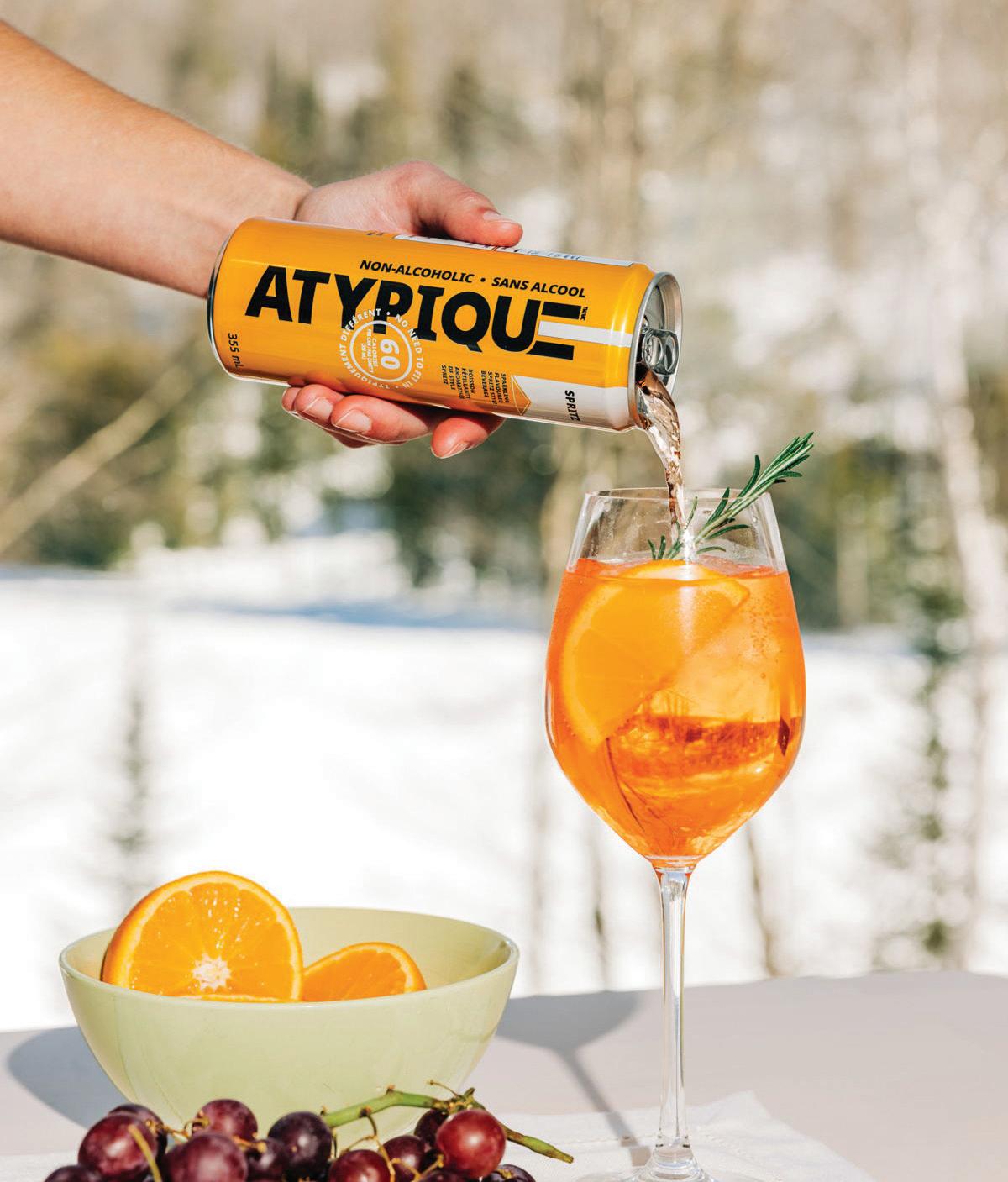
French-Canadian brand Atypique offers ready-to-pour classic cocktails, in nonalcoholic versions with just 60 to 80 calories per can. Flavours include Amaretto Sour, Gin & Tonic, Mojito, Spritz, and Spiced Rum & Cola as well as limited edition release Red Sangria and Margarita ($30/12-355mL), made in Ontario; boutiqueatypique.com
Guests mindful about moderation will love Guinness 0. The St. James’s Gate brewers remain true to tradition by brewing Guinness 0 exactly as they always have, using the same natural ingredients; water, barley, hops, and yeast; before gently removing the alcohol through a cold filtration method ($13/4-440mL; LCBO# 33989); lcbo.com; guinness.com
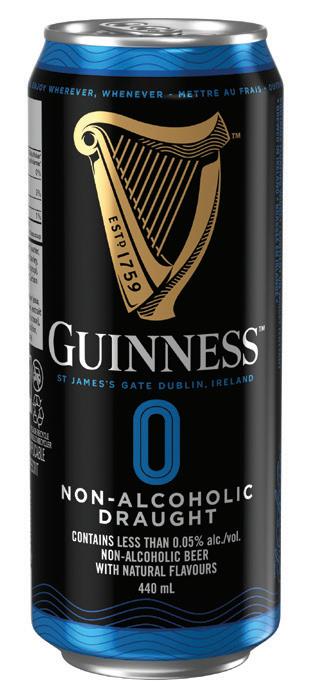
Peroni recreates the flavour of Nastro Azzurro in this alcohol-free variant. Crisp and refreshing with 0.0% alcohol ($13/6-330mL; LCBO# 27824); lcbo.com

1 small slice lemon peel
2 sprigs thyme
1 oz honey syrup
2 oz Ceder’s Pink Rose
1 oz freshly squeezed pink grapefruit juice
2 oz soda water
Dehydrated orange wheel for garnish
METHOD
> In a rocks glass, gently muddle together the small slice of lemon peel, 1 sprig of thyme and honey syrup
> Add the remaining ingredients and stir until well combined.
> Add crushed ice and top the glass with soda water
> Garnish with the remaining sprig of thyme, a zest of lemon and a dehydrated orange wheel.
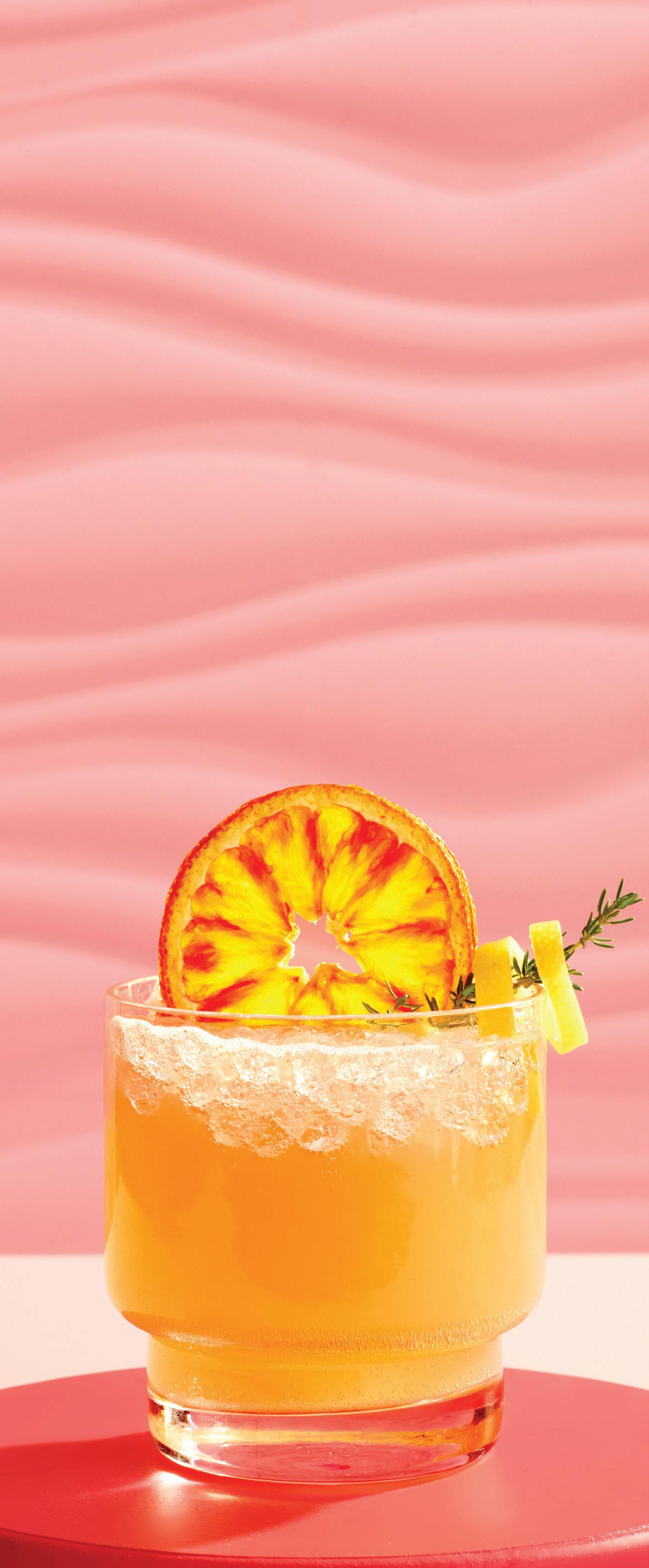
2 oz Seedlip Garden 108
1 oz unfiltered apple juice
½ oz lemon juice
½ oz maple syrup
3 oz soda water
METHOD
> Add all ingredients except soda water to a cocktail shaker with ice.
> Shake and strain into a chilled highball glass.
> Top with oda water and fresh ice.
> Garnish with an apple fan.

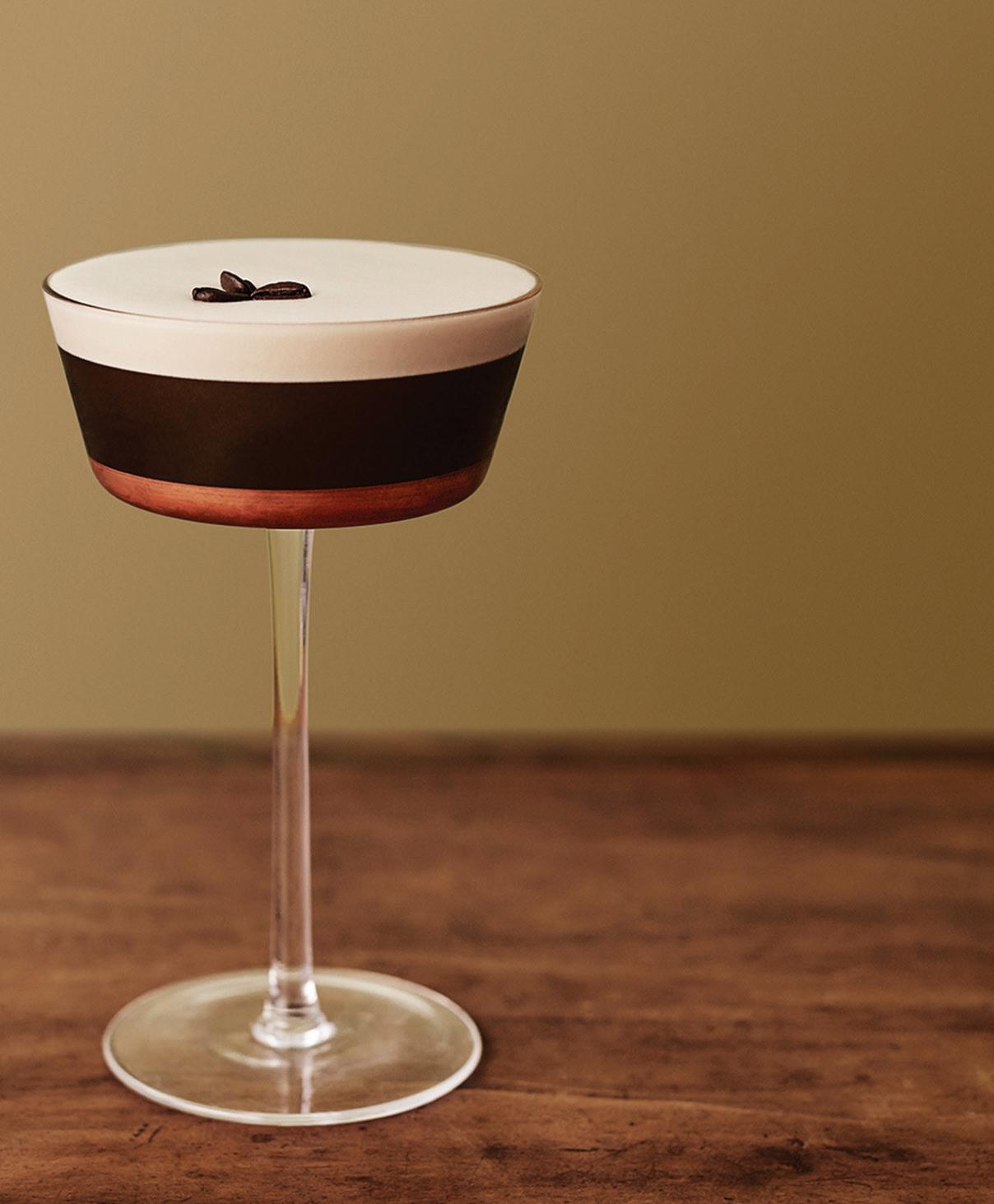
2 oz Seedlip Spice 94
2 oz cold brew concentrate
½ oz sugar syrup
METHOD
> Add Spice 94, cold brew concentrate and sugar syrup to a shaker.
> Add ice & shake.
> Double strain into a coupe glass.
> Garnish with three coffee beans.


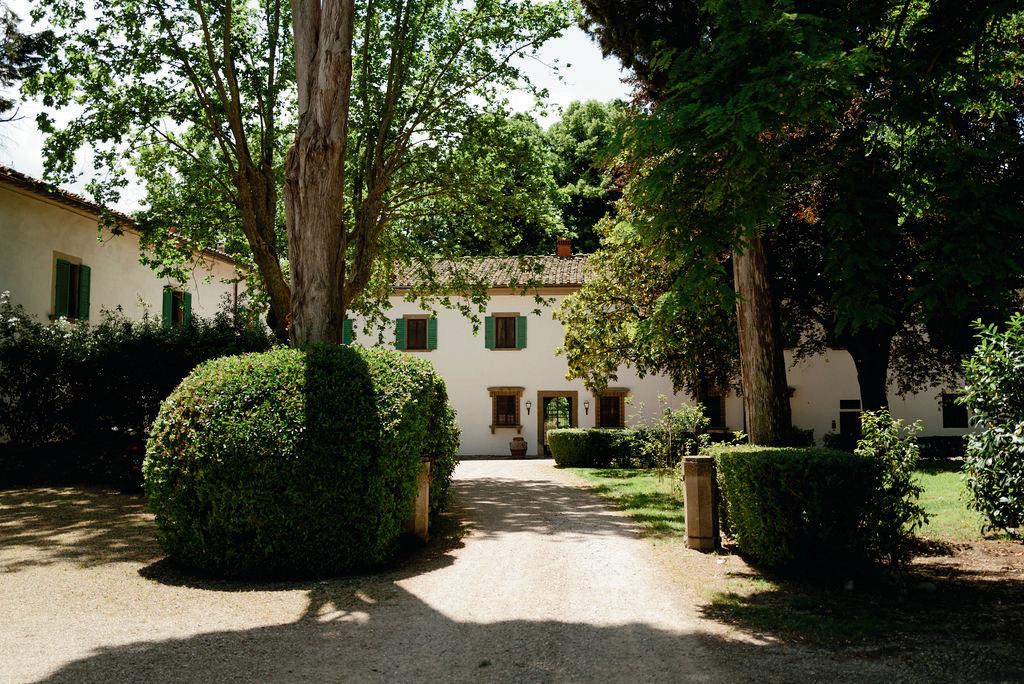
Lujure is your premier destination for booking distinctive travel. It’s where luxury meets journey. Where you can discover destinations that broaden your horizons. Our clients travel abroad in search of exotic locales and uncharted waters. At Lujure, we provide stays defined by you – your tastes, your wants, your desires.
luxury villa rentals | concierge services | bespoke experiences